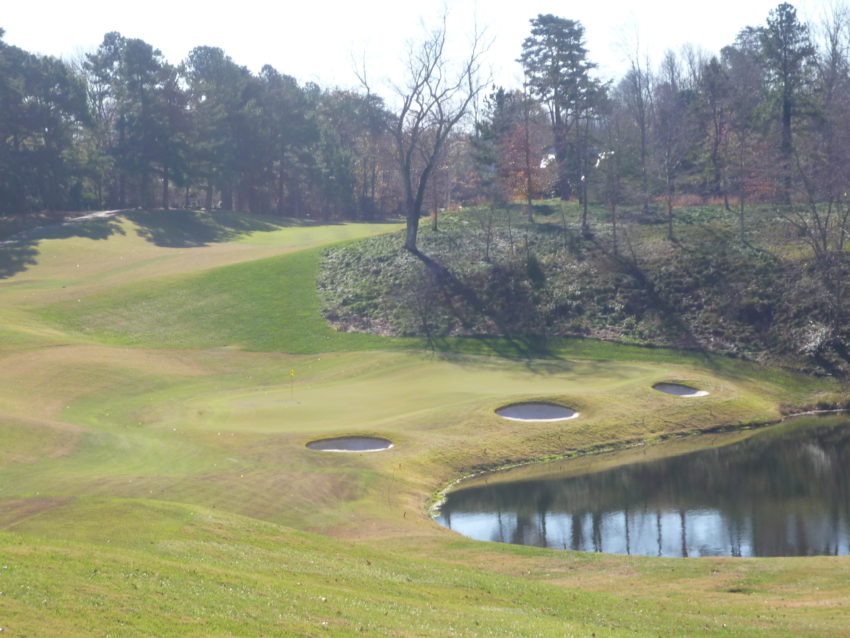
Greensboro Country Club (Farm) – Played November 2020
- Rankings: None of my four lists
- Location: 5121 Hedrick Drive, Greensboro, North Carolina
- Year: 1963
- Original Architect: Ellis Maples
- Additional Work By: Donald Steel & Jonathan Gaunt
- Course Access: Private
- Walking Rules: Carts Available
Score Card Information:
- Orange: 7,296 yards, Par 72, 75.4 Rating/140 Slope
- Gold: 7,014 yards, Par 72, 74.1 Rating/136 Slope
- Black: 6,629 yards, Par 72, 72.2 Rating/131 Slope
- Blue: 6,156 yards, Par 72, 70.3 Rating/127 Slope (Men’s), 76.2 Rating/138 Slope (Women’s)
- White: 5,708 yards, Par 72, 68.5 Rating/123 Slope (Men’s), 73.7 Rating/133 Slope (Women’s)
- Green: 5,277 yards, Par 72, 66.3 Rating/119 Slope (Men’s), 71.2 Rating/127 Slope (Women’s)
- Lime: 4,240 yards, Par 72, 62.4 Rating/110 Slope (Men’s), 65.6 Rating/116 Slope (Women’s)
My trip to Greensboro Country Club’s Farm Course took a bit longer than expected due to some weather issues. One of the many hurricanes and tropical storms this year rolled through and dumped a lot of rain just prior to my tee time date. With some additional planning, I was able to come up the next week to play. I am glad we could make it work out.
Greensboro Country Club was organized in 1909 and got started with a five-hole golf course. By 1911 they had a full Donald Ross 18 which is now known as the Irving Park layout.
The Farm Course was built in 1963 and was operated independently as the Carlson Farms Golf Course until it was purchased by Greensboro Country Club. The course underwent a redesign in 2009 with the work completed by Donald Steel and Jonathan Gaunt. The course sits on an open piece of property about 10 miles from downtown Greensboro.
Let’s get to the course. On this cool November day, my host and I headed to the first tee for an enjoyable round. Nothing beats playing during the week! We decided to play the black tees.
Hole 1 – 389 yards – Par 4
The opening hole has more room to the right than it appears. The further up the right you can go, the better the angle you get into the green. Make sure to avoid the water.
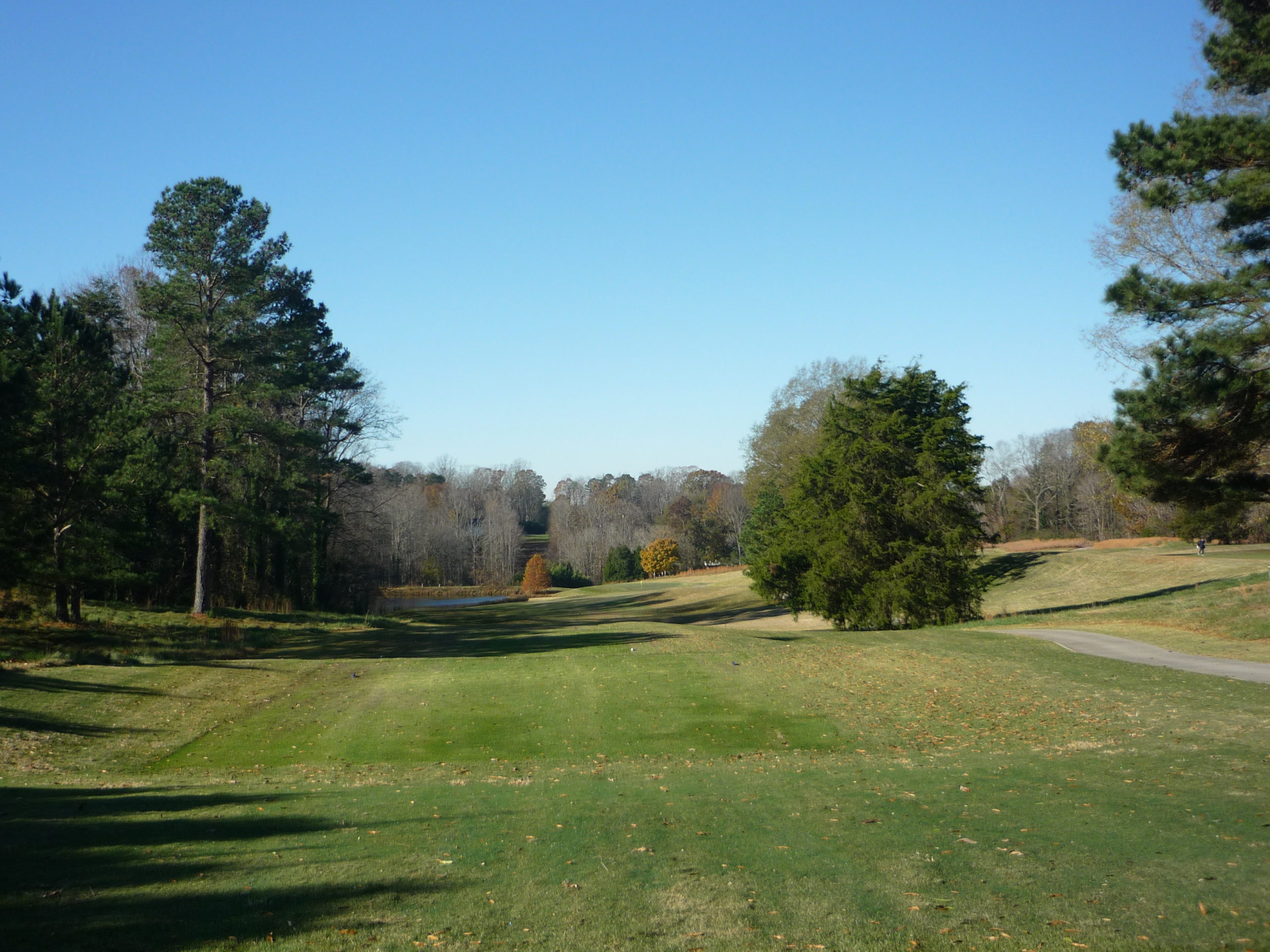
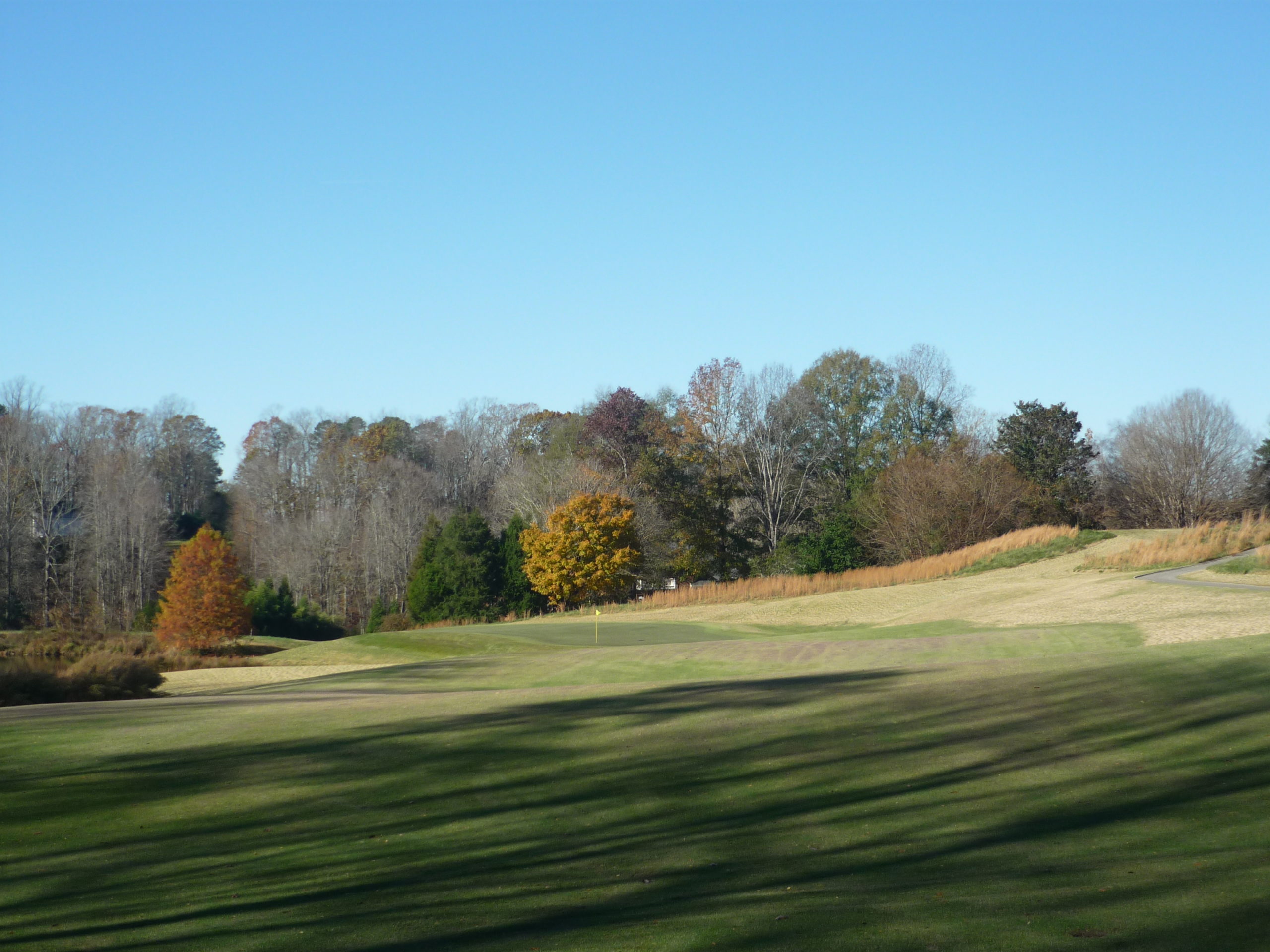
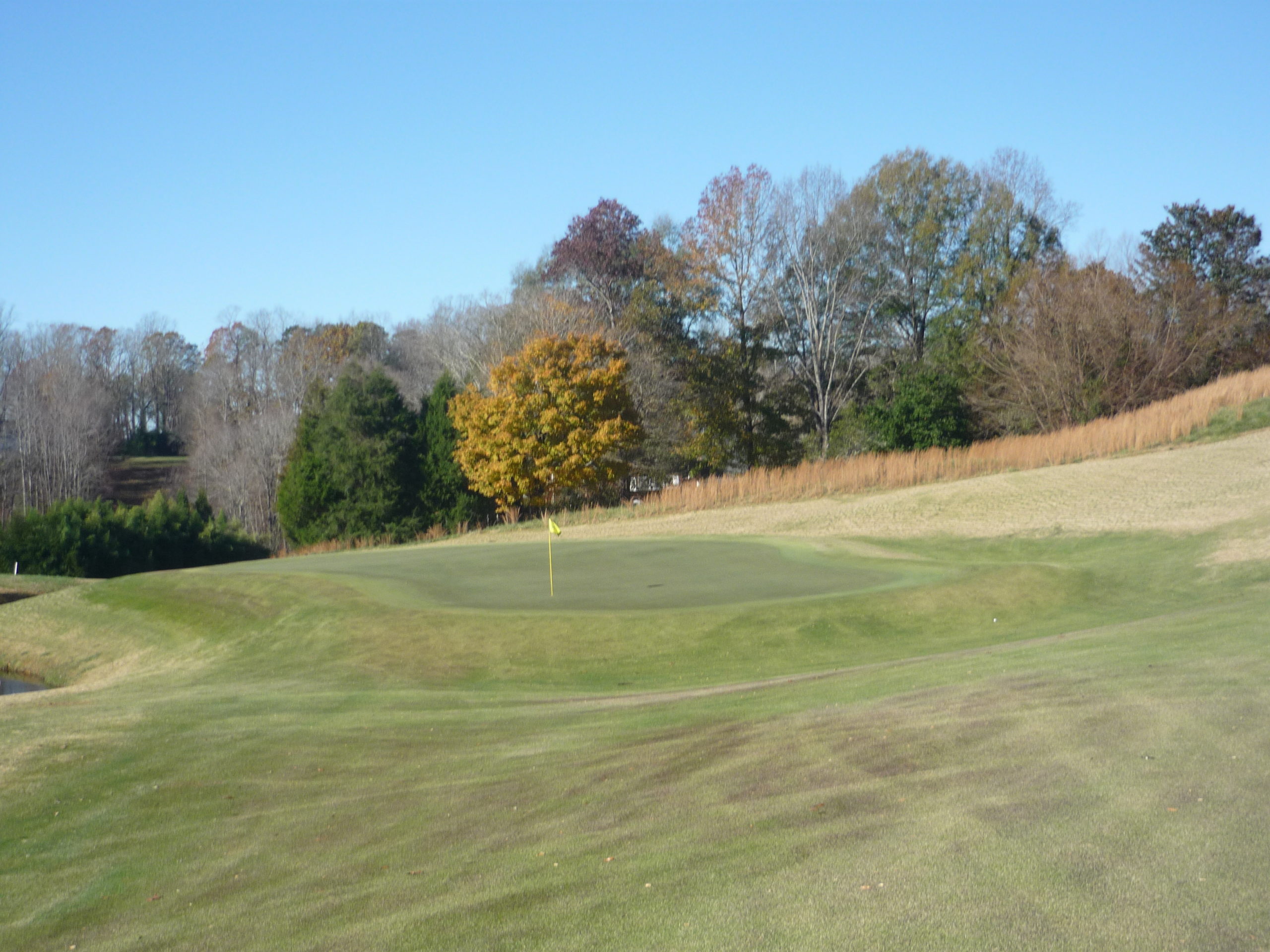
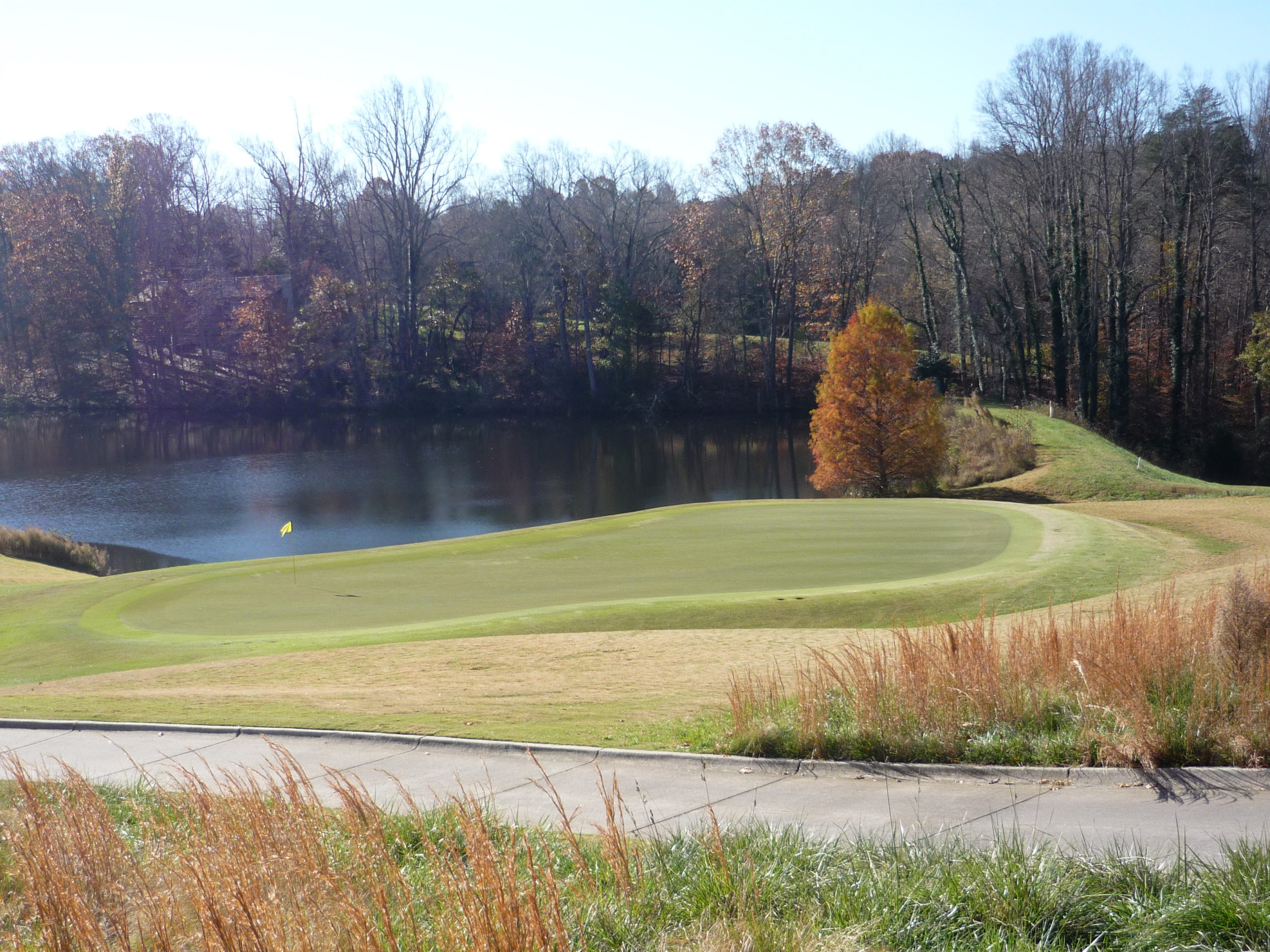
Hole 2 – 493 yards – Par 5
If you can get your tee shot between the bunkers it should get a kick forward from the downhill fairway.
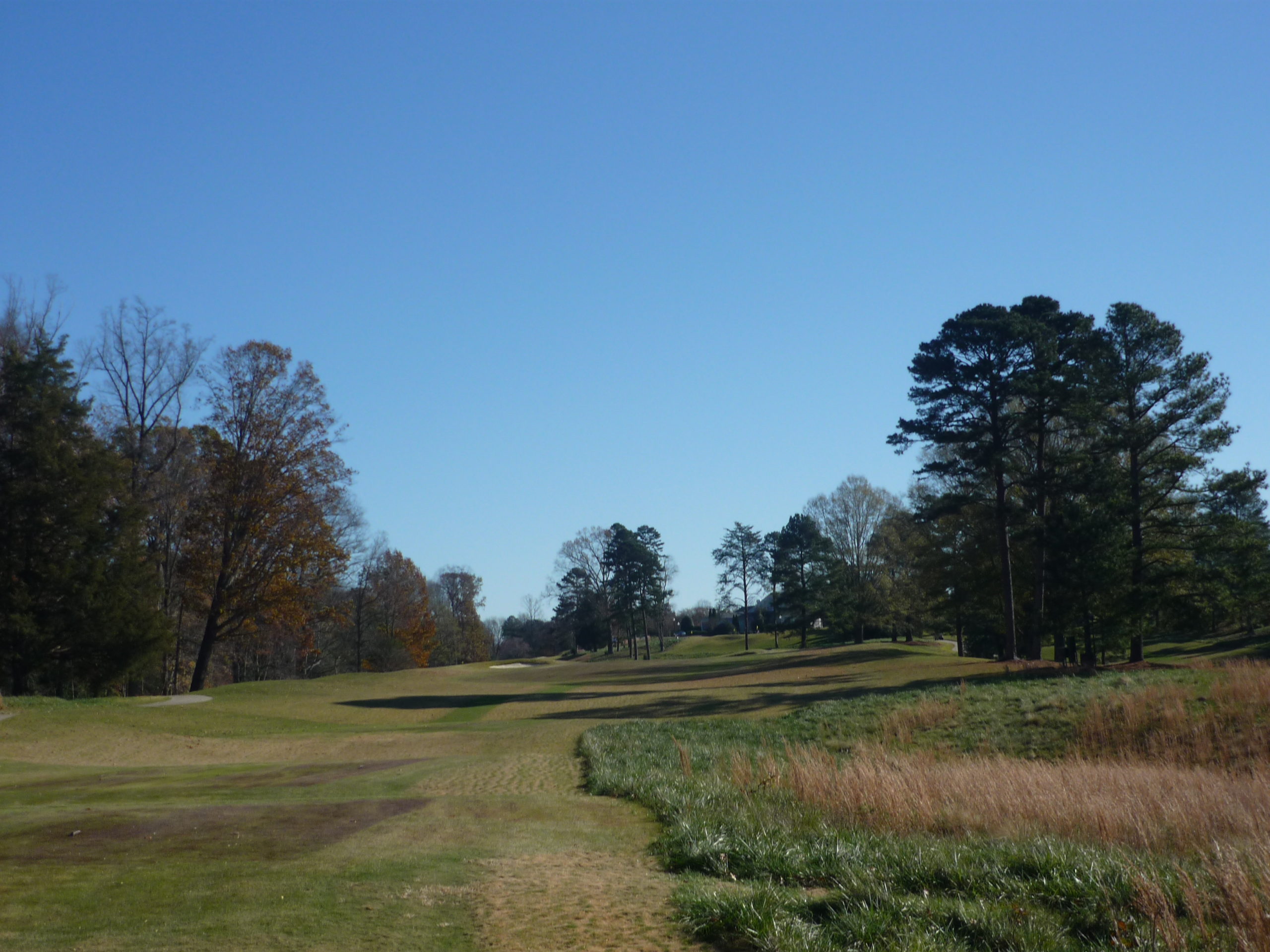
A good tee shot puts you in position to go for the green.
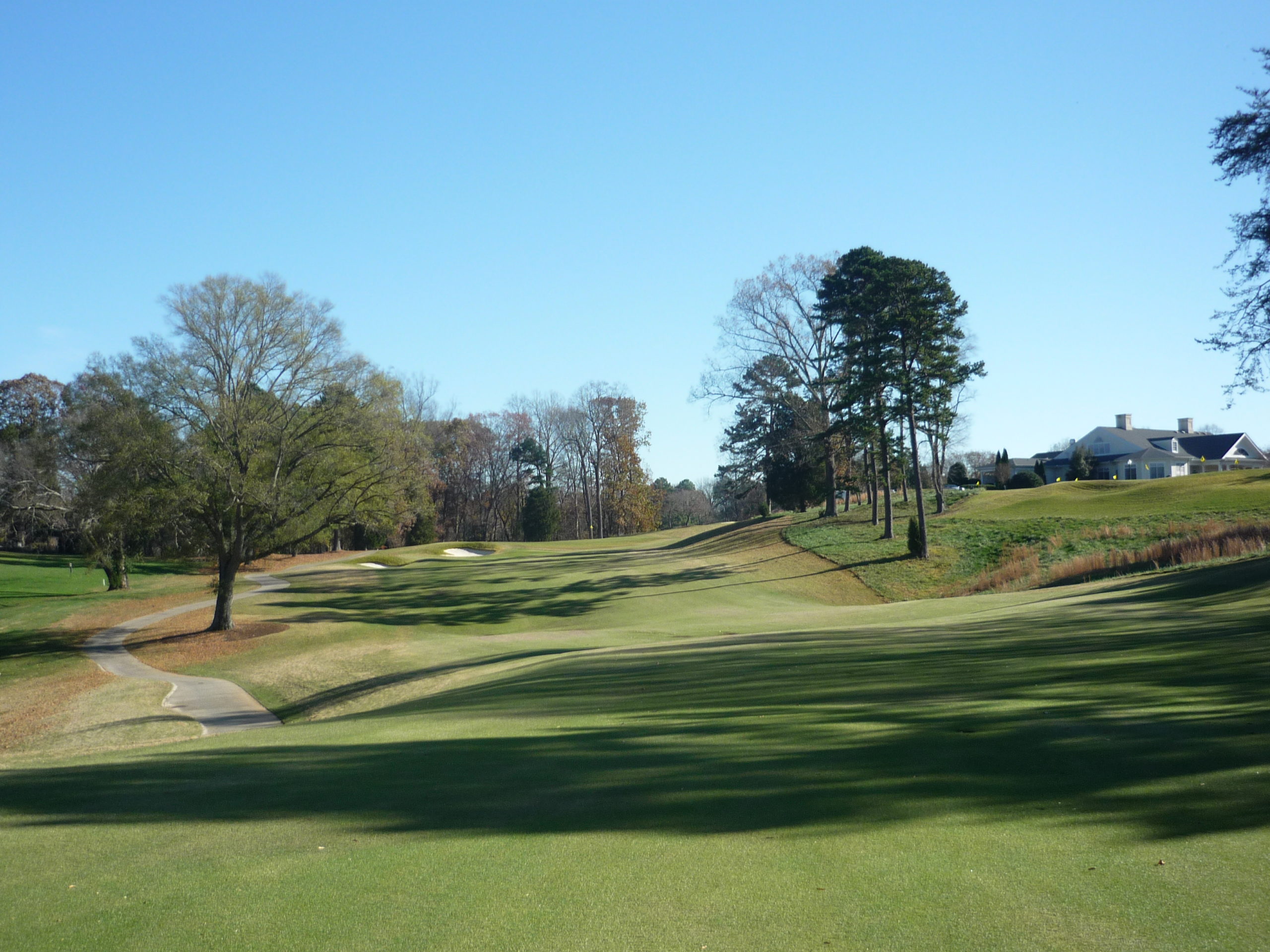
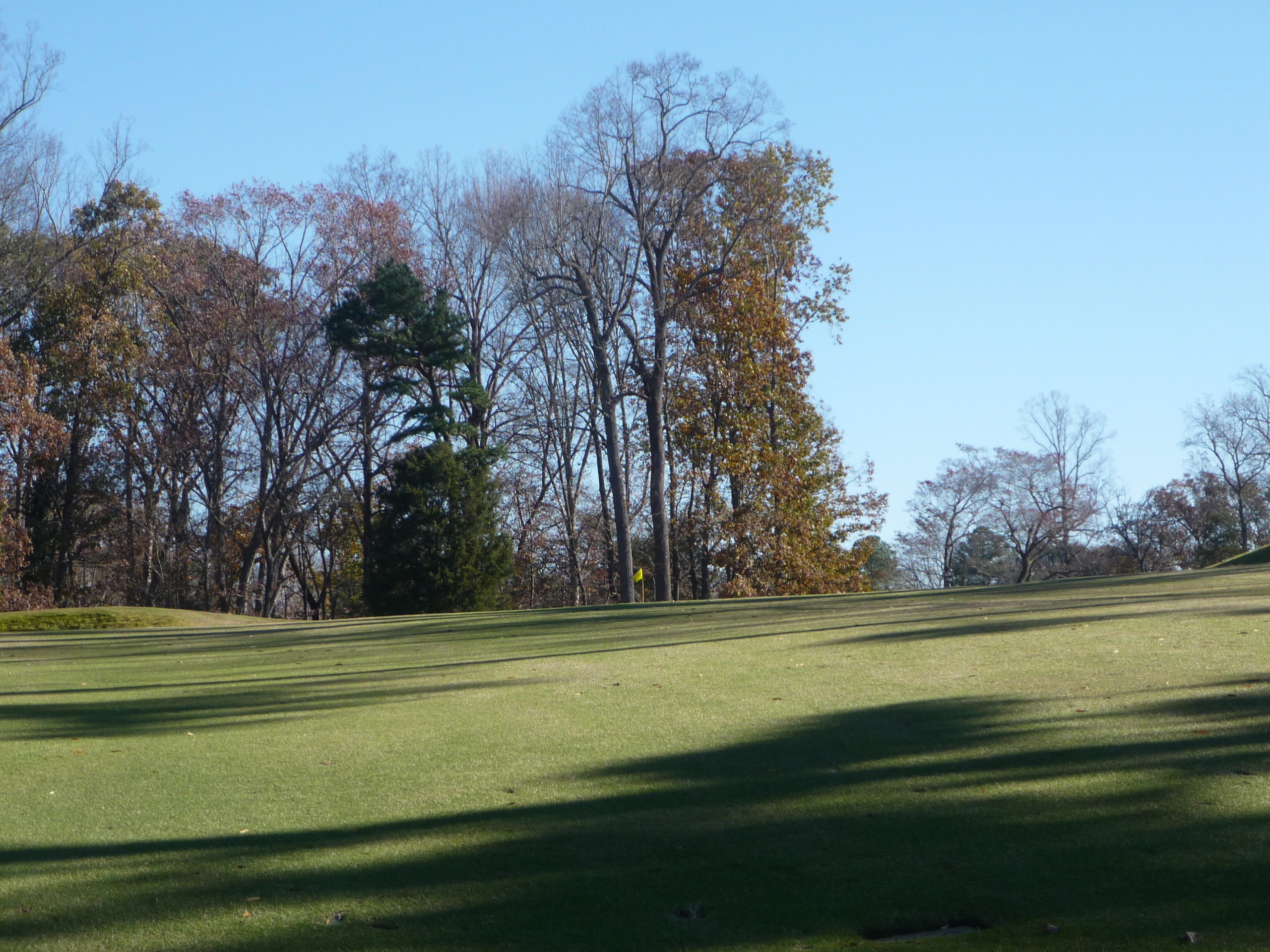
There is definitely more slope than you can see in the photo below. Being on the proper section of the green is imperative.
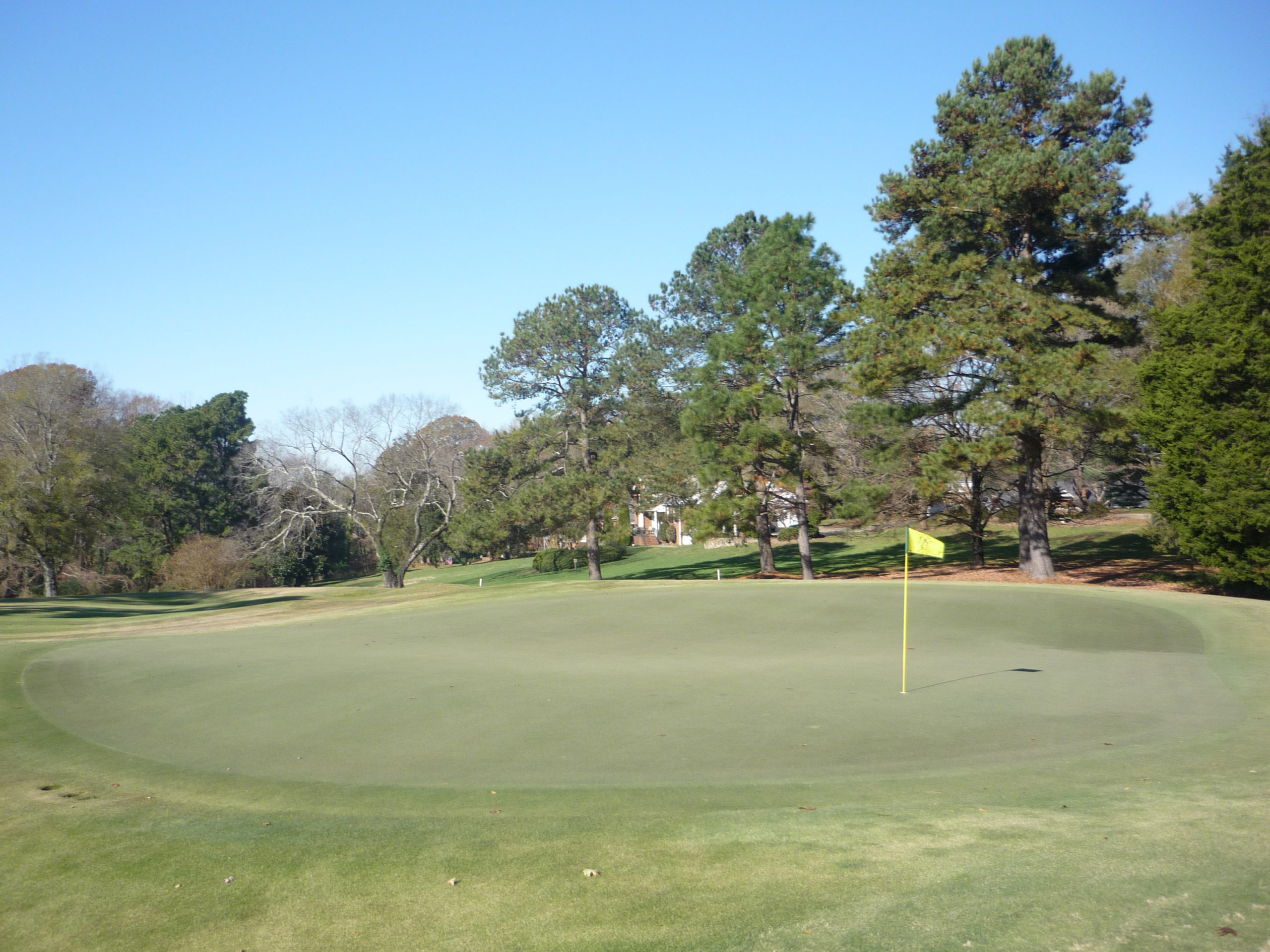
Hole 3 – 205 yards – Par 3
You’ve got to muster a good tee shot on this long par three. The challenge doesn’t end there though with a very undulating green.
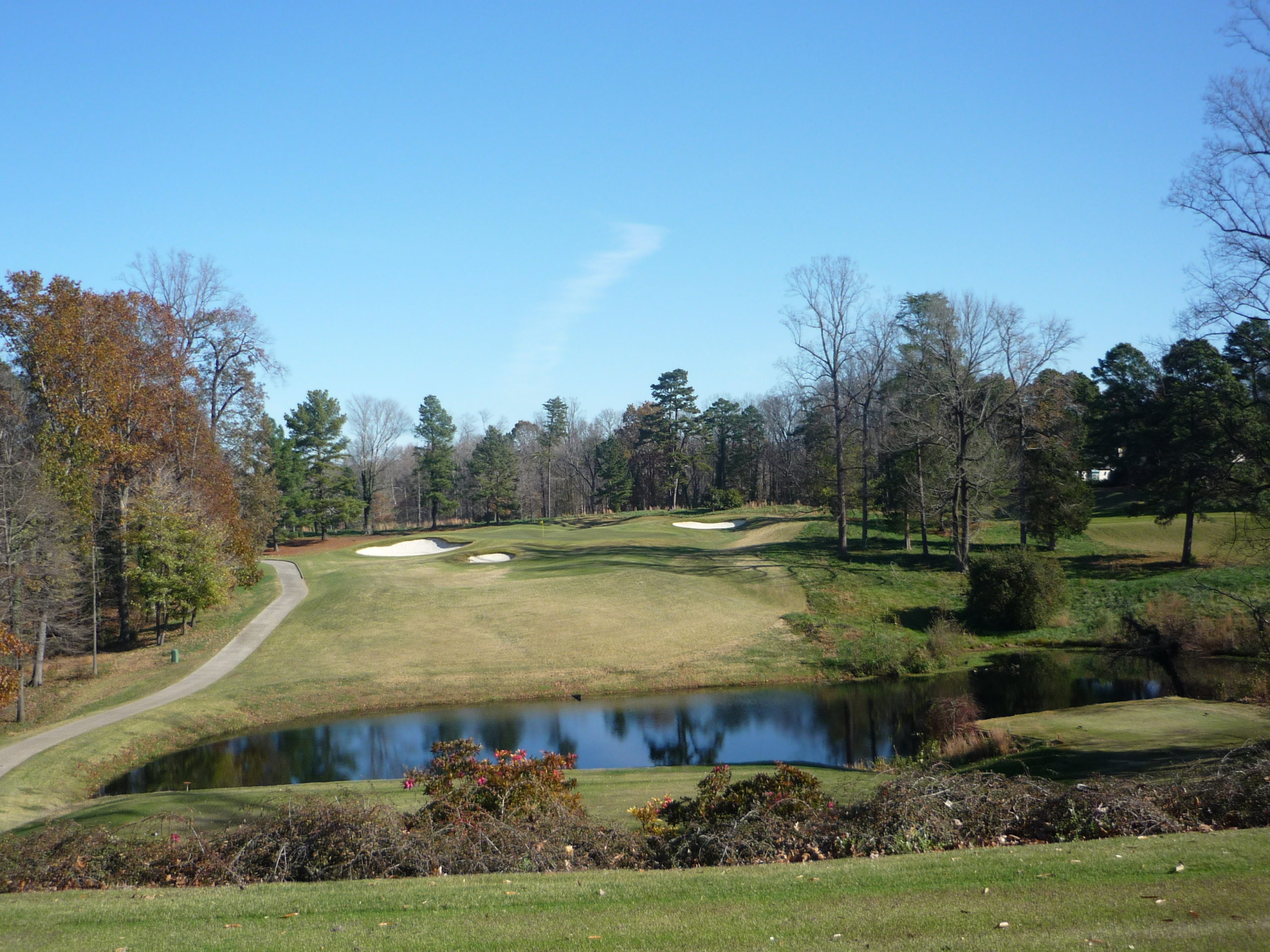
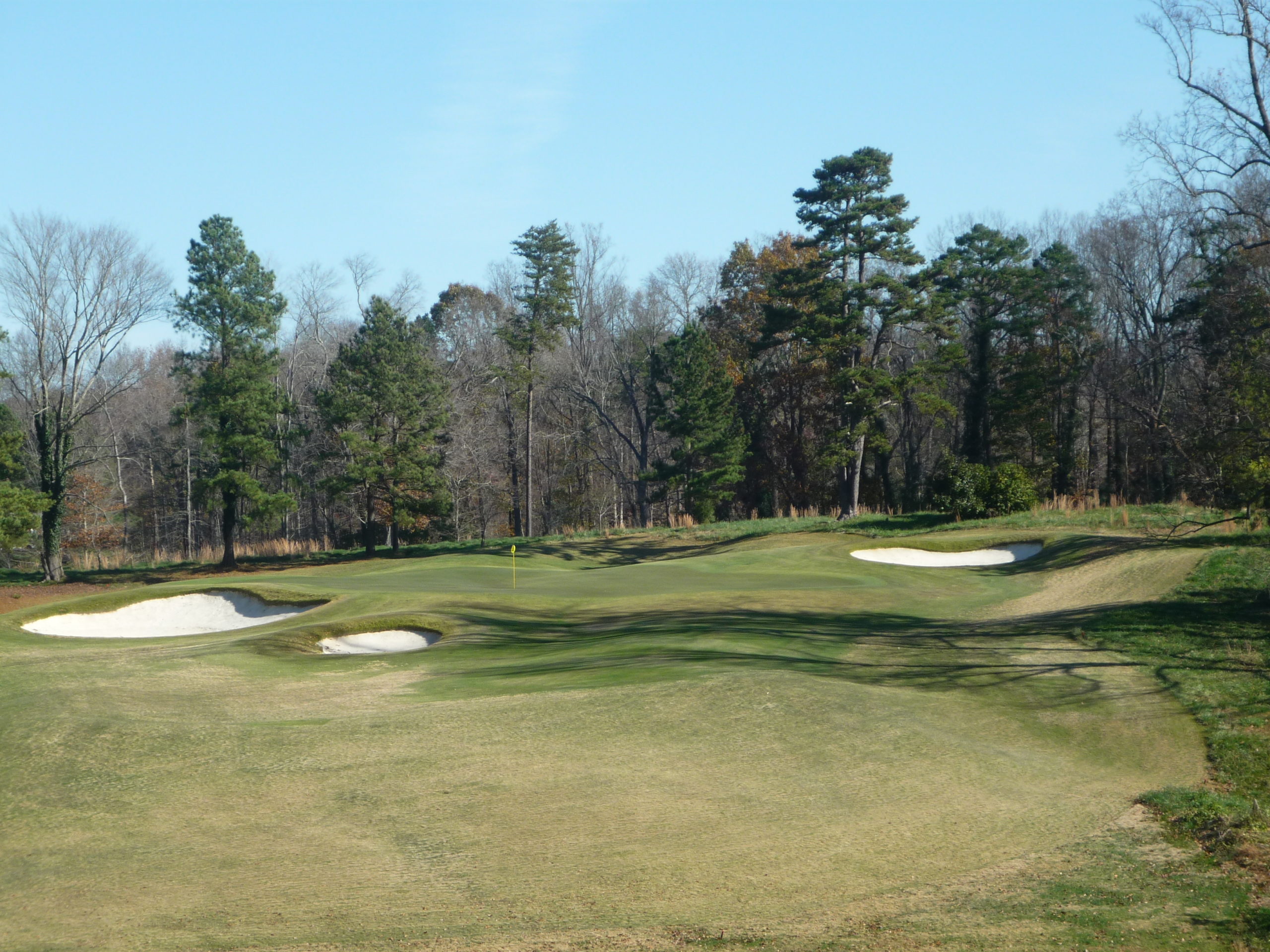
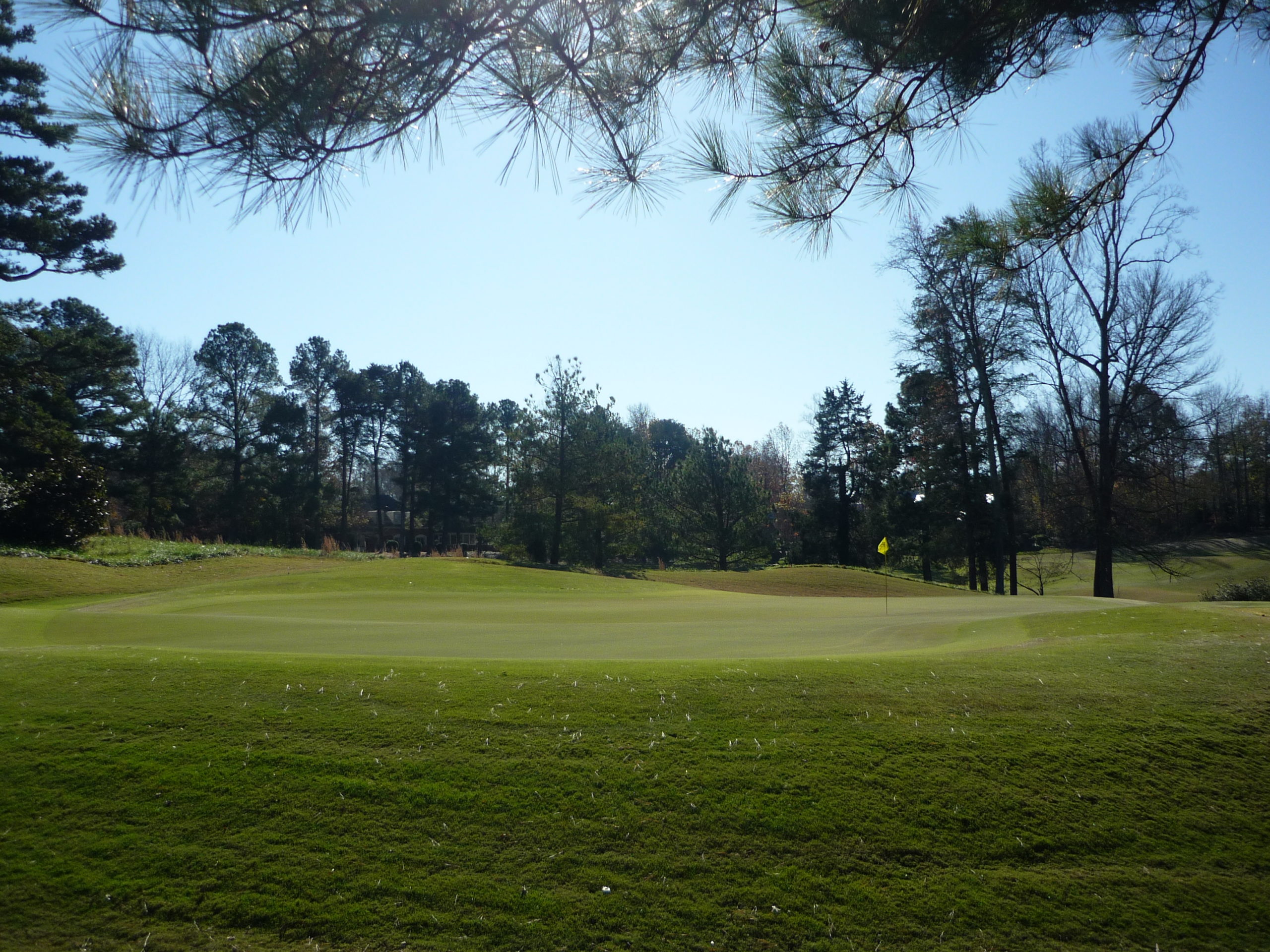
Hole 4 – 365 yards – Par 4
The brain will get some work trying to figure out the effects of the elevation changes on this hole.
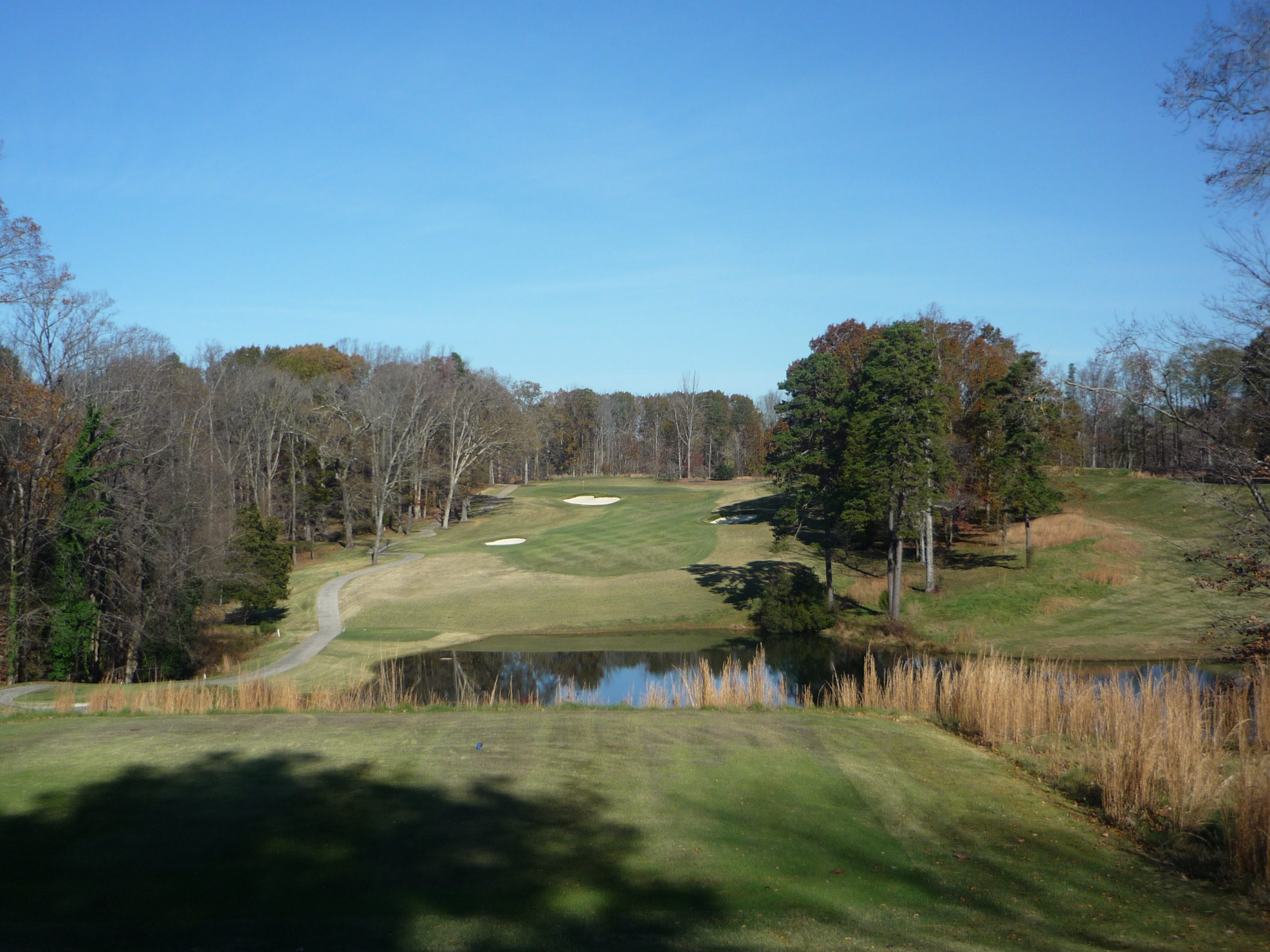
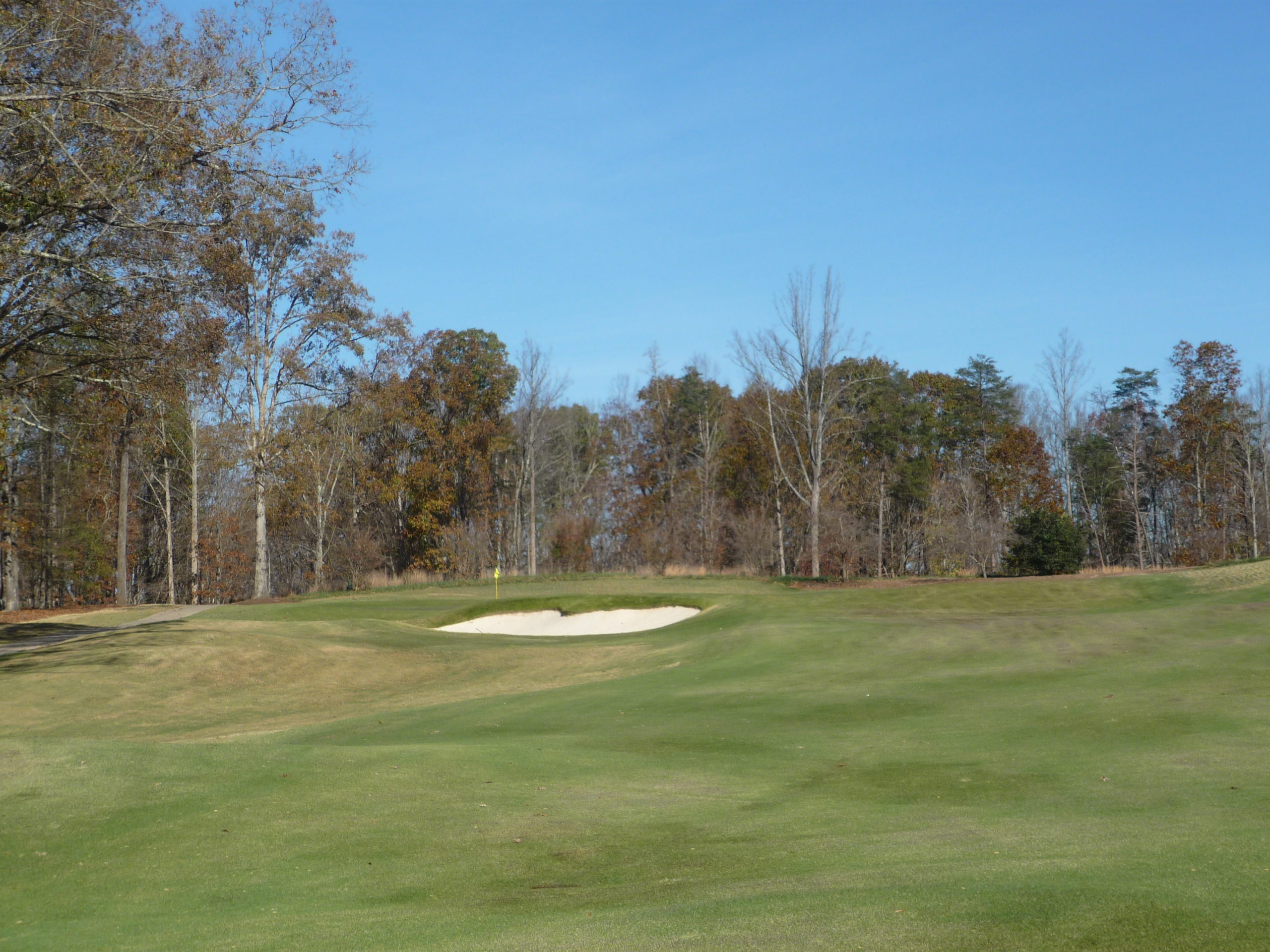
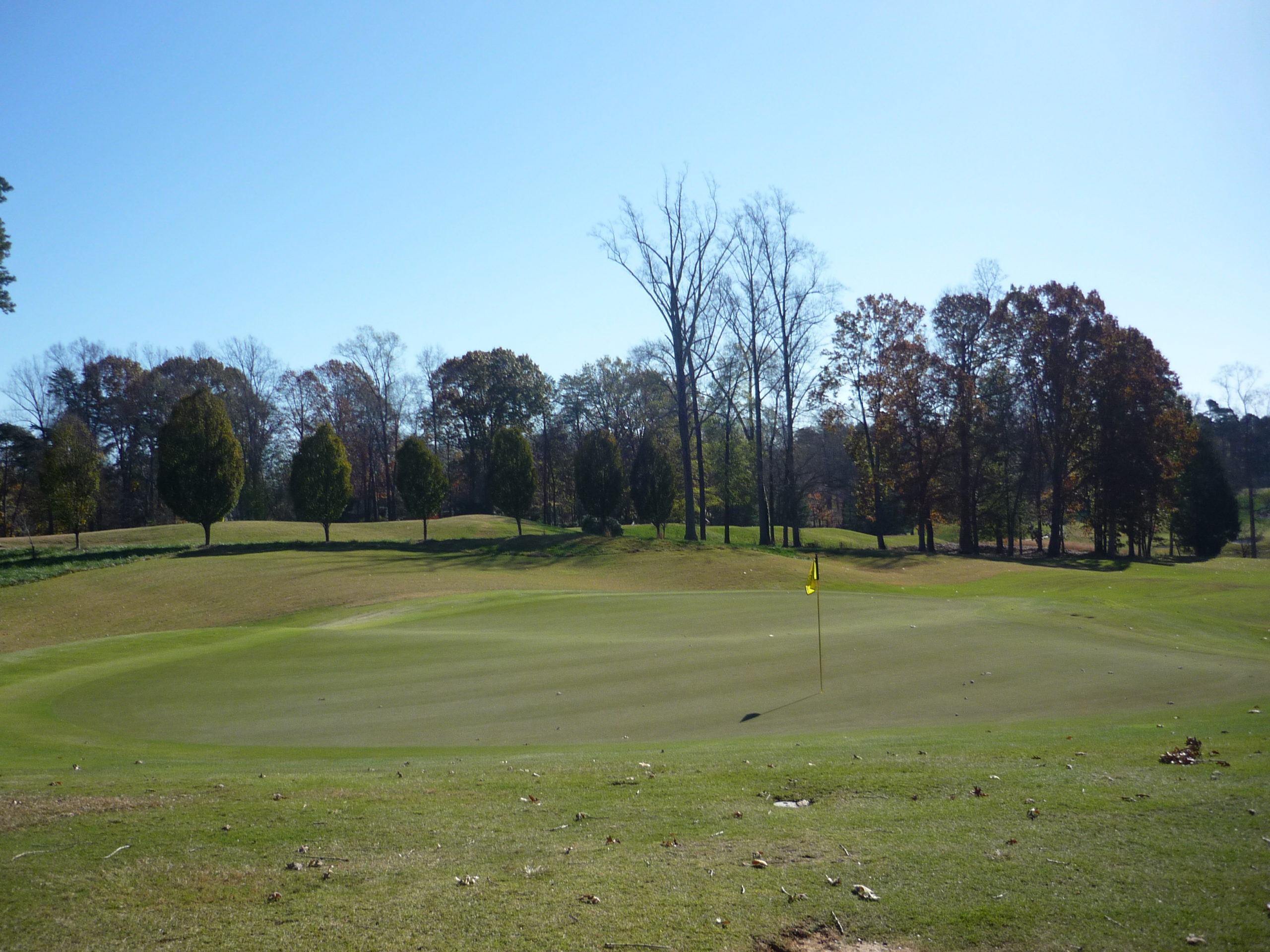
Hole 5 – 147 yards – Par 3
Do not go over this green. It falls off sharply.
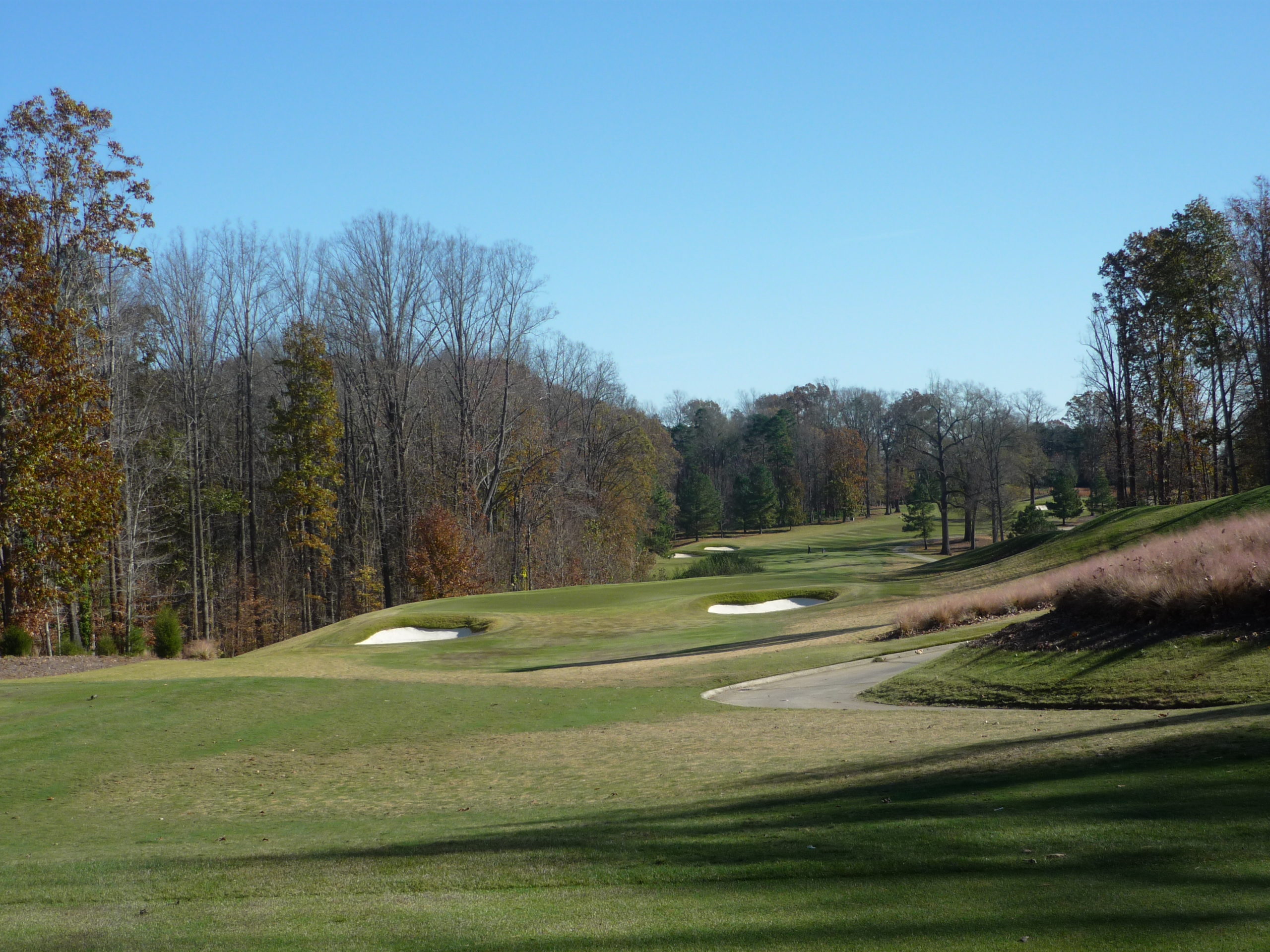
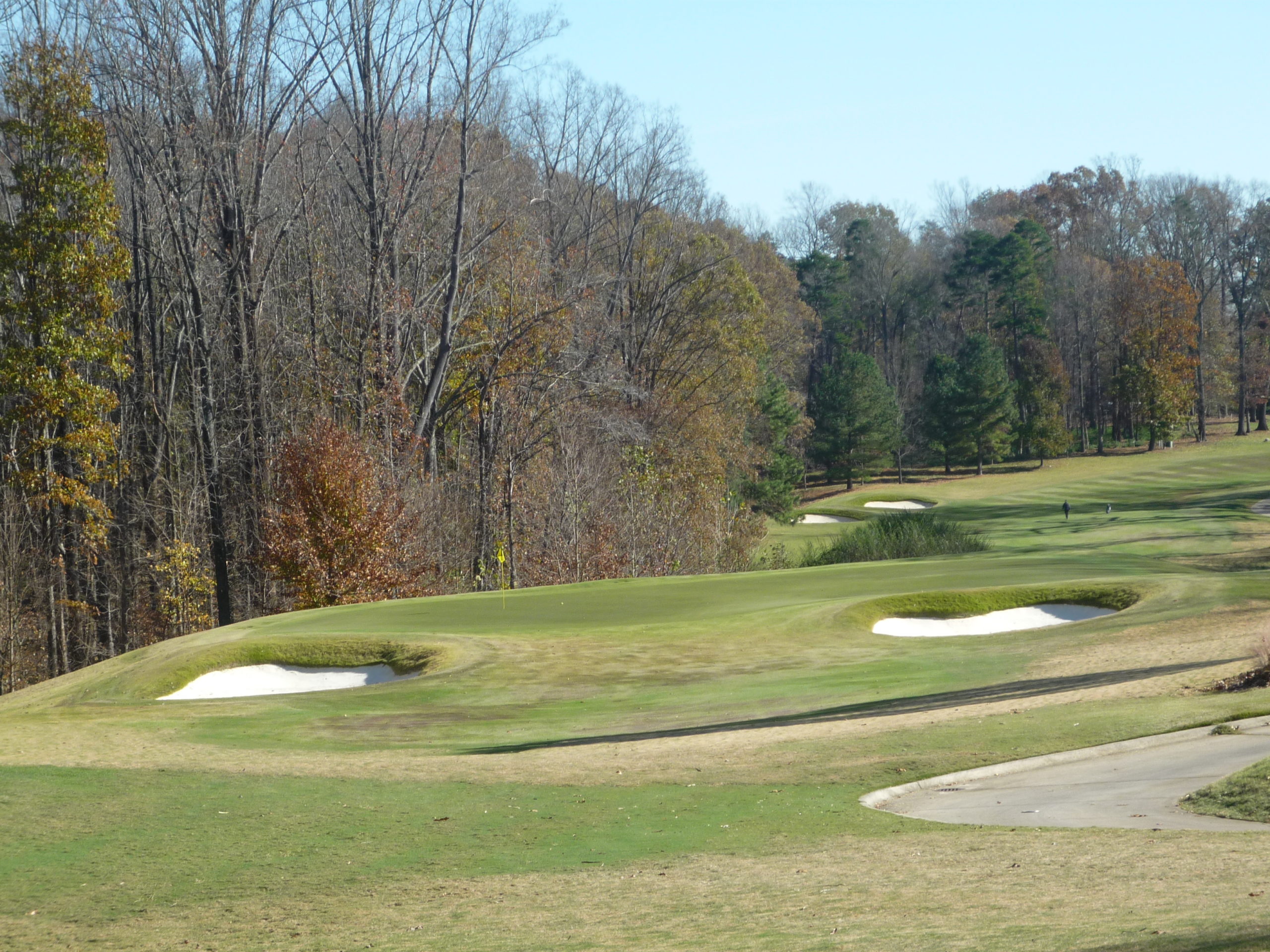
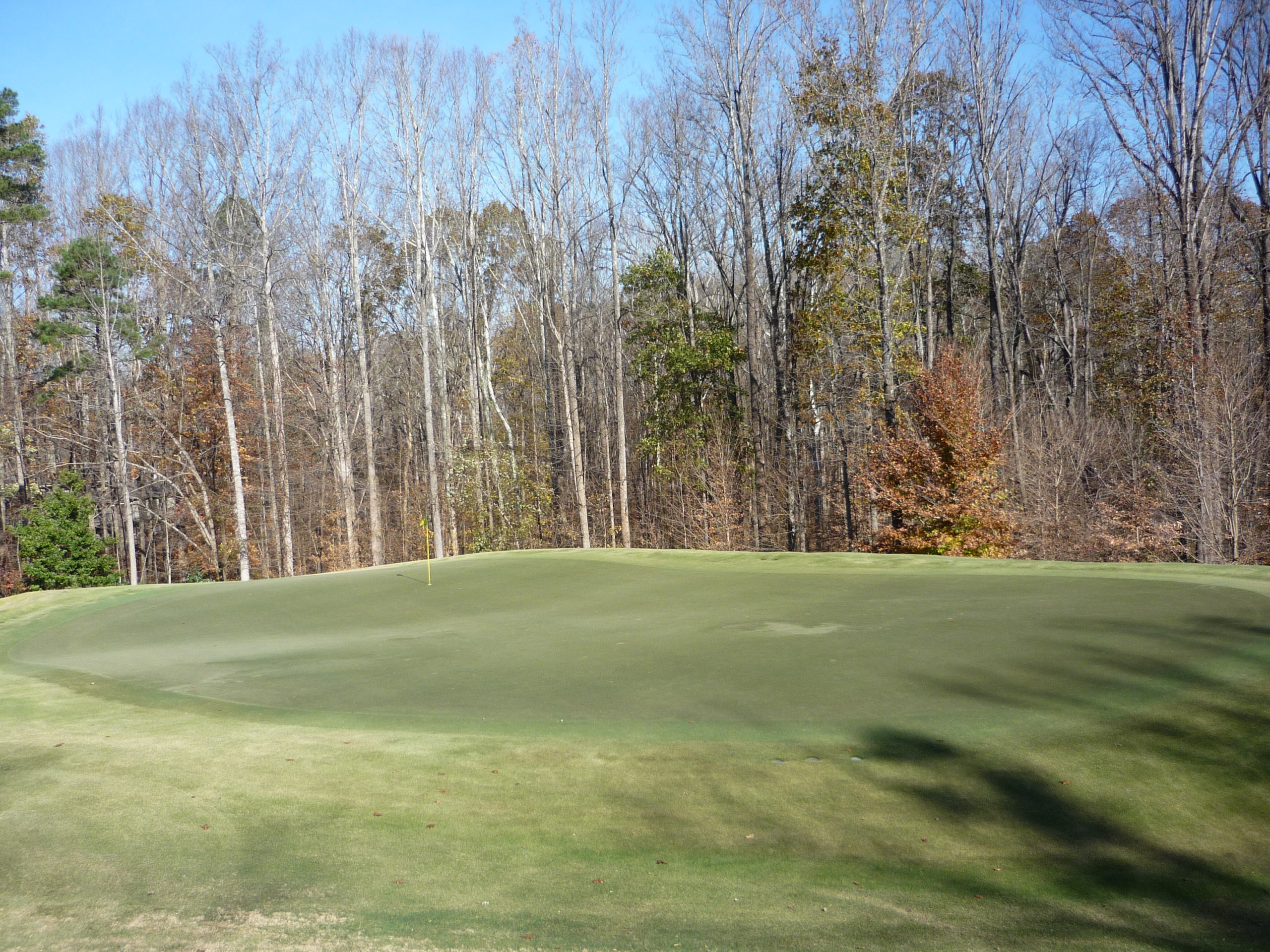
Hole 6 – 421 yards – Par 4
This burly dogleg right will test you from start to finish. As an added bonus, it’s uphill the entire way.
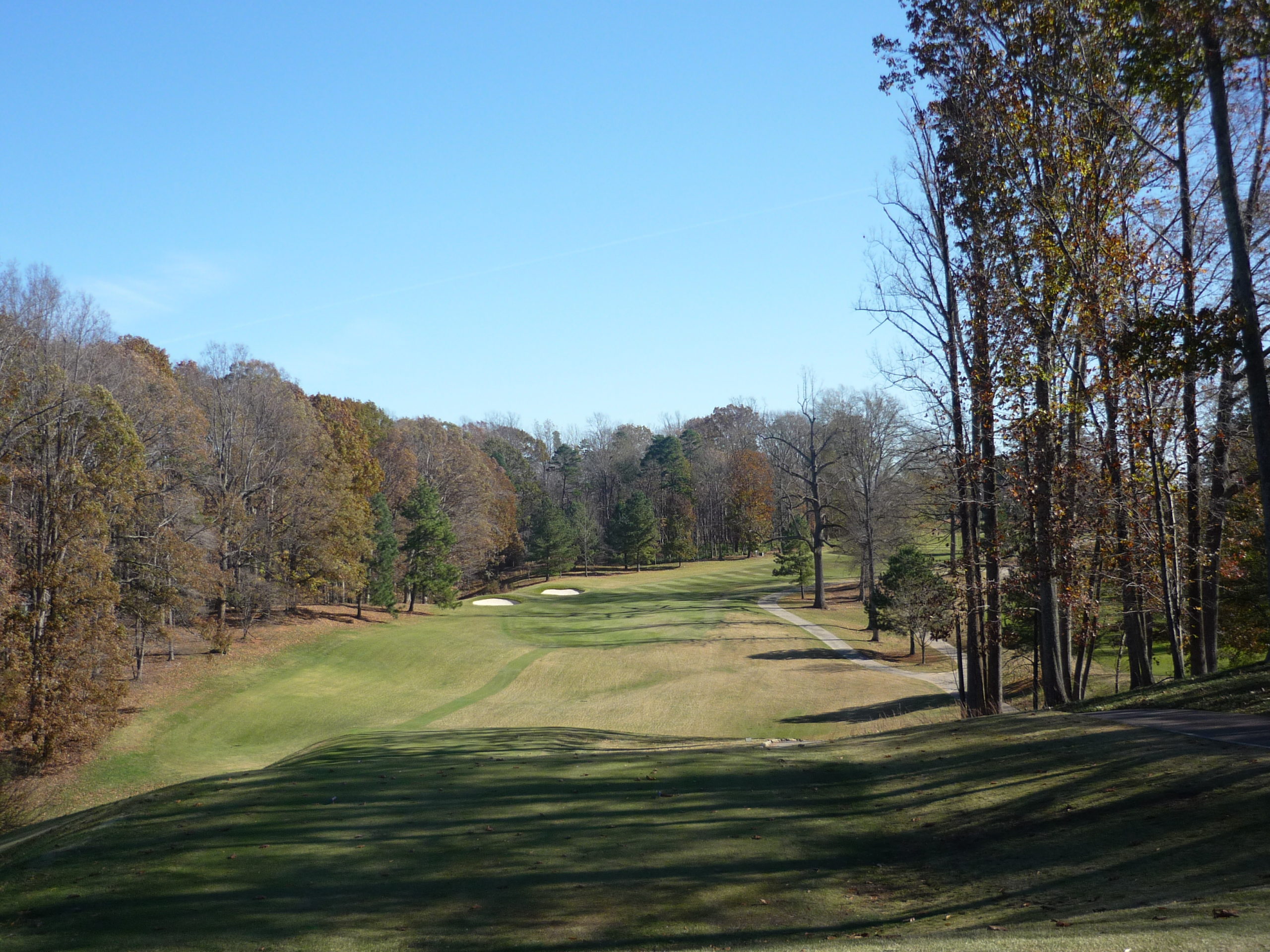
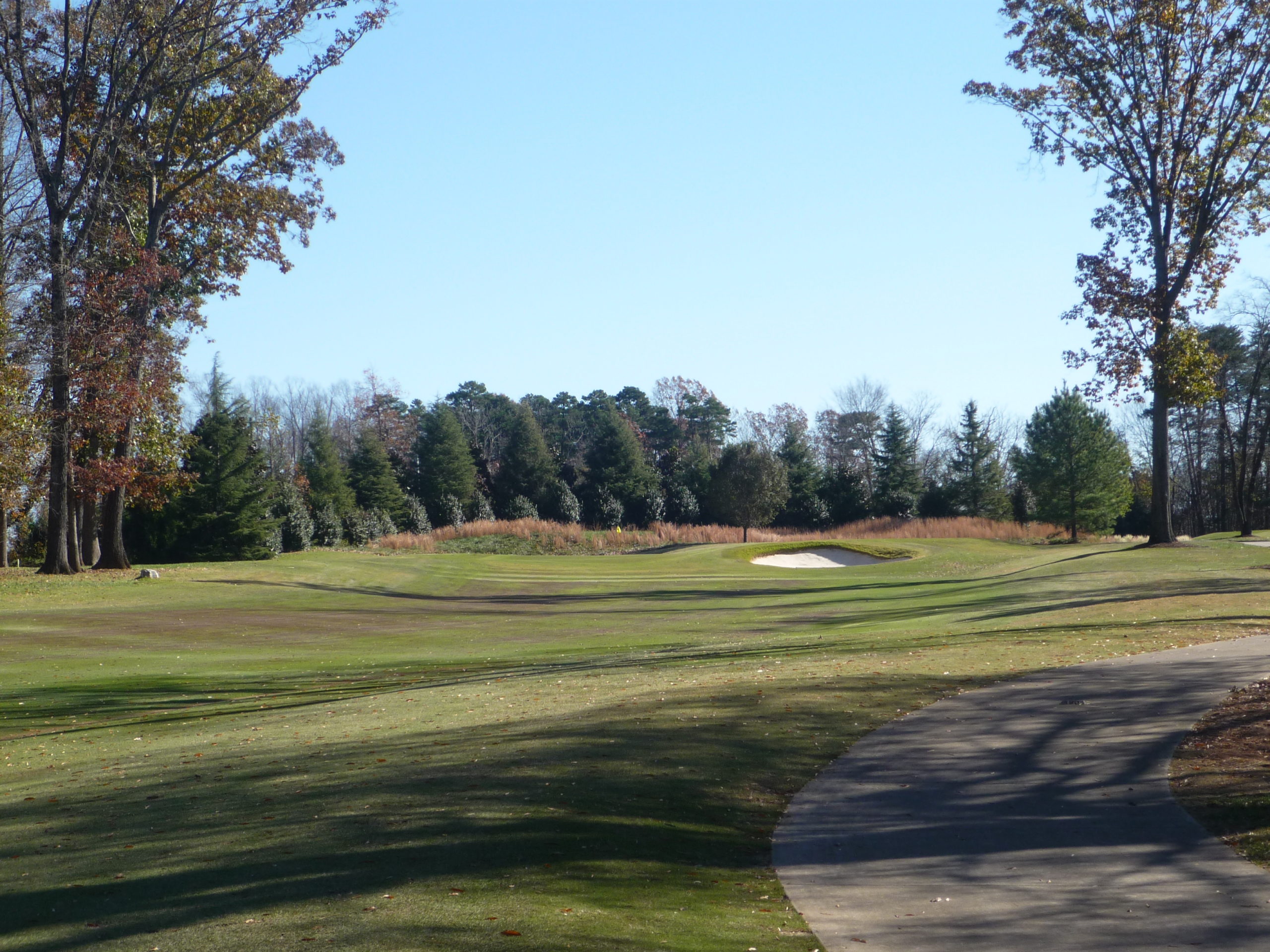
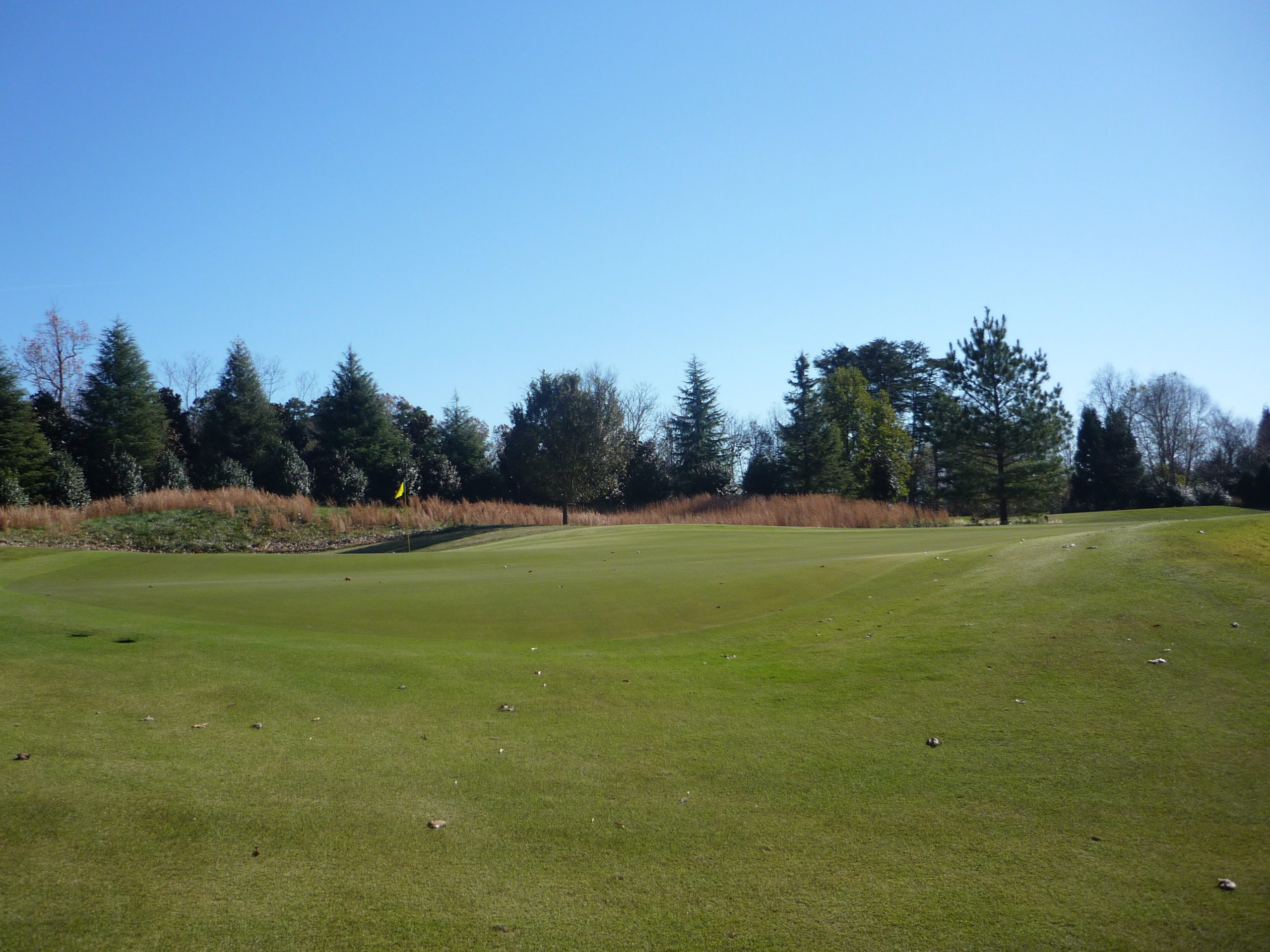
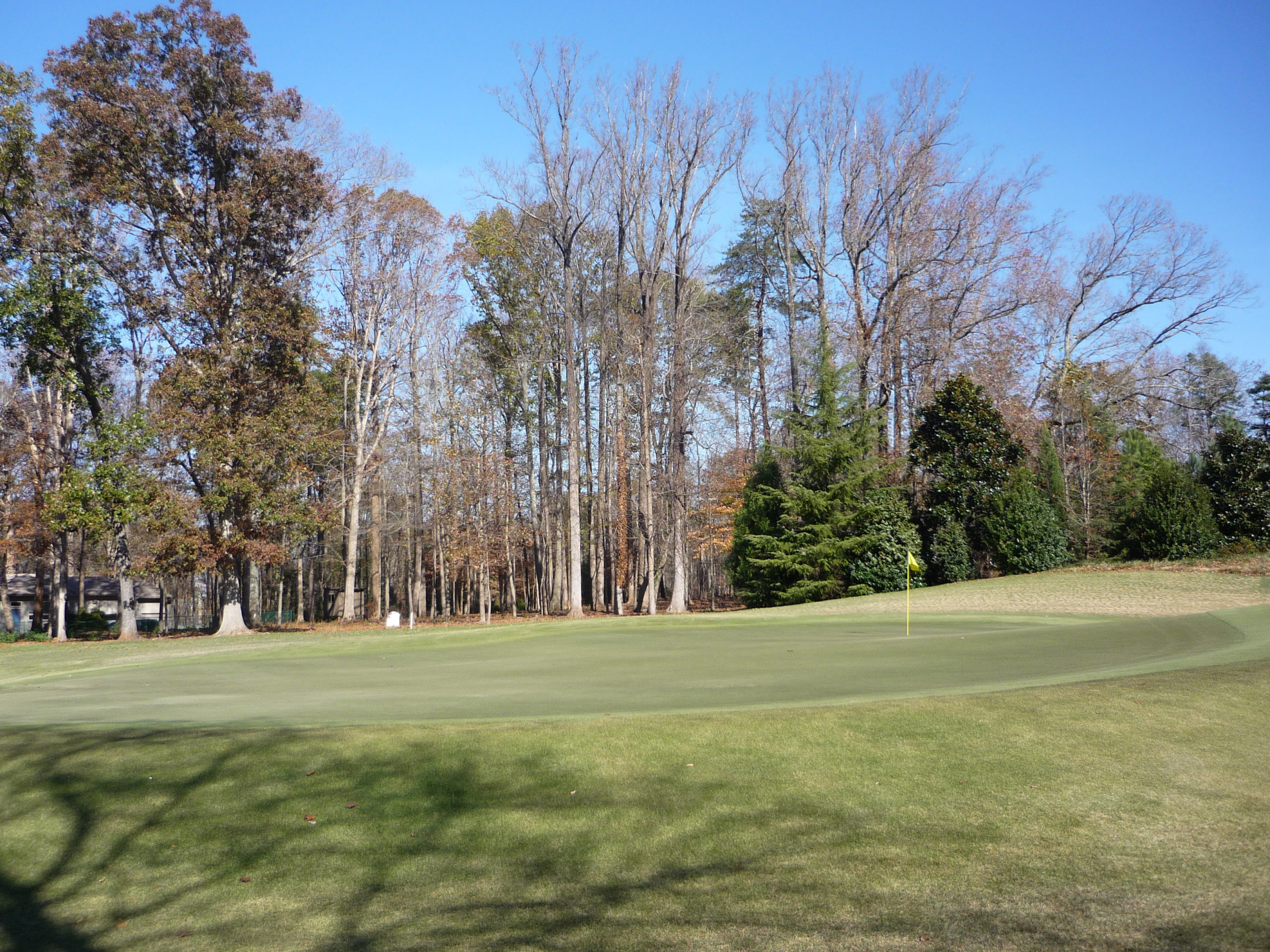
Hole 7 – 492 yards – Par 5
Precision is the goal on this tee box with thick grass on the hill to the left of the fairway. If you succeed, birdie is within reach!
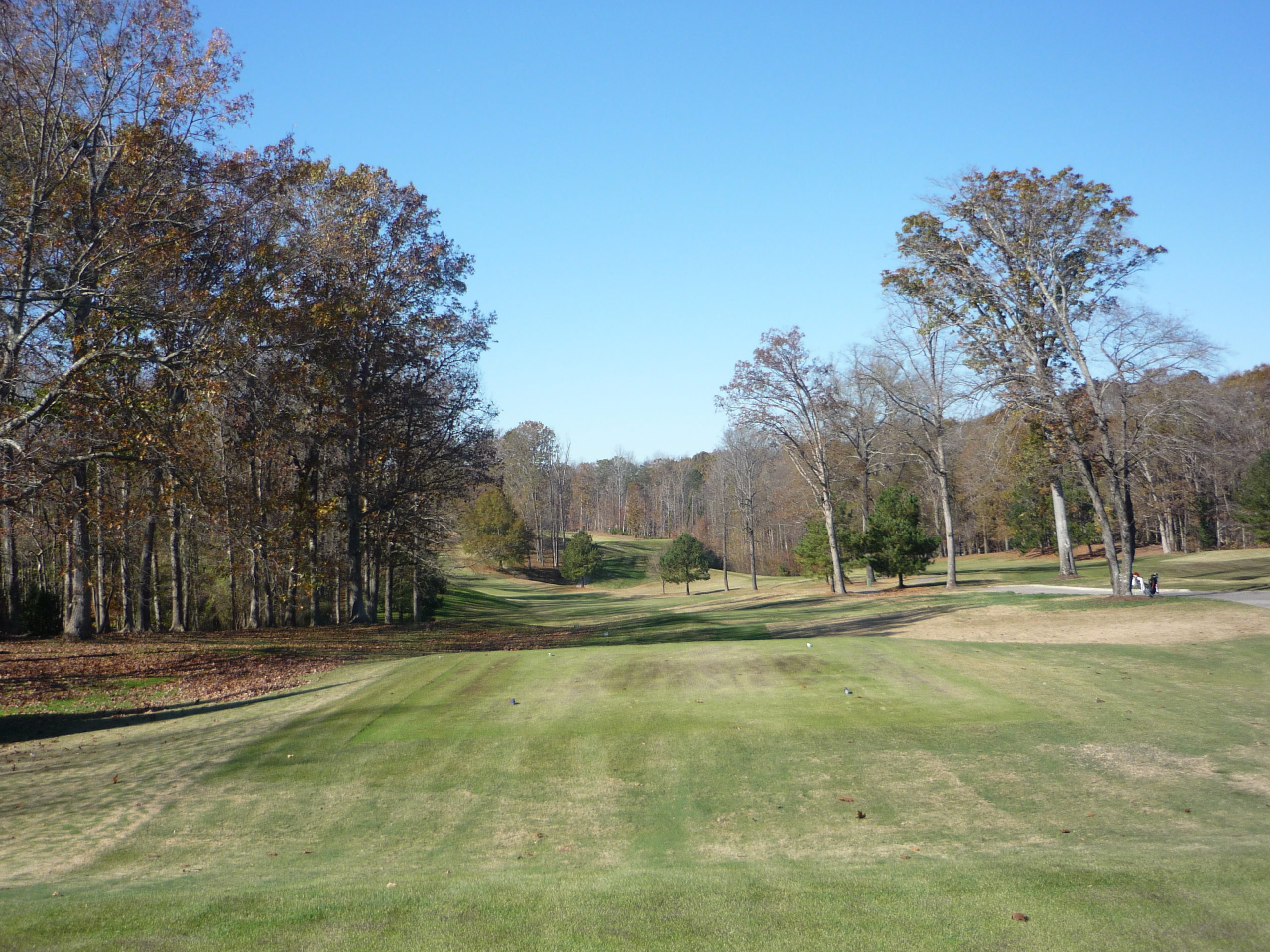
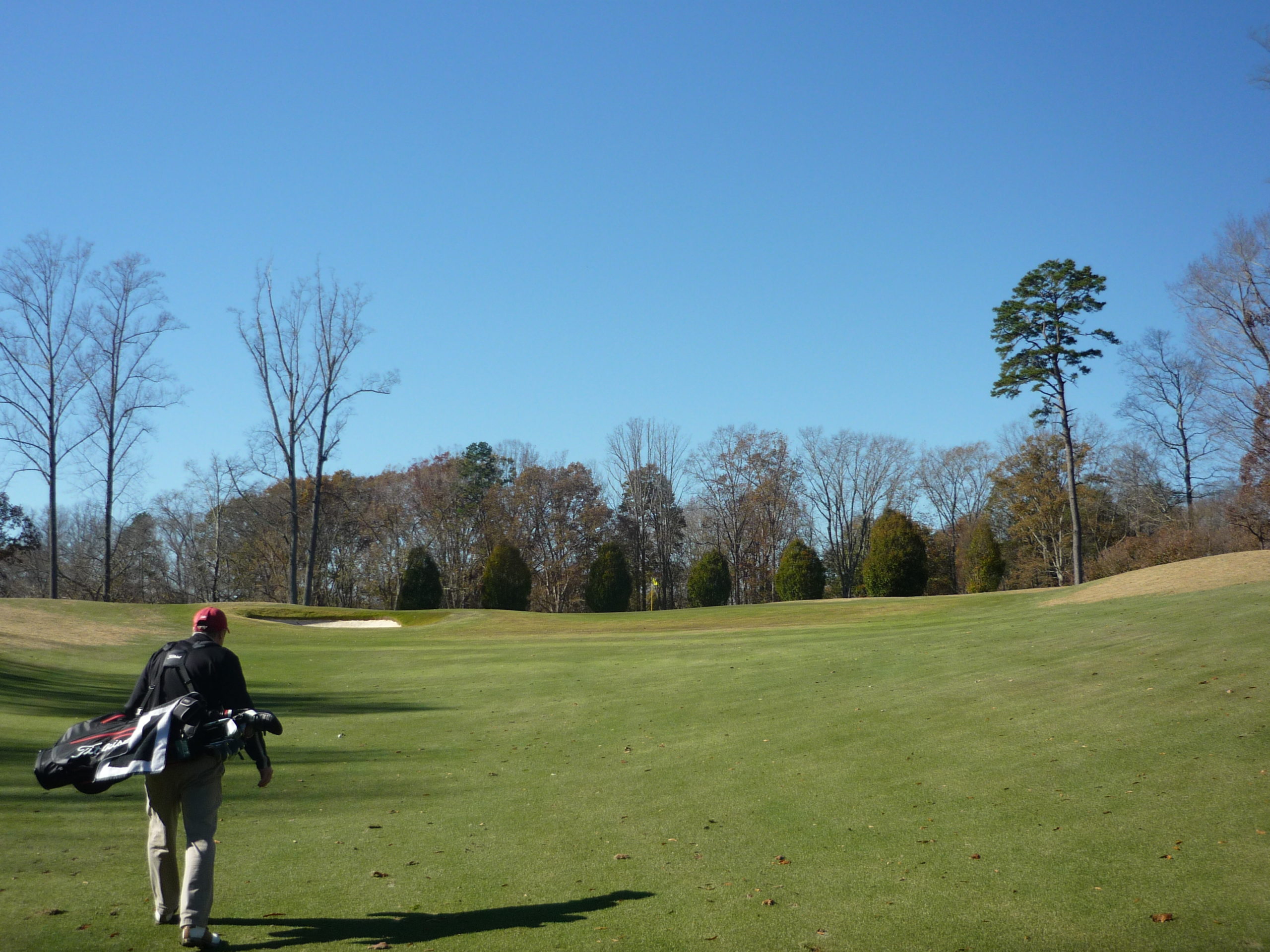
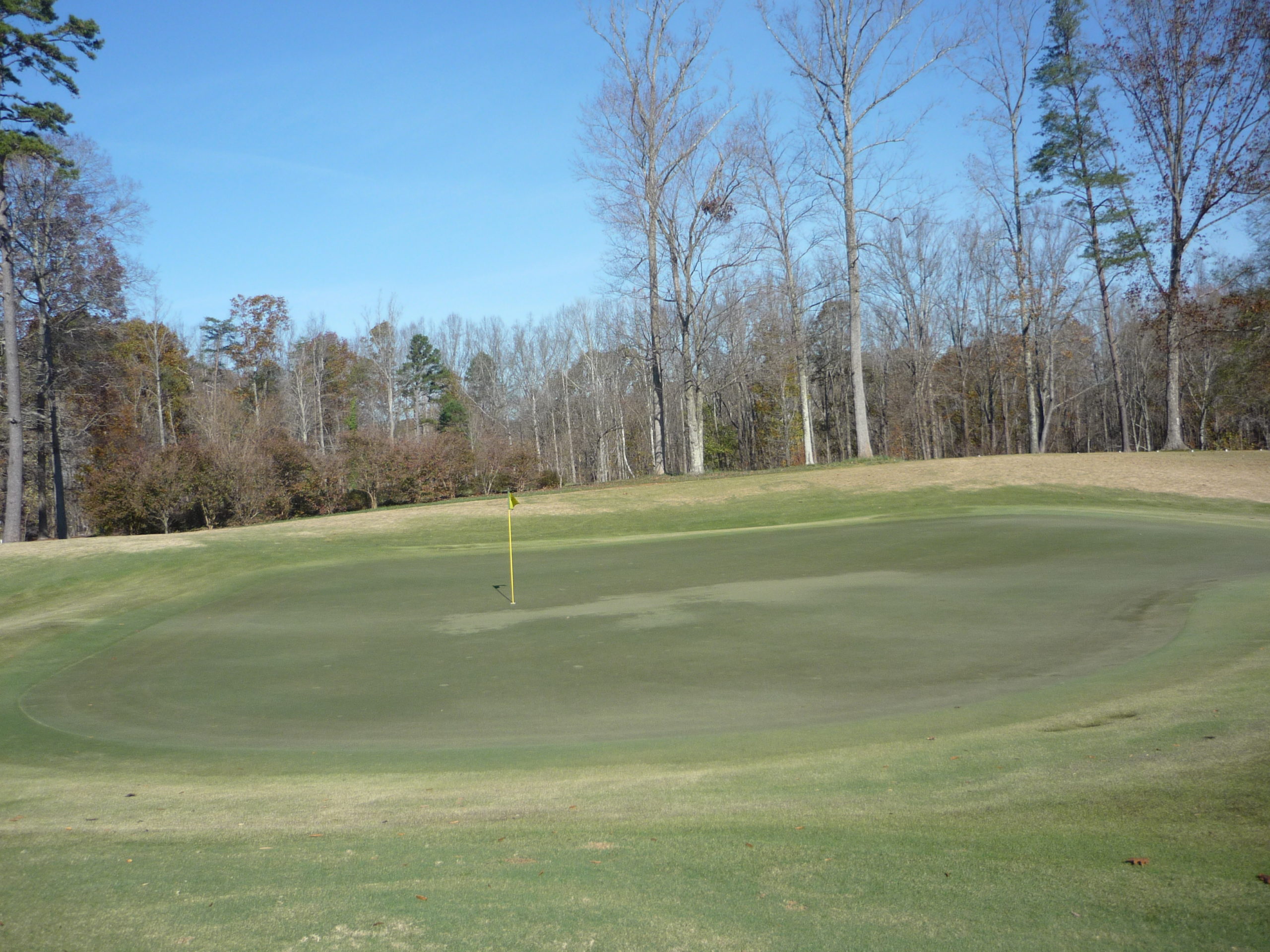
Hole 8 – 182 yards – Par 3
The third of the par threes is wide open and downhill. It’s obvious what you need to avoid here, but I’m sure that doesn’t keep the balls out of the water.
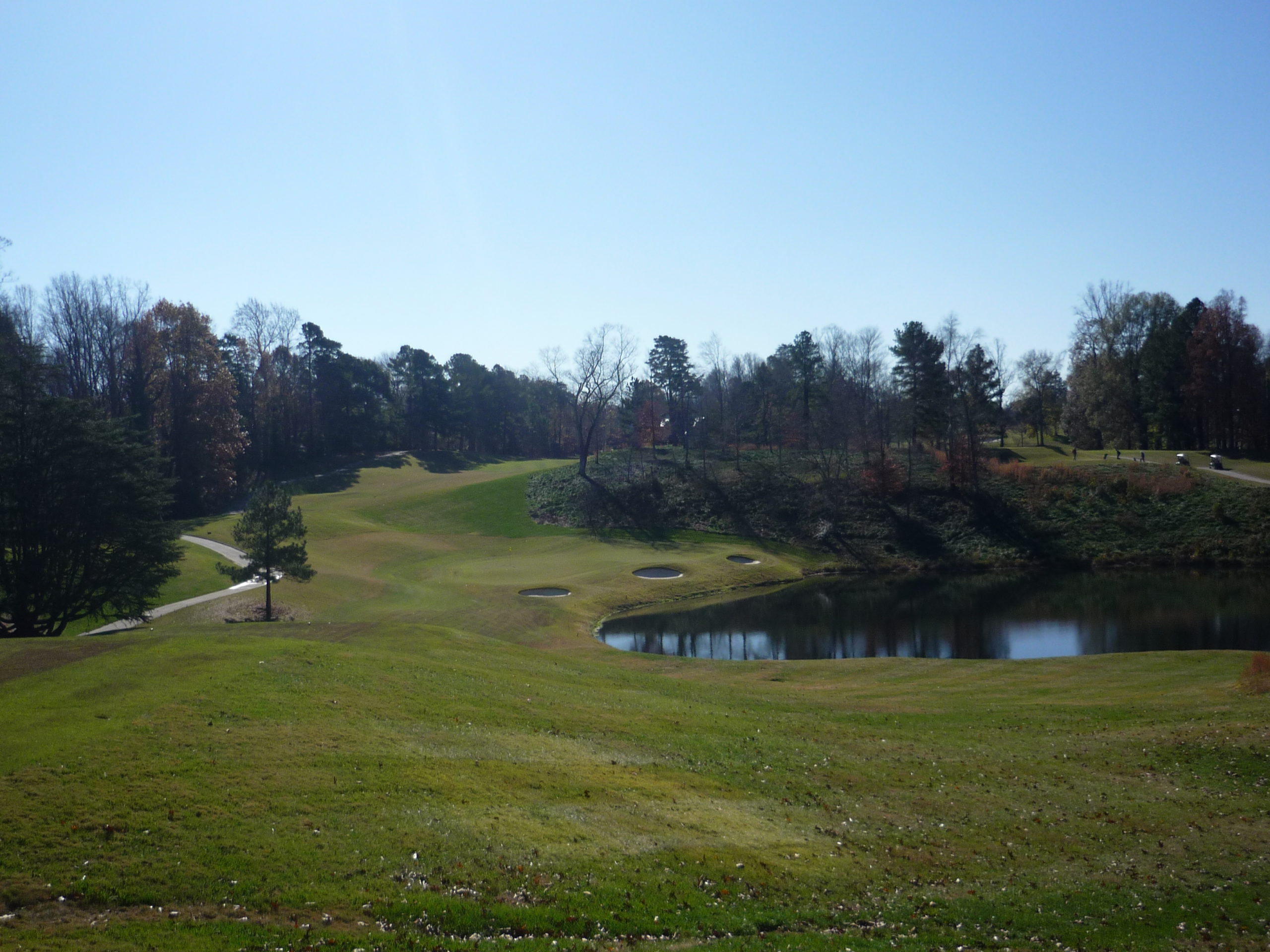
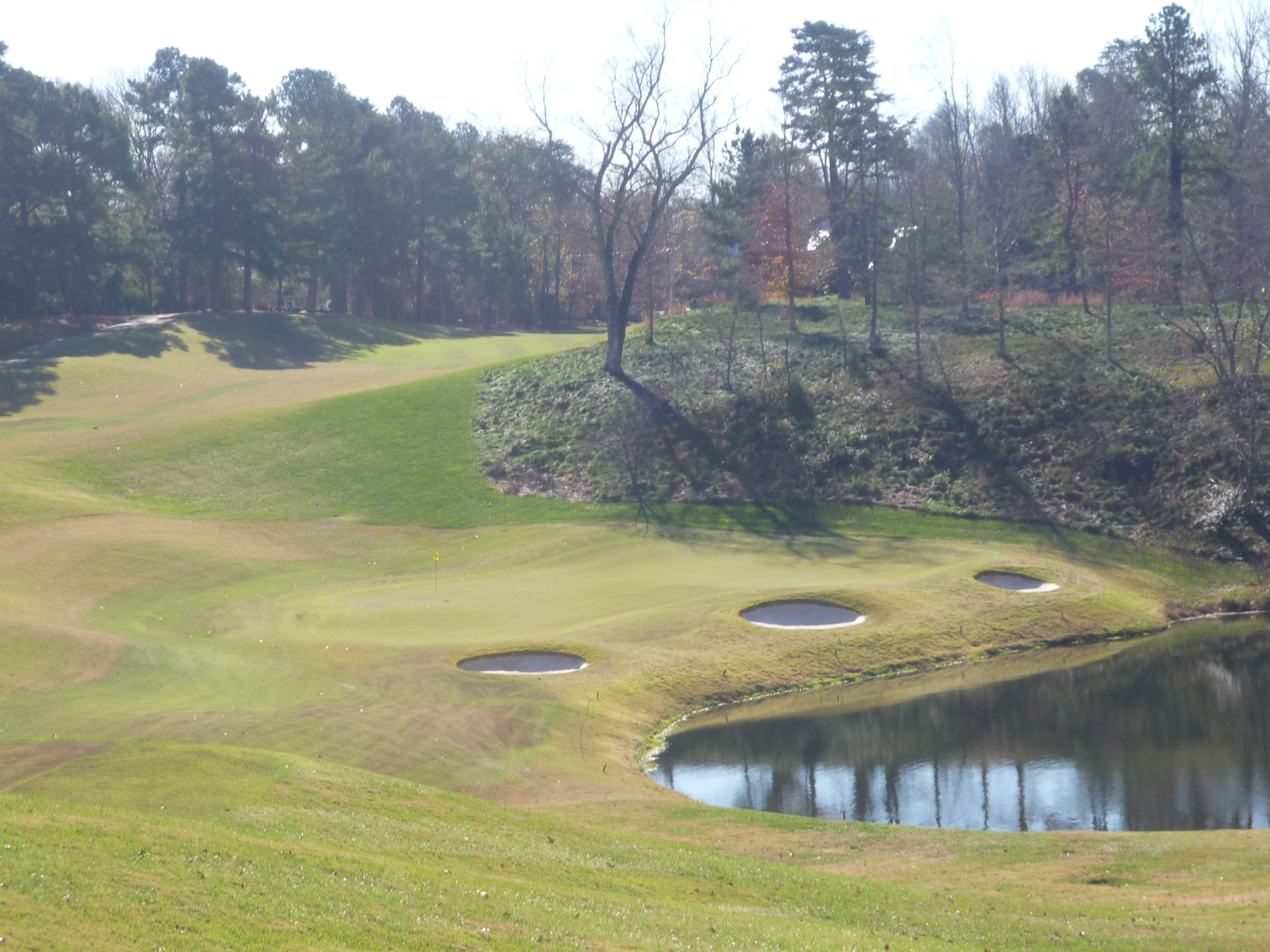
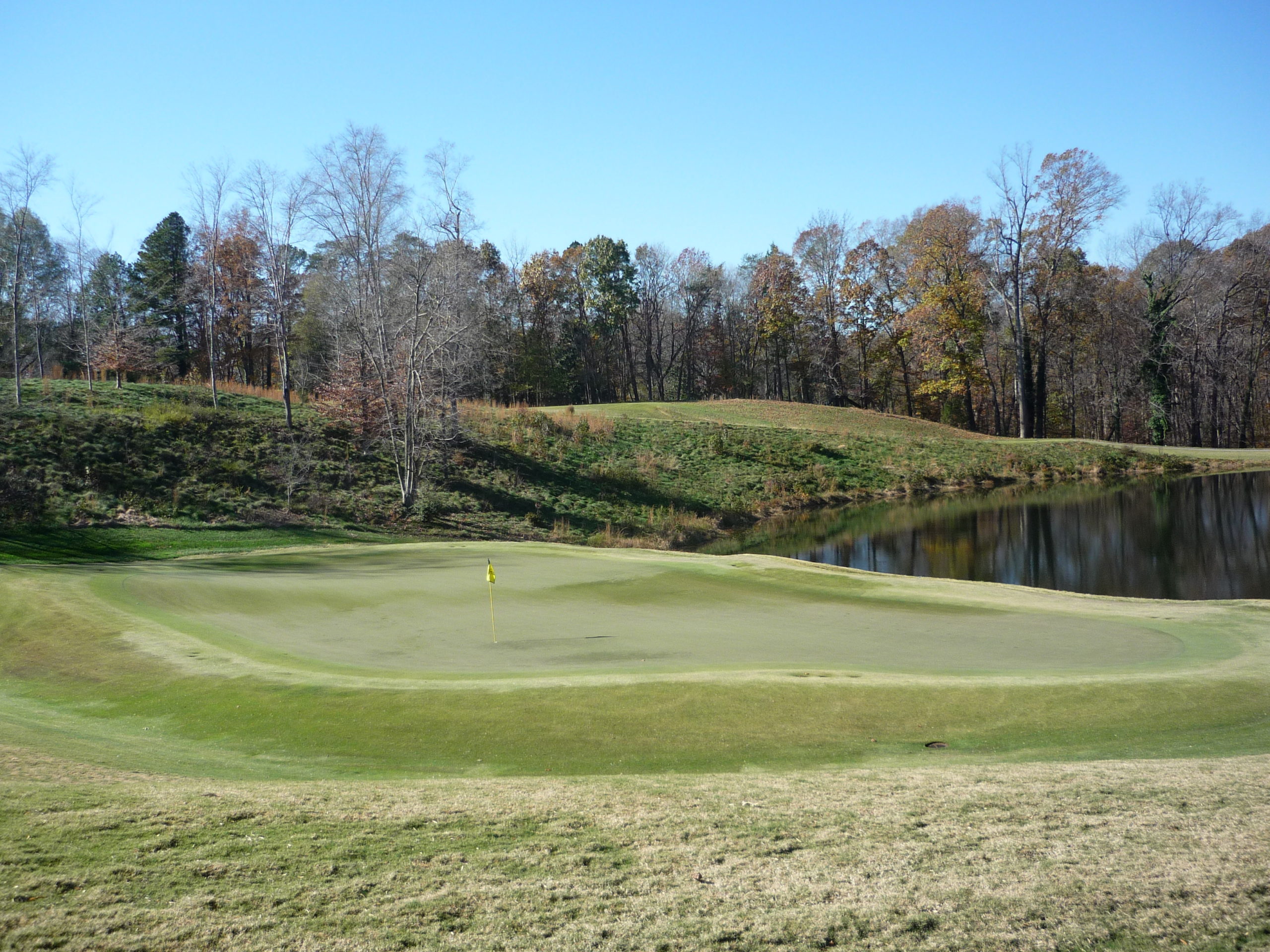
Hole 9 – 415 yards – Par 4
I finished out the front nine with my only birdie of the day at this dogleg right. Pretty surprising since I cannot hit a fade!
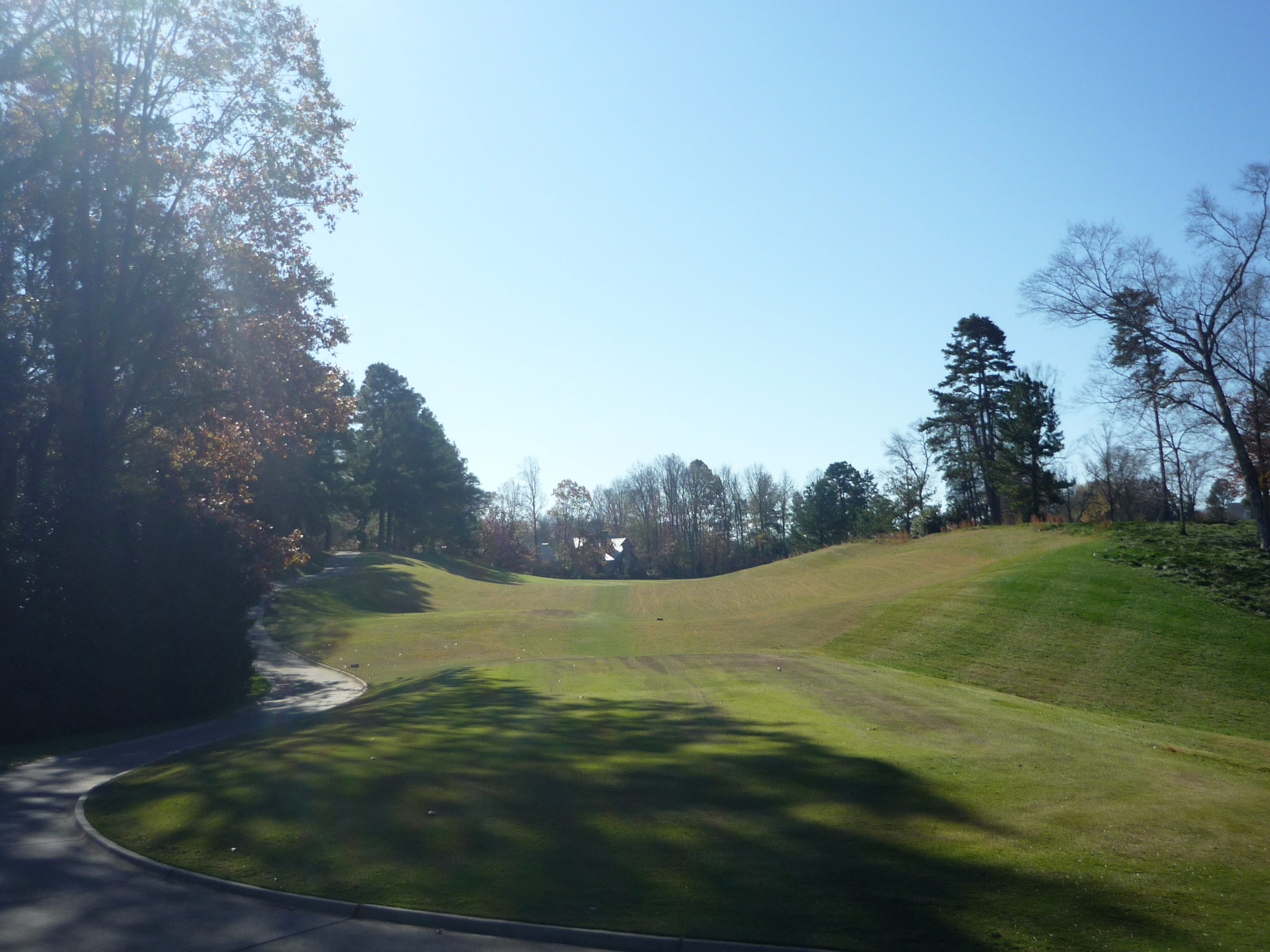
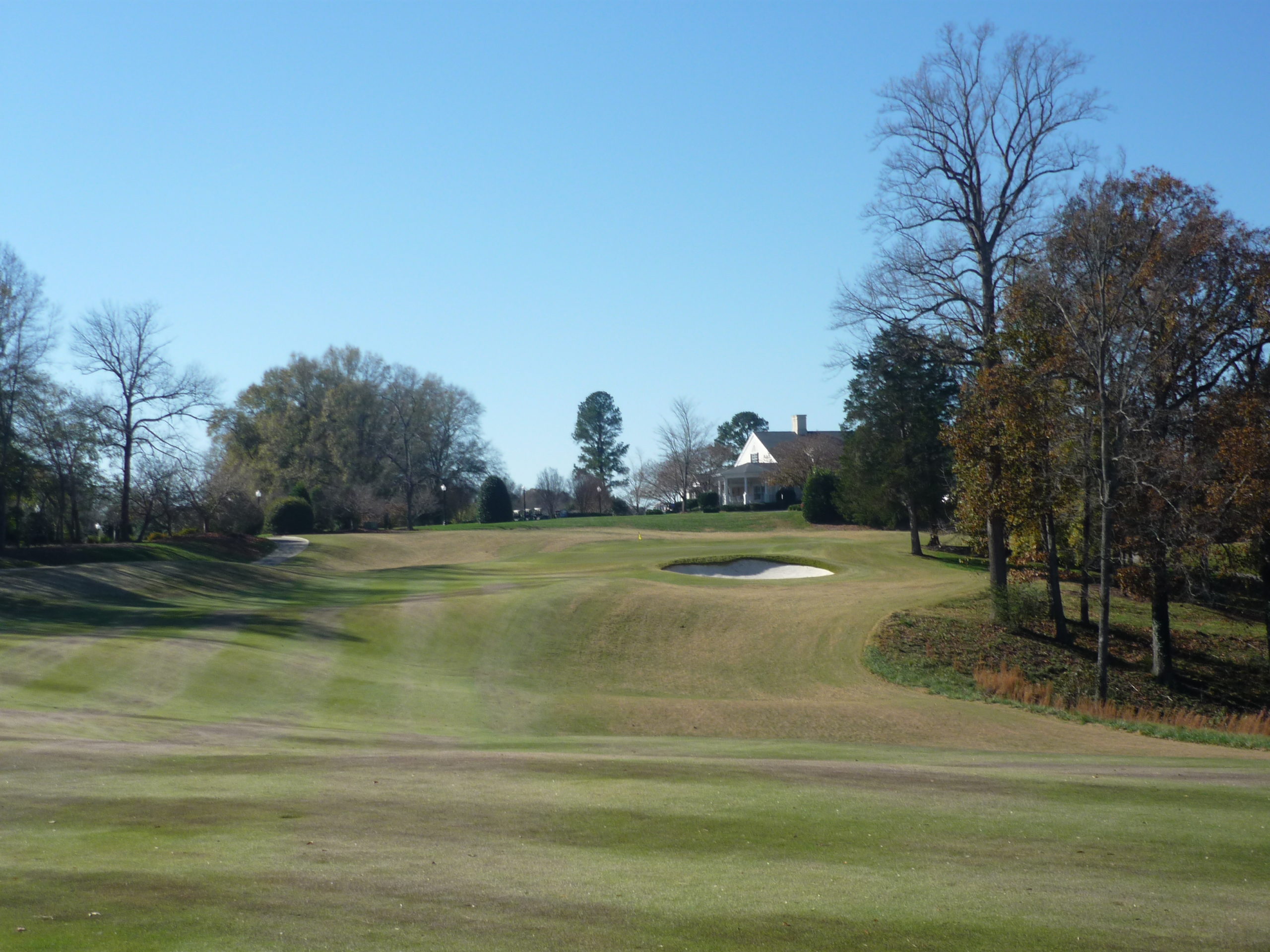
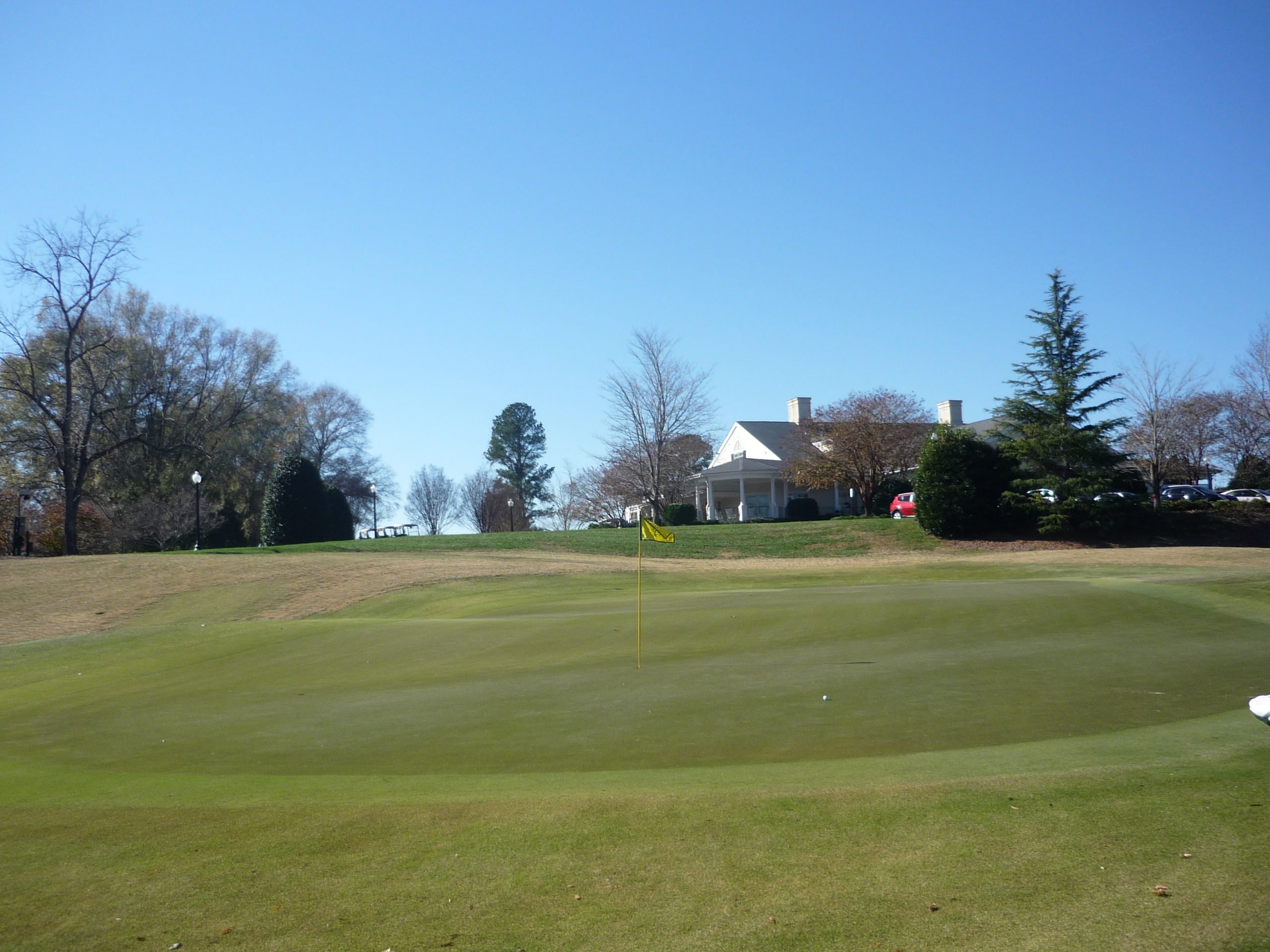
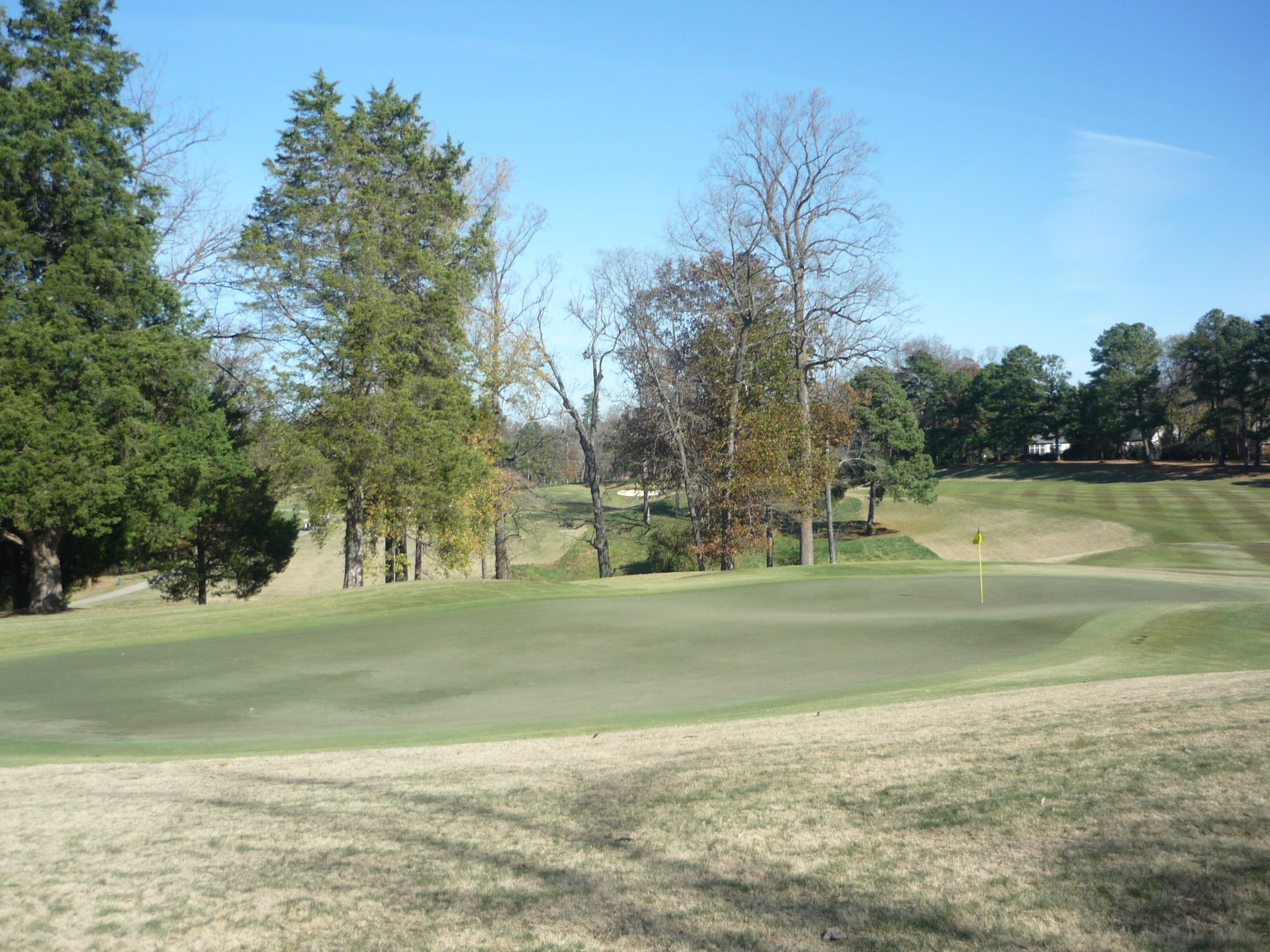
Hole 10 – 553 yards – Par 5
Good luck when the wind is blowing straight into you on this long brute.
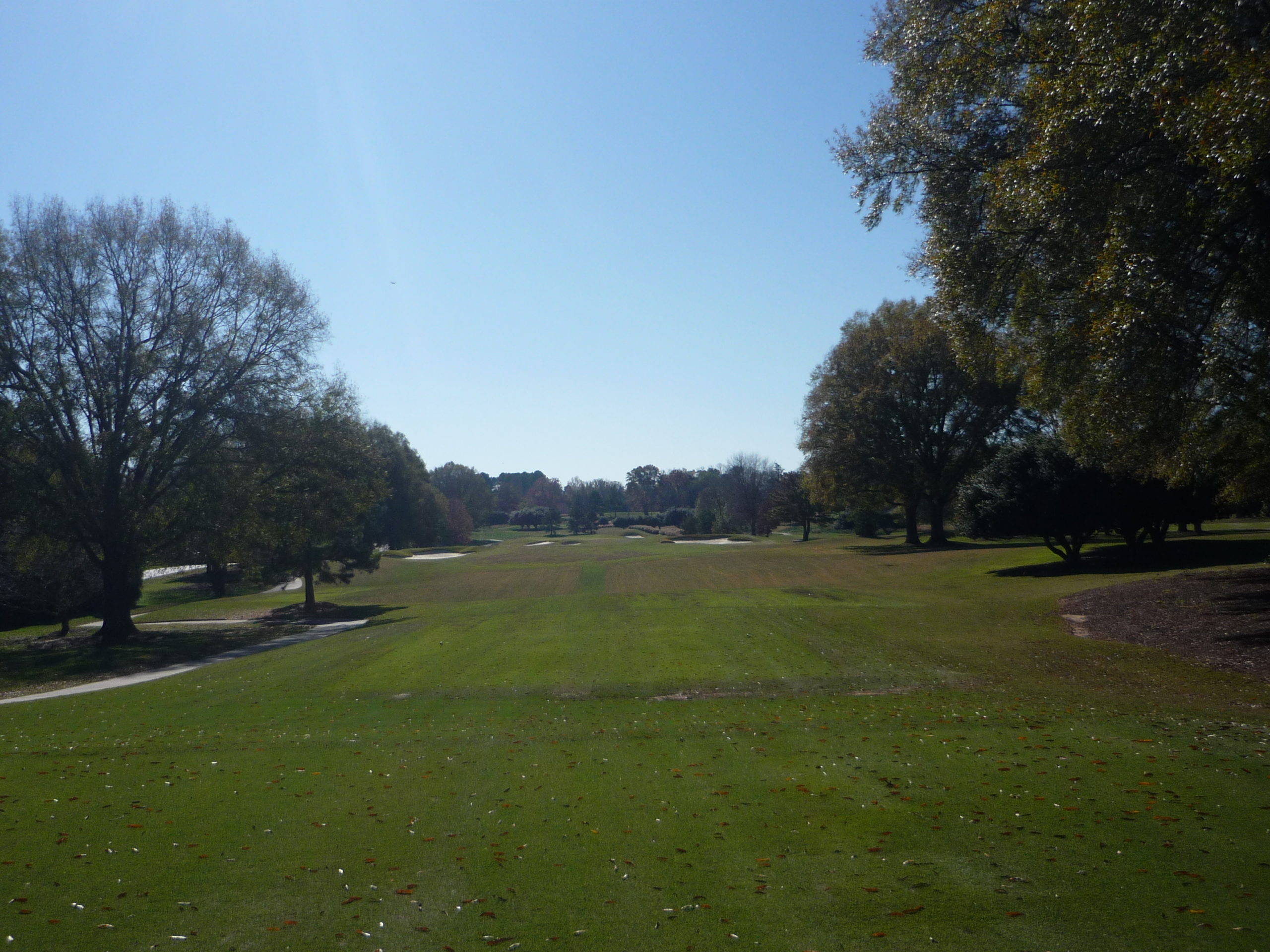
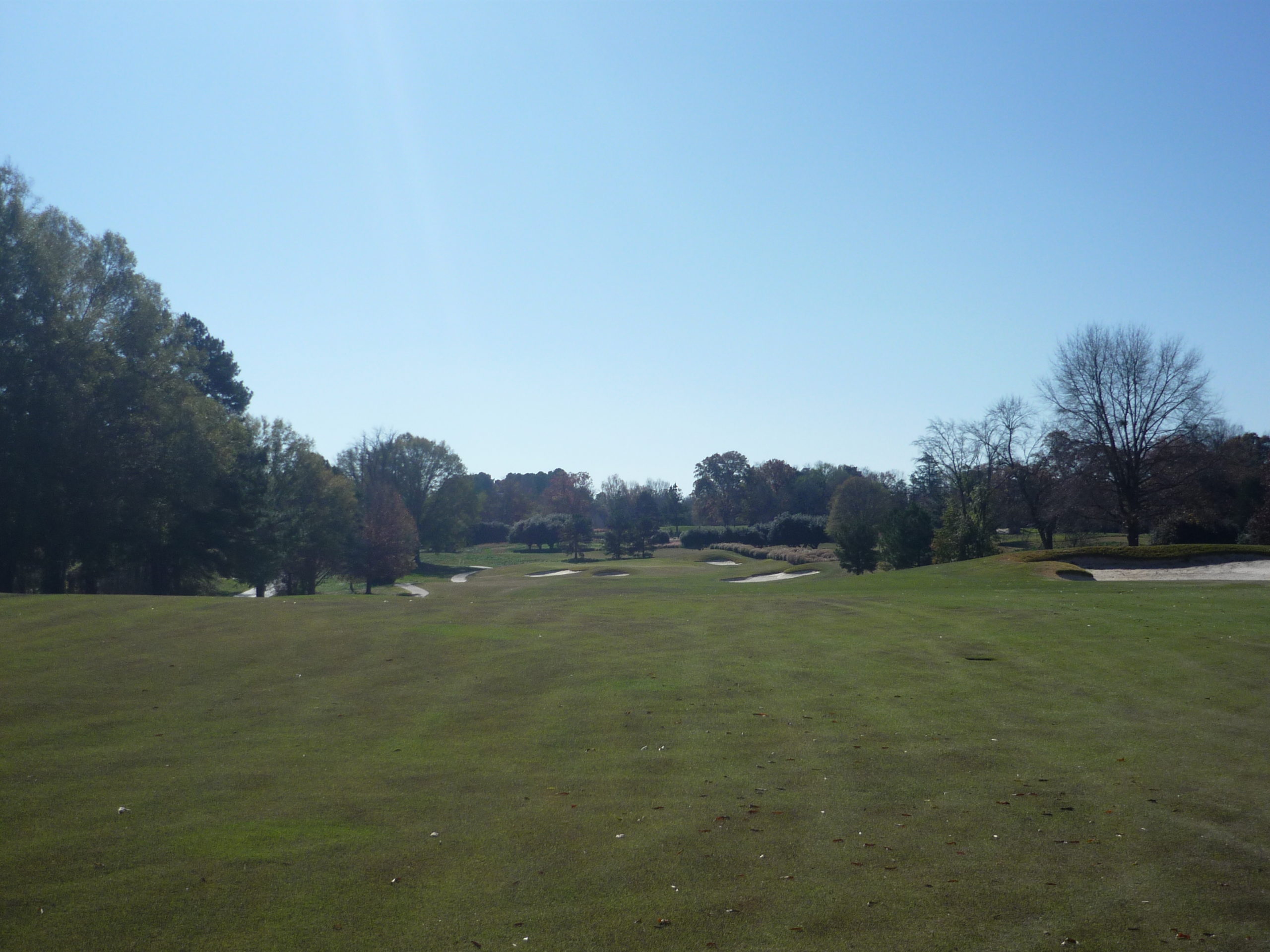
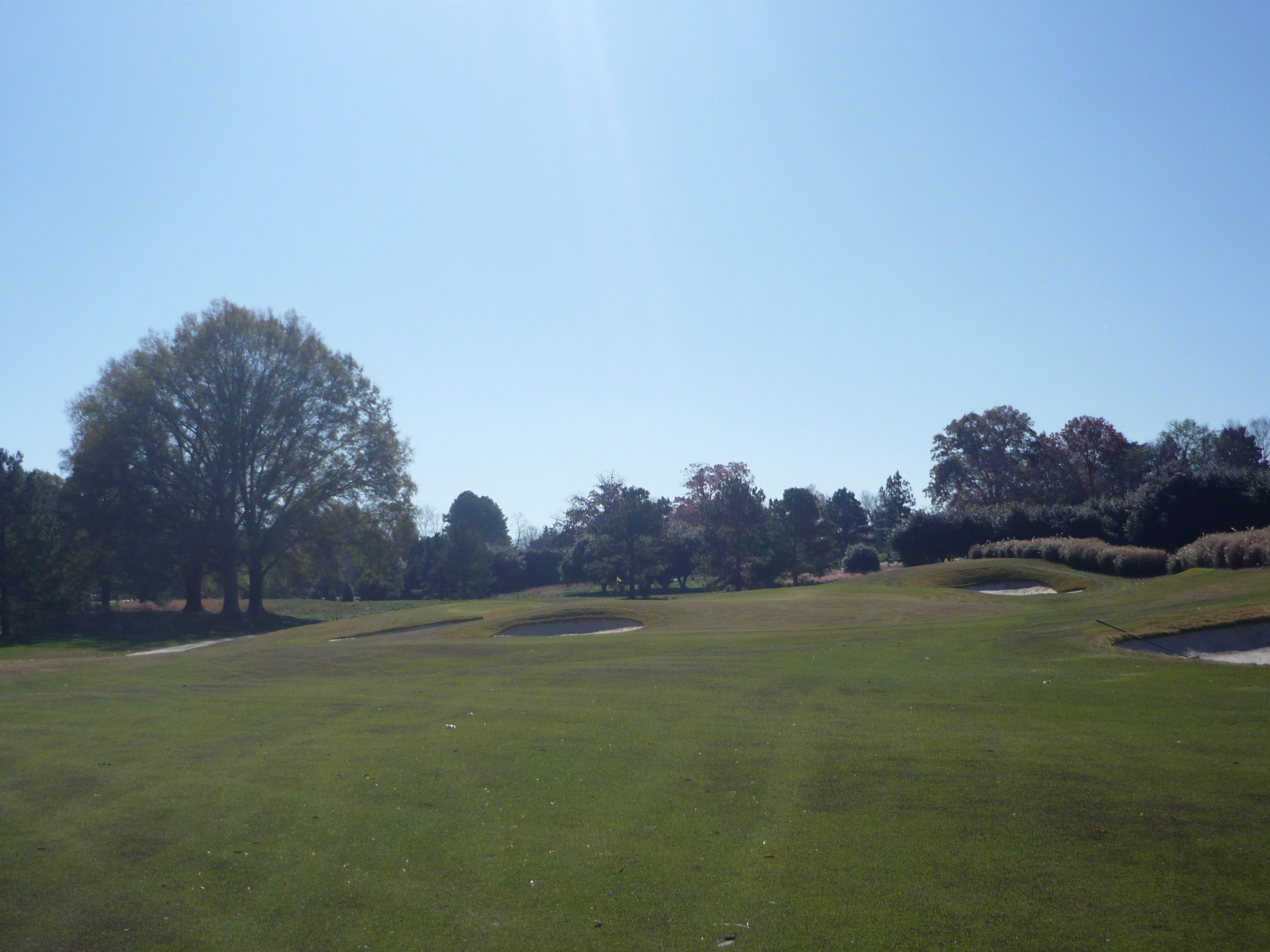
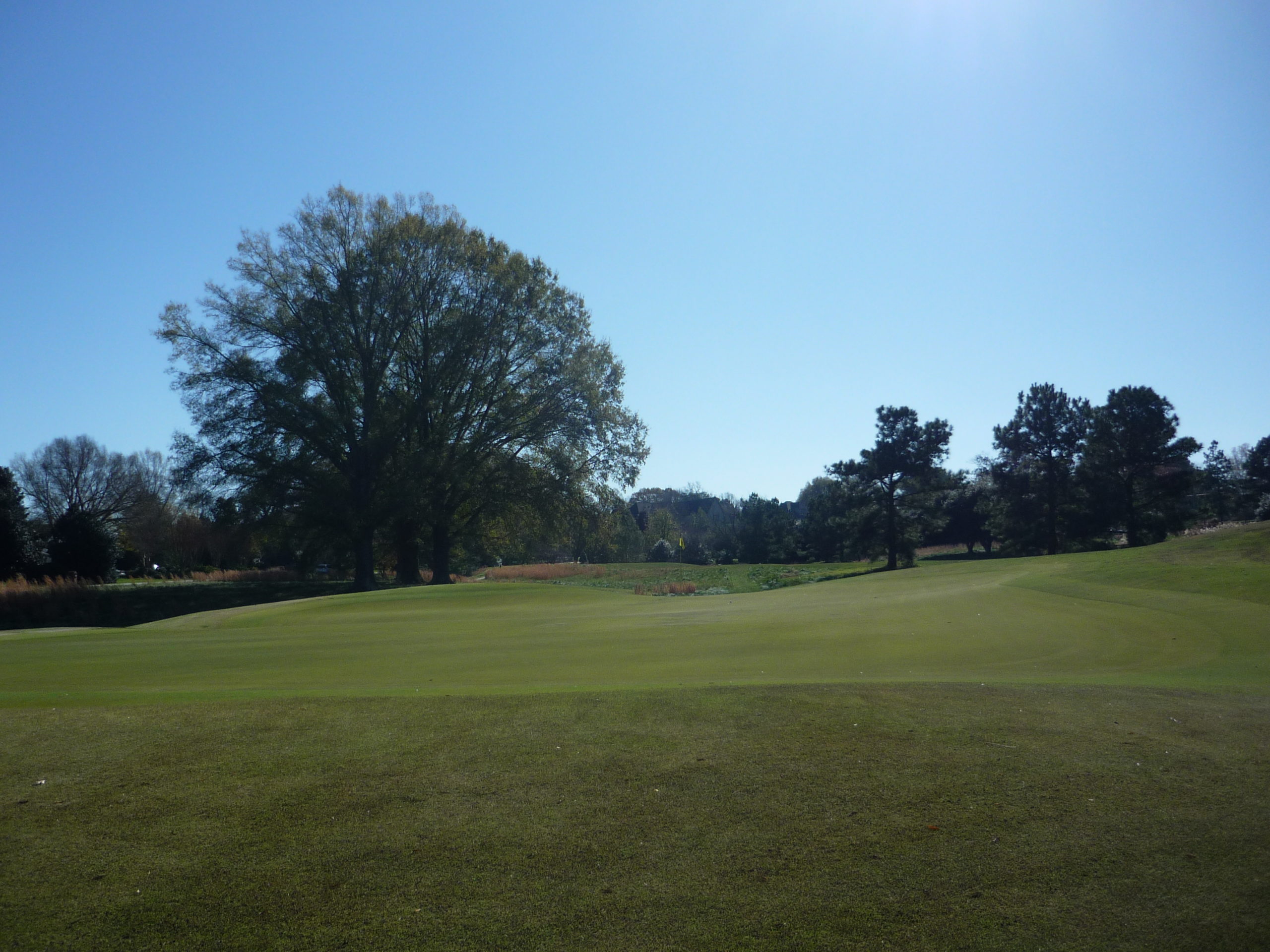
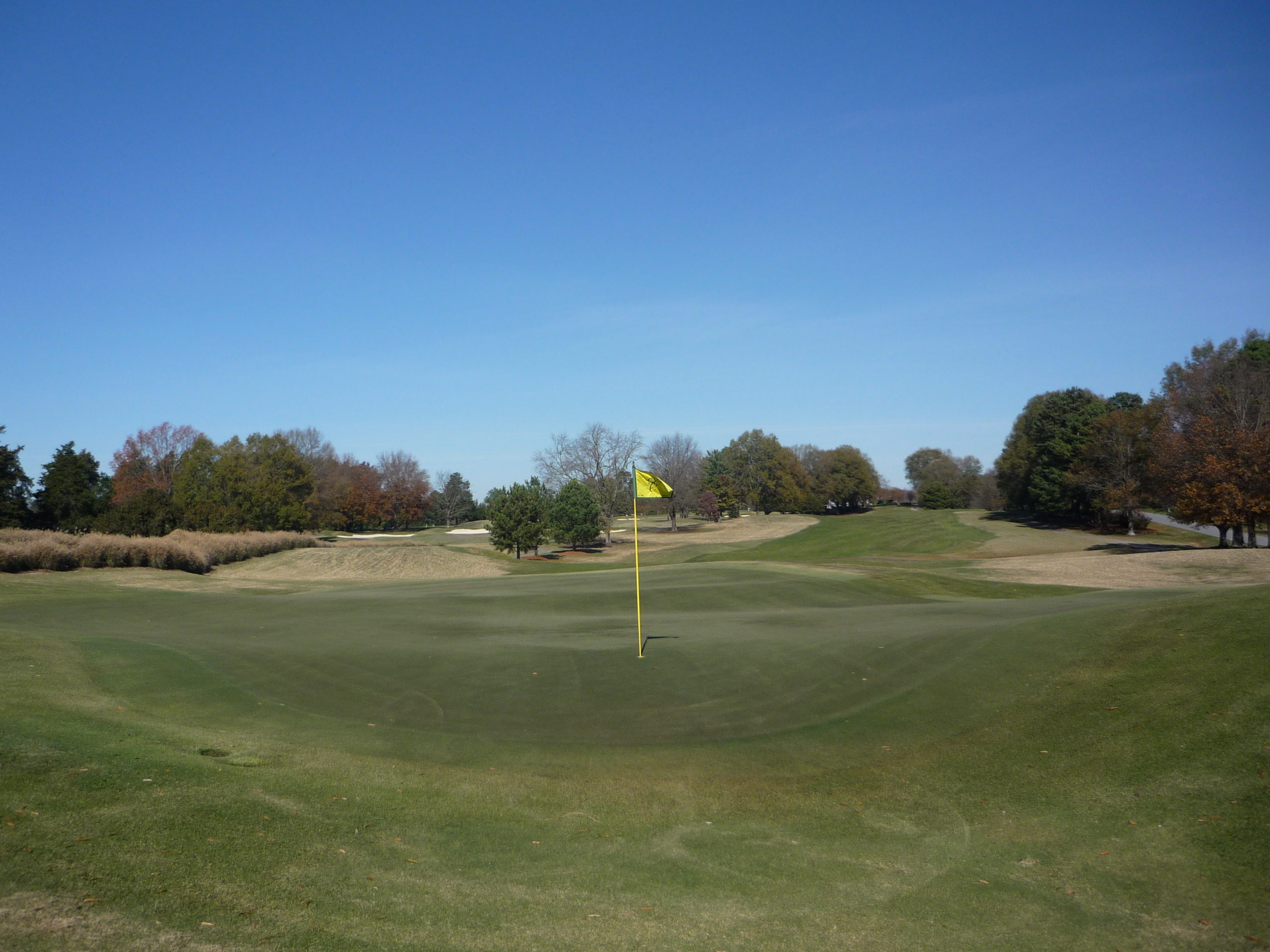
Hole 11 – 393 yards – Par 4
It’s best to play a draw on this tee shot. Just make sure you don’t get blocked by the trees.
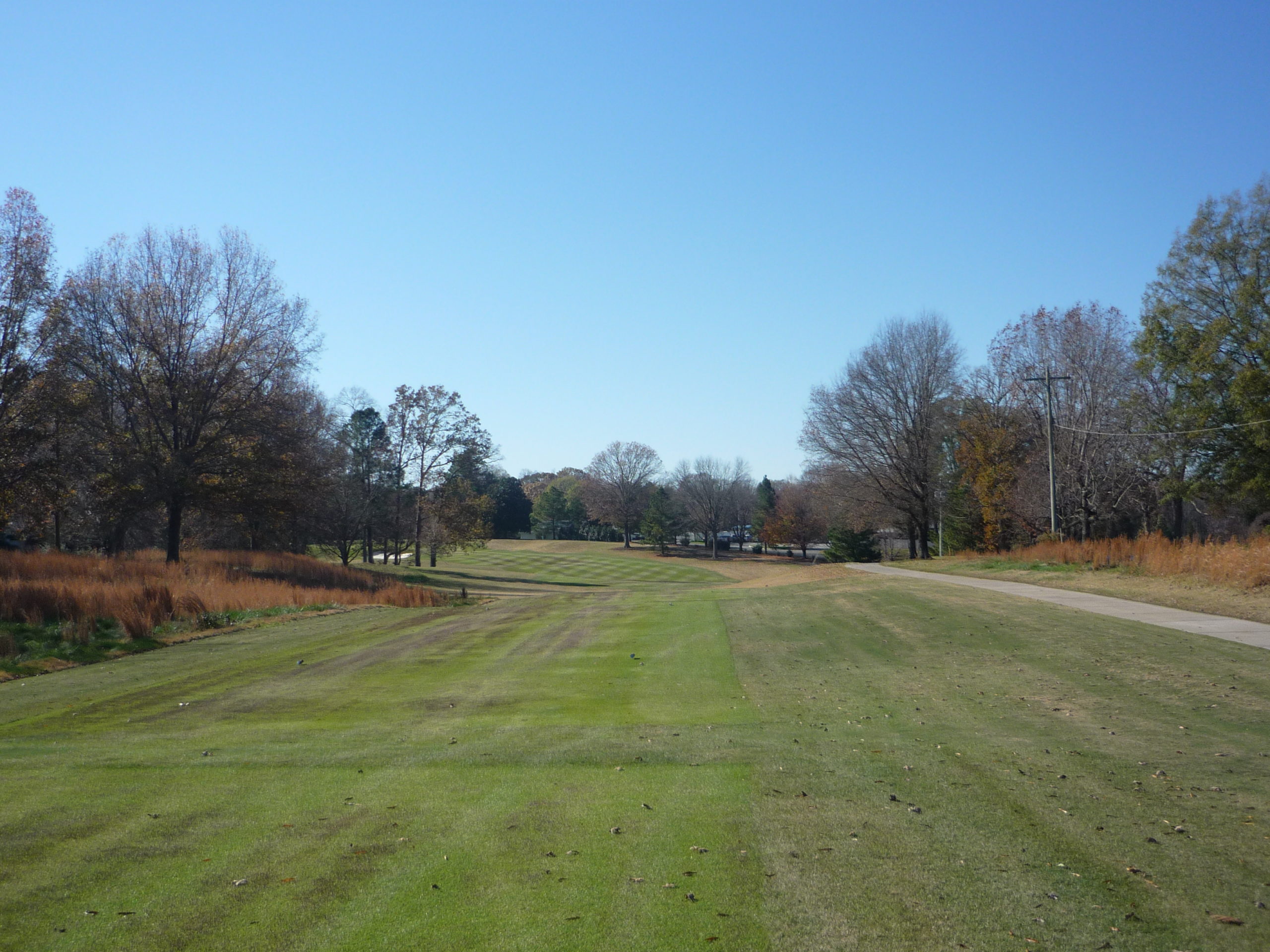
The approach is all uphill to the semi-blind green.
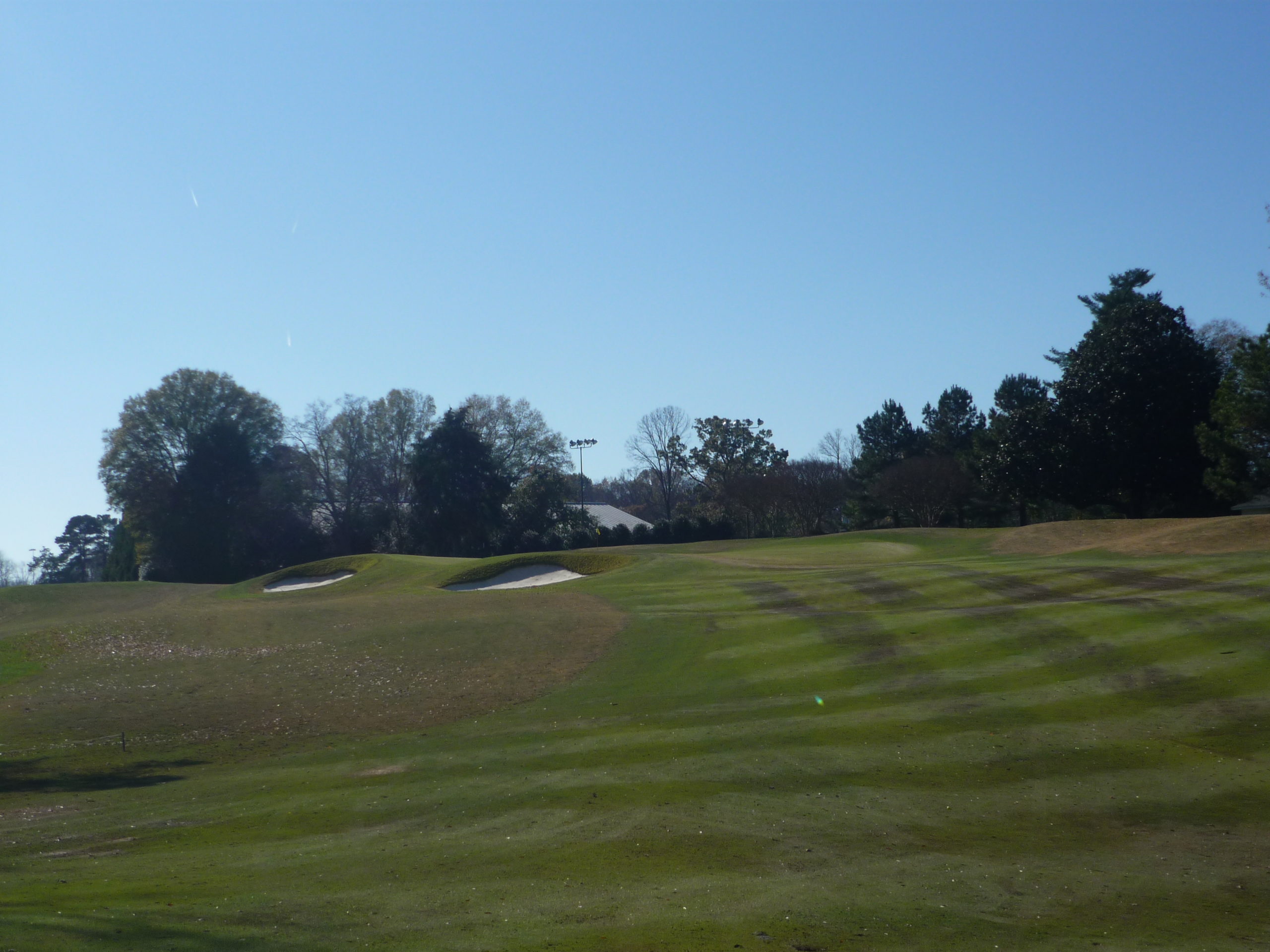
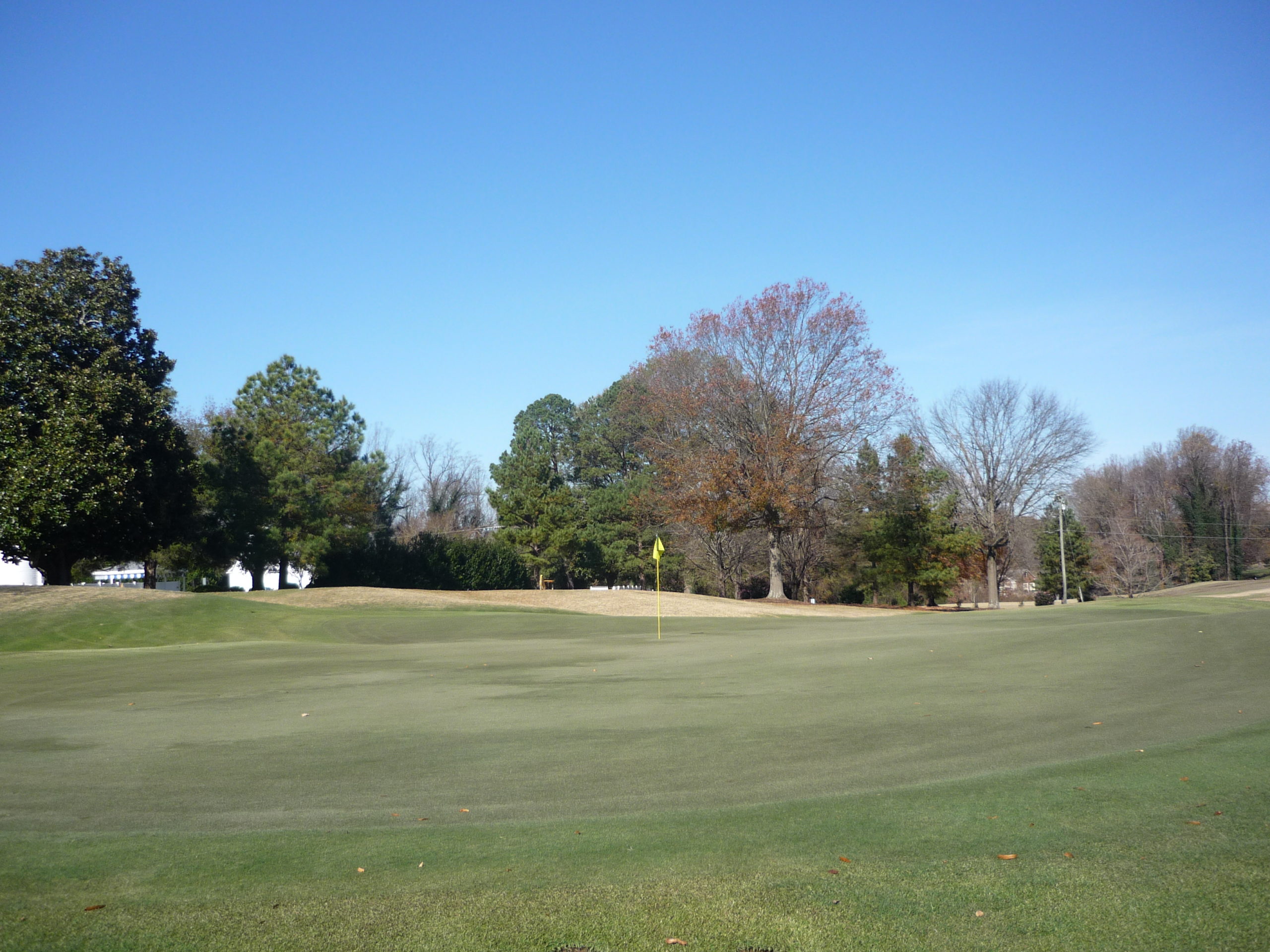
Hole 12 – 417 yards – Par 4
This hole plays straightaway from the tee with only a fairway bunker standing guard.
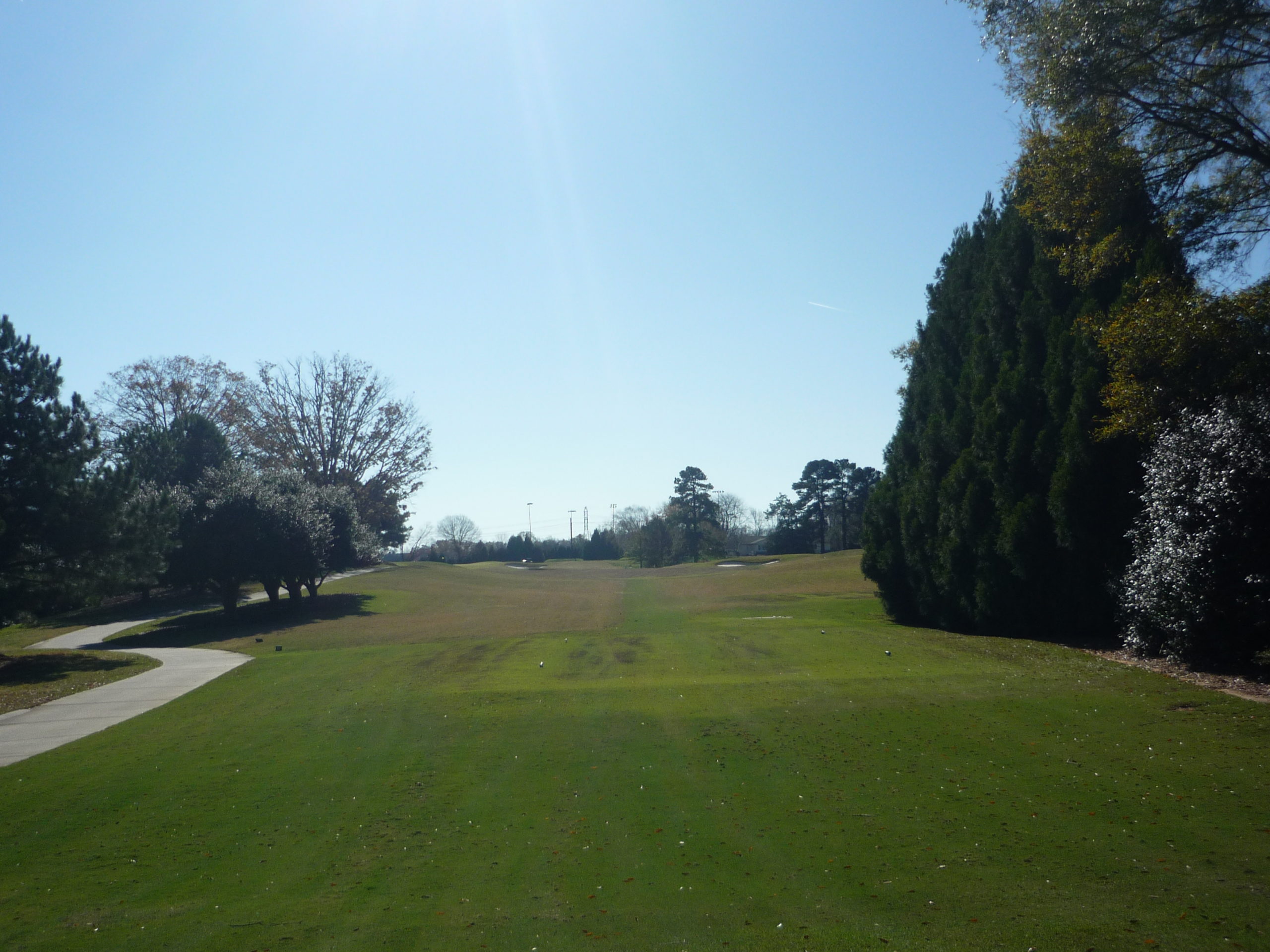
The fairway heaves down then up to the green with a false front.
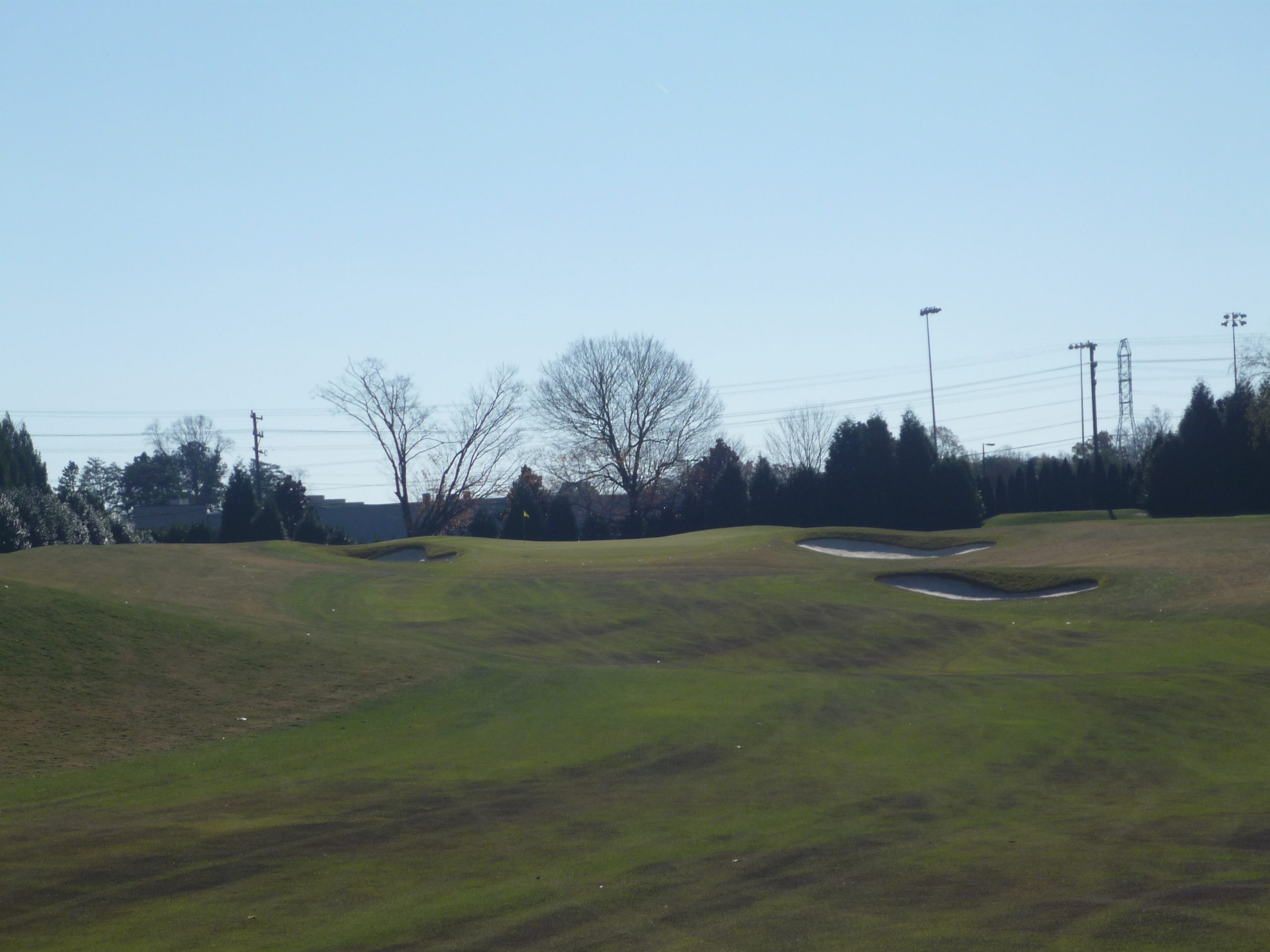
Check out the contours around the edges of this putting surface.
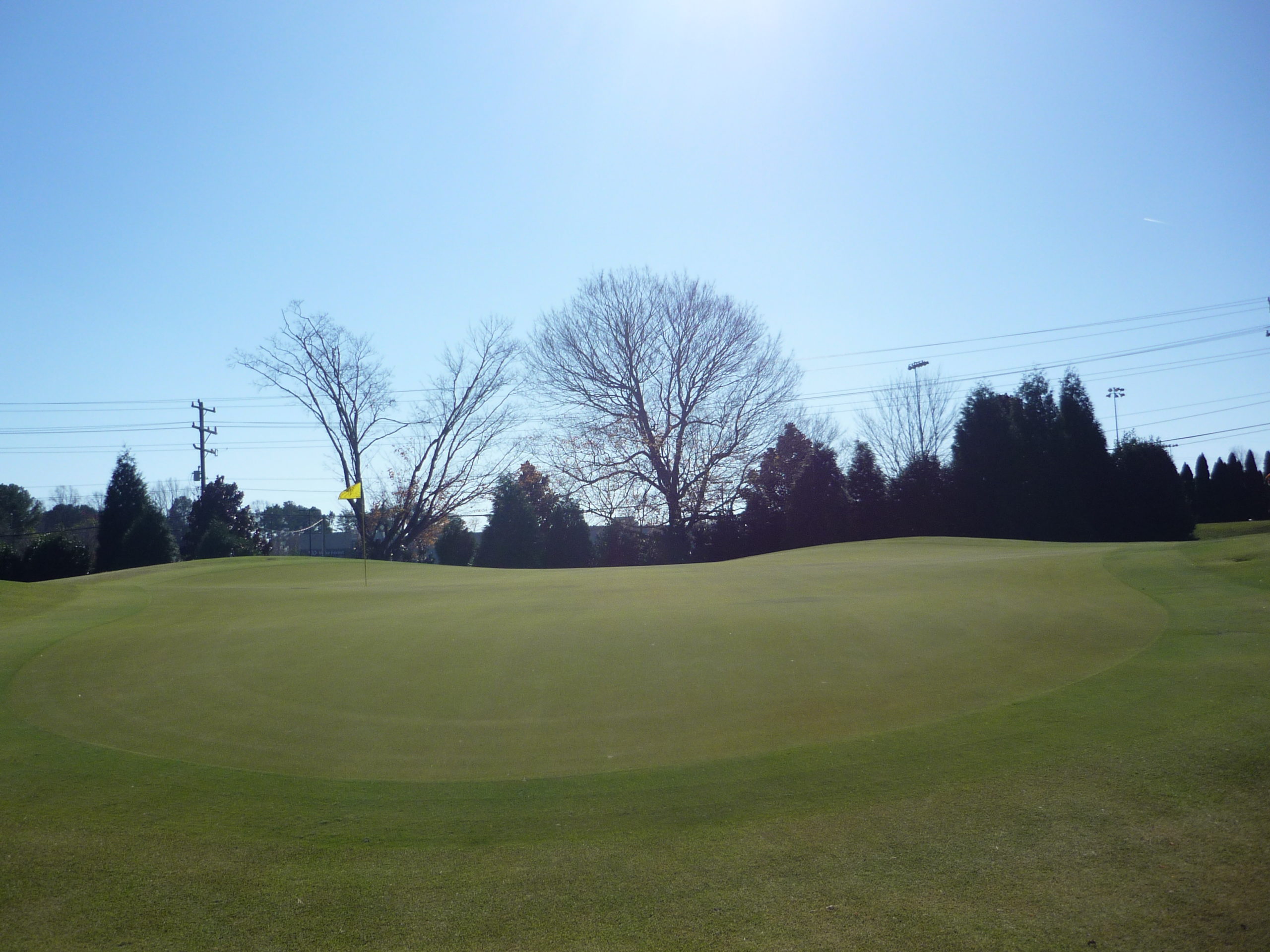
Hole 13 – 517 yards – Par 5
This fairway cants to the left so I recommend a draw up the right side to hit the speed slot. From there, make sure you avoid the bunkers all the way to the green.
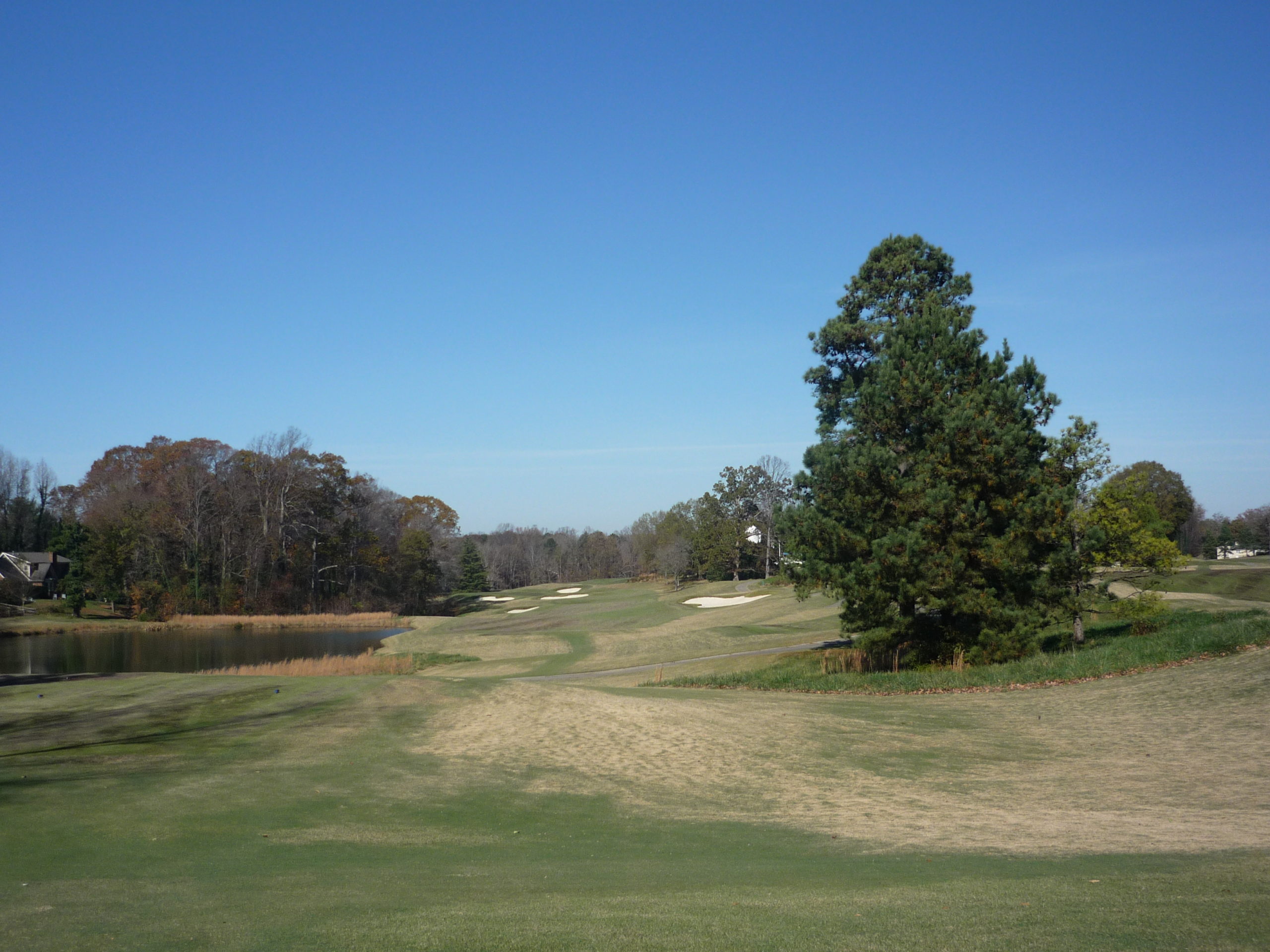
See what I mean about the sand?
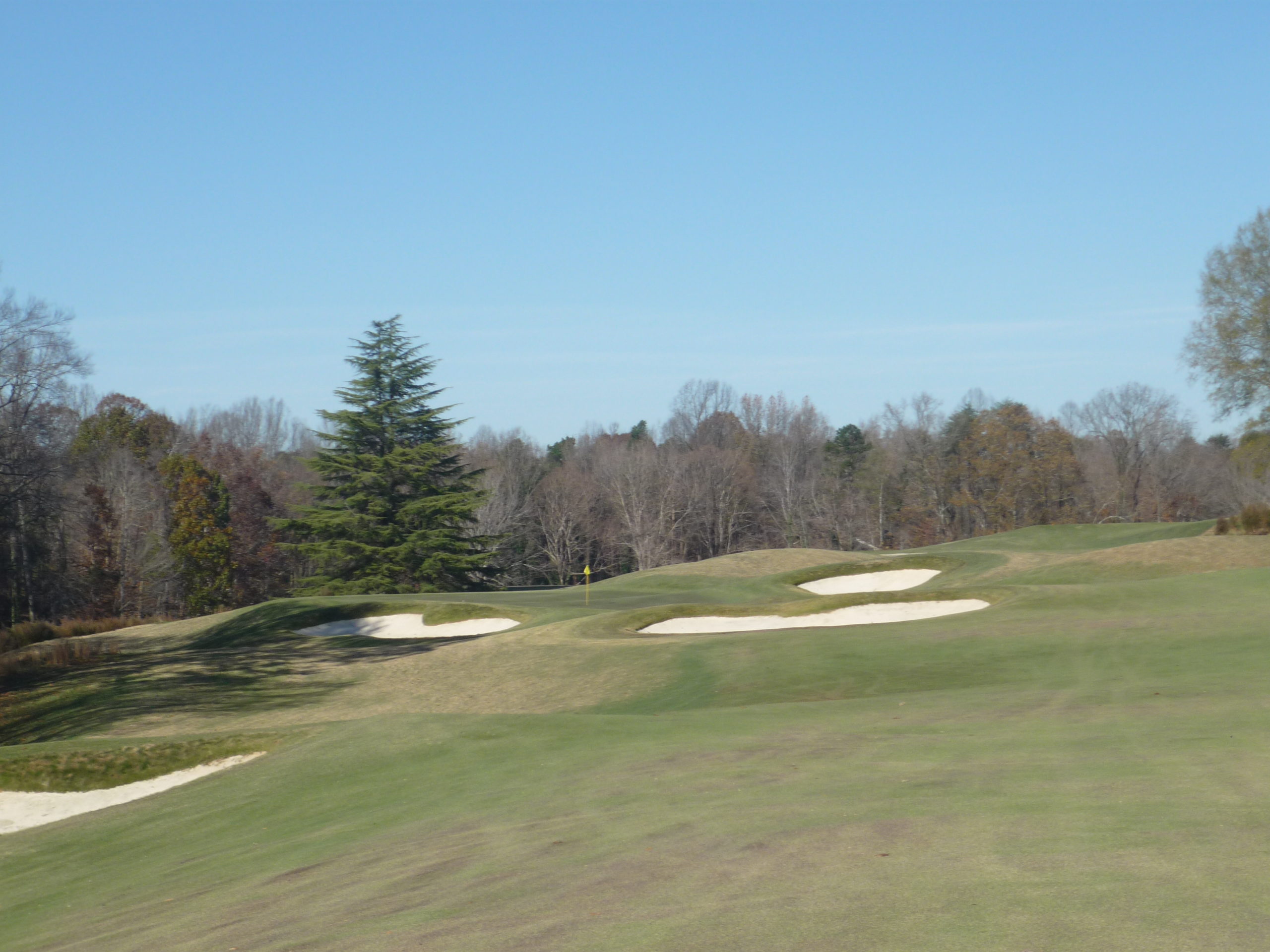
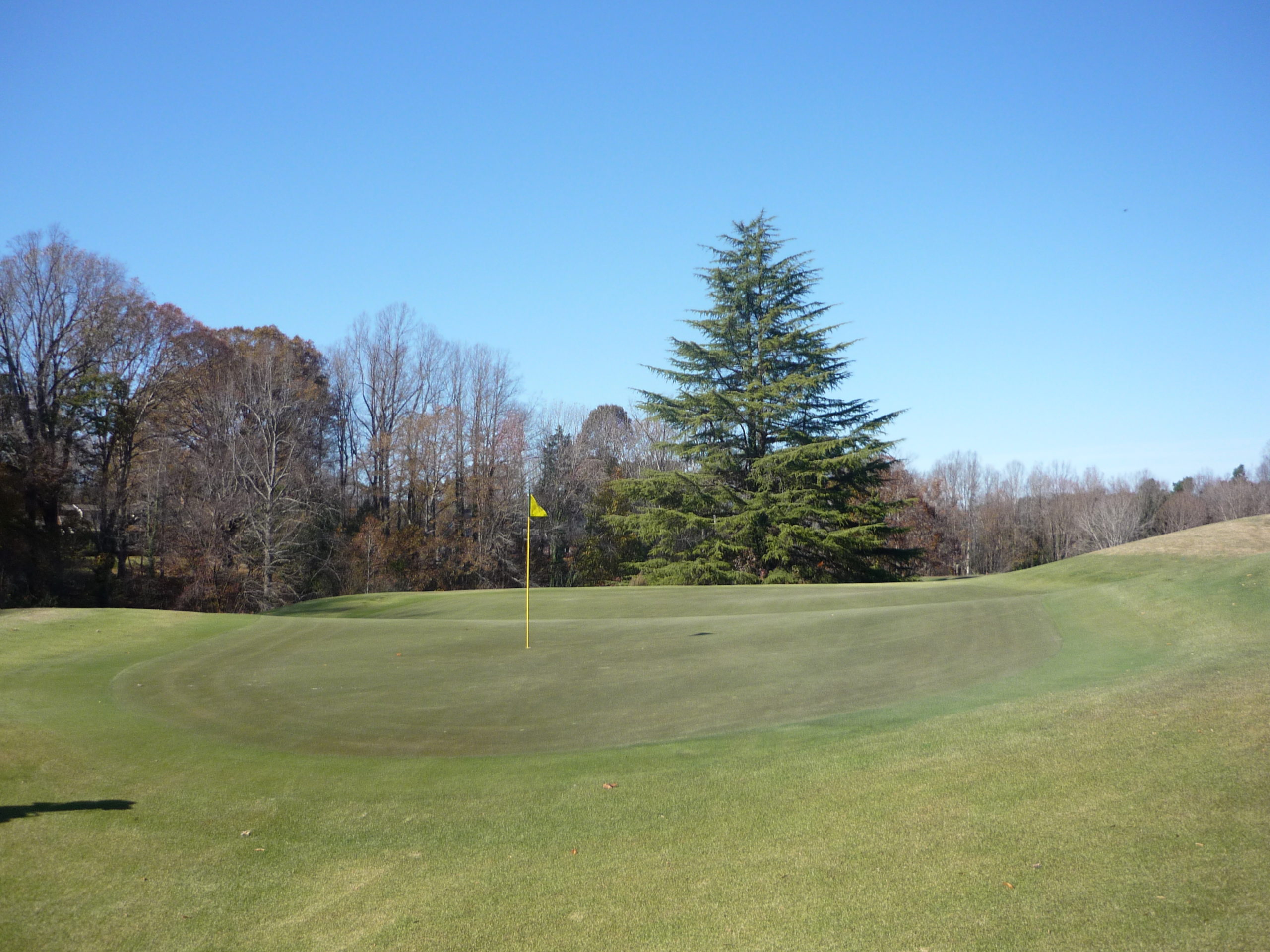
Hole 14 – 154 yards – Par 3
This is the second par three with trouble long. The green is quite shallow but you can have some long putts if your direction is off.
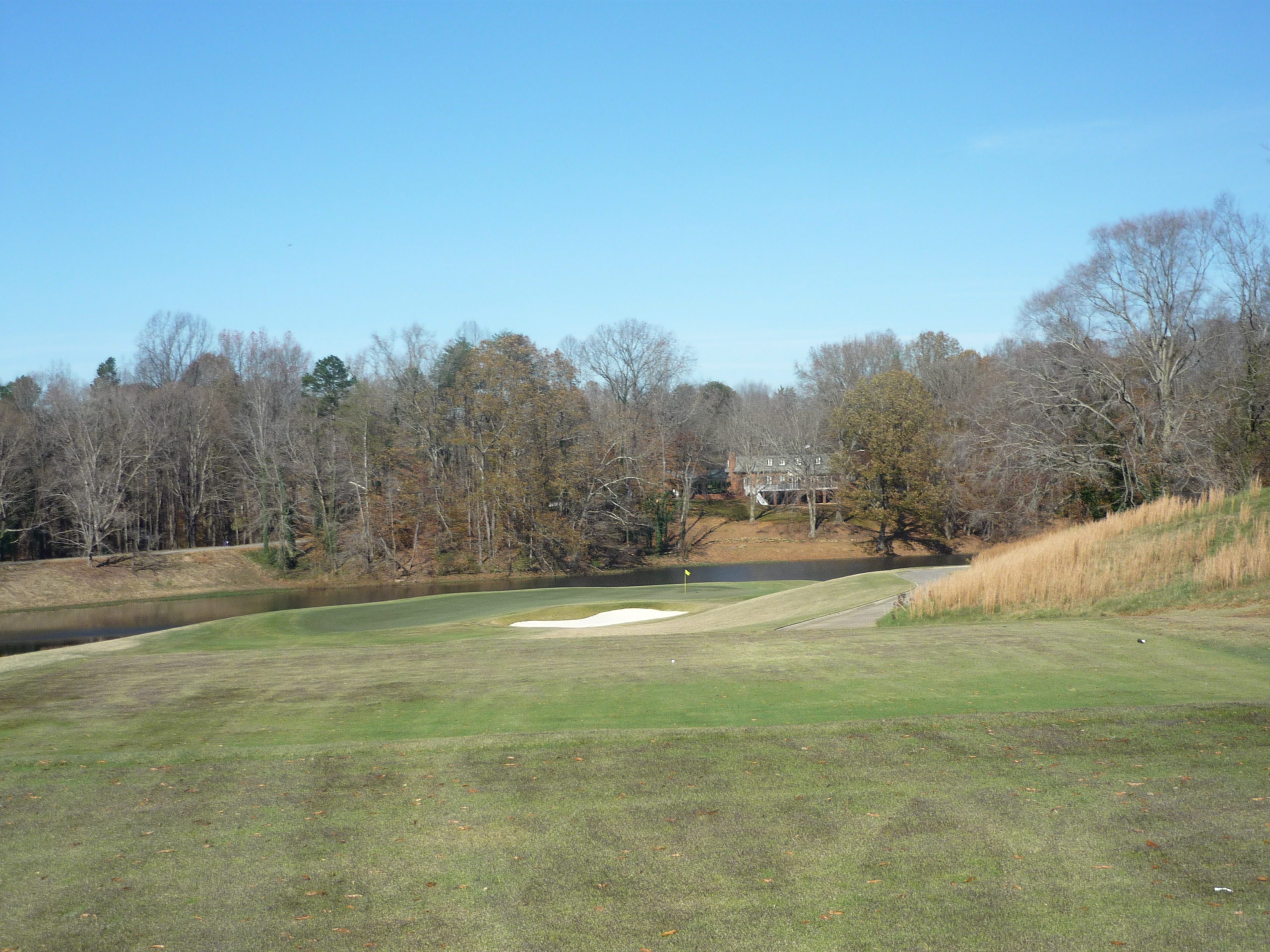
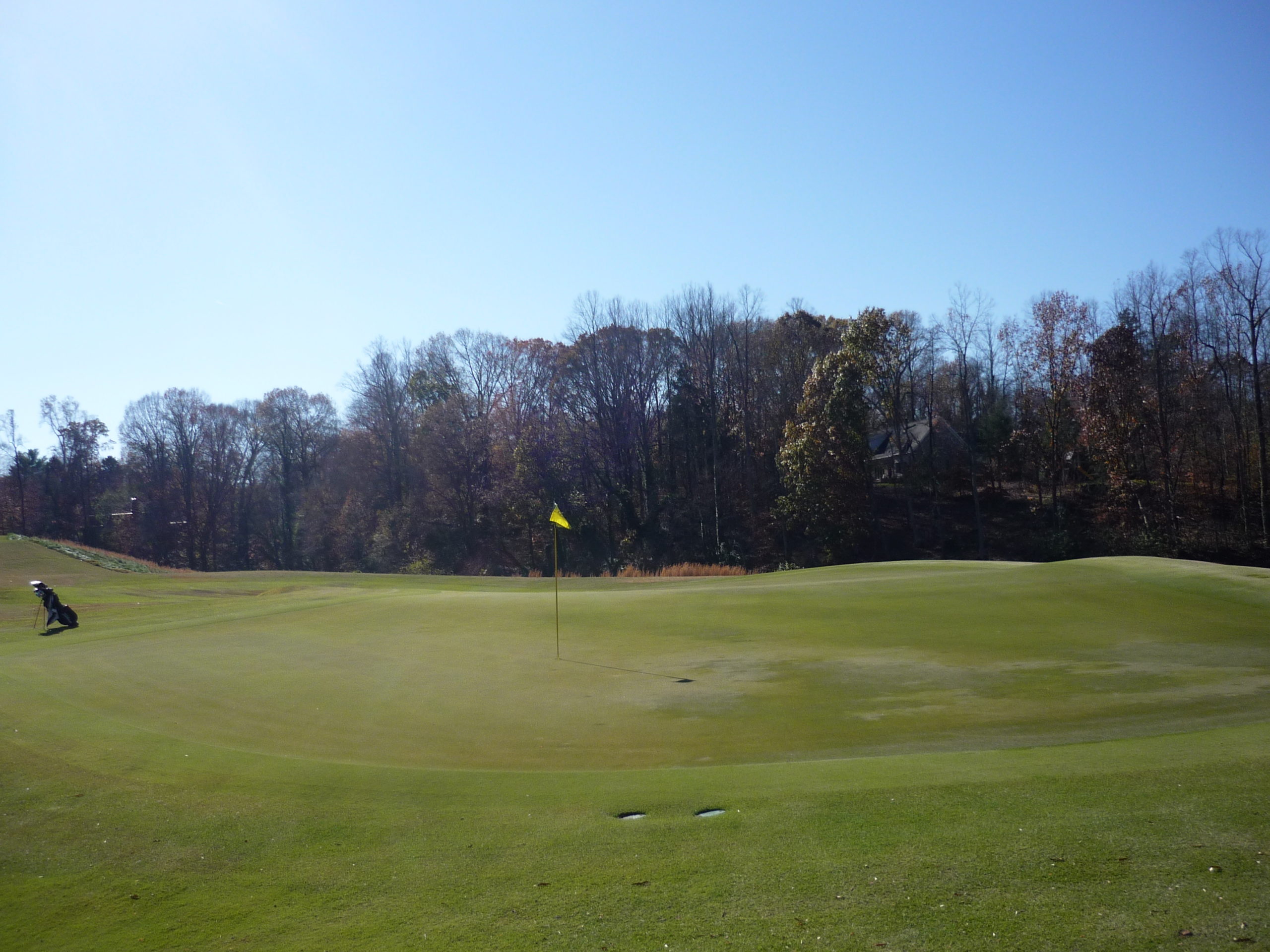
Hole 15 – 355 yards – Par 4
The slope makes this hole play longer than the scorecard yardage. I chose to go up the extreme right side and play through the trees, it was fun.
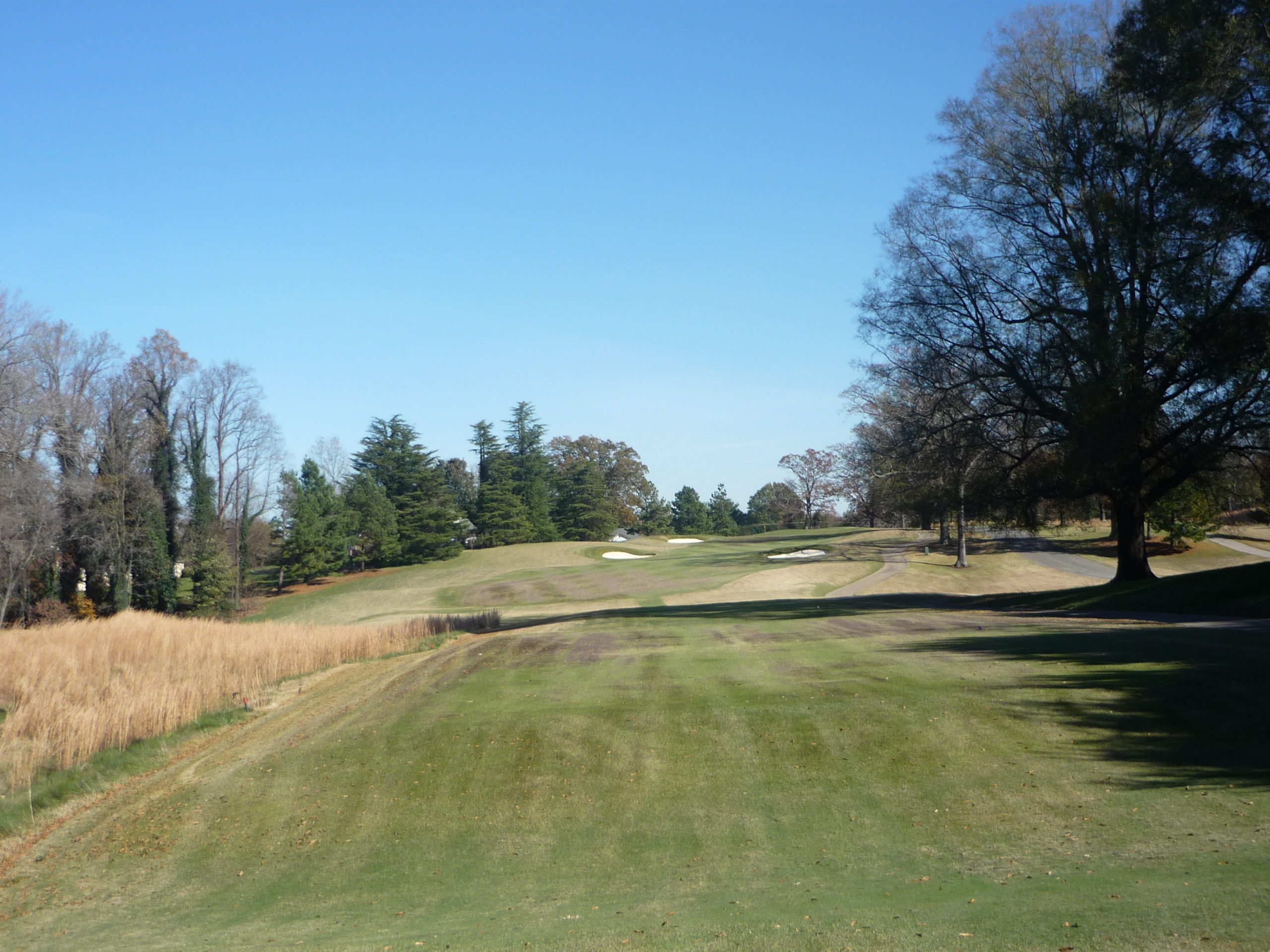
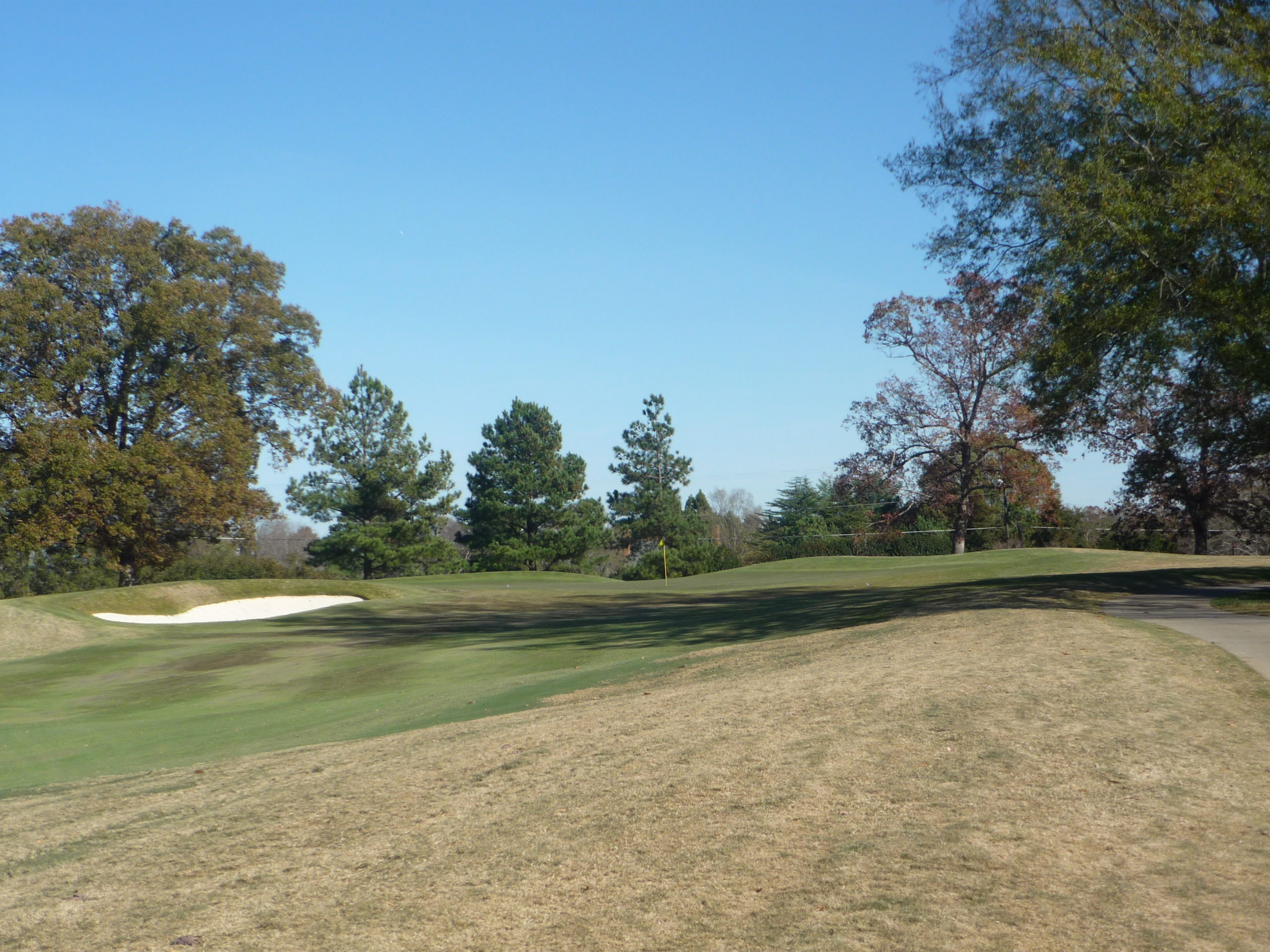
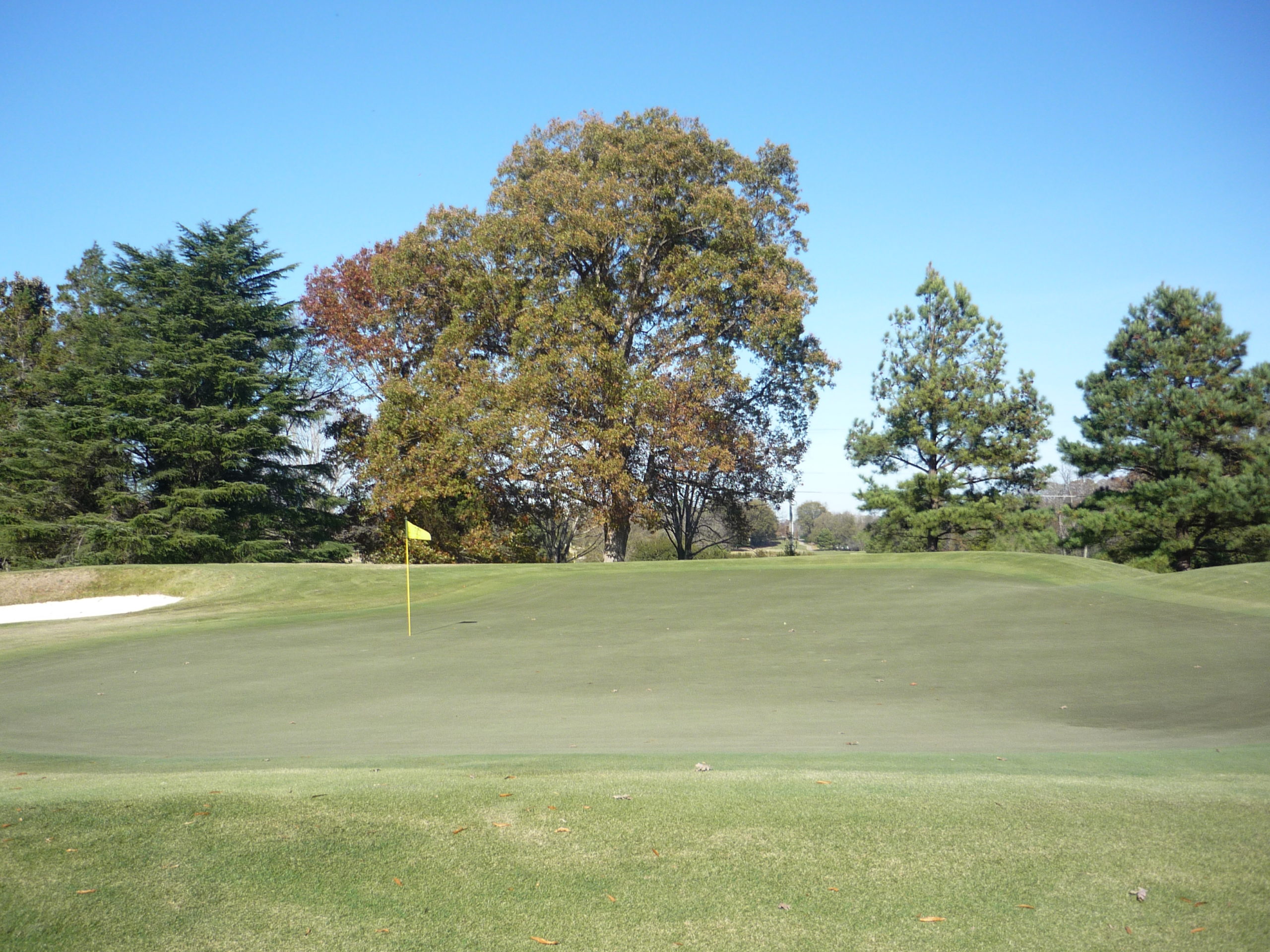
Hole 16 – 421 yards – Par 4
There’s no hiding here. Two good shots are necessary to setup a birdie look. The flag is visible in the distance.
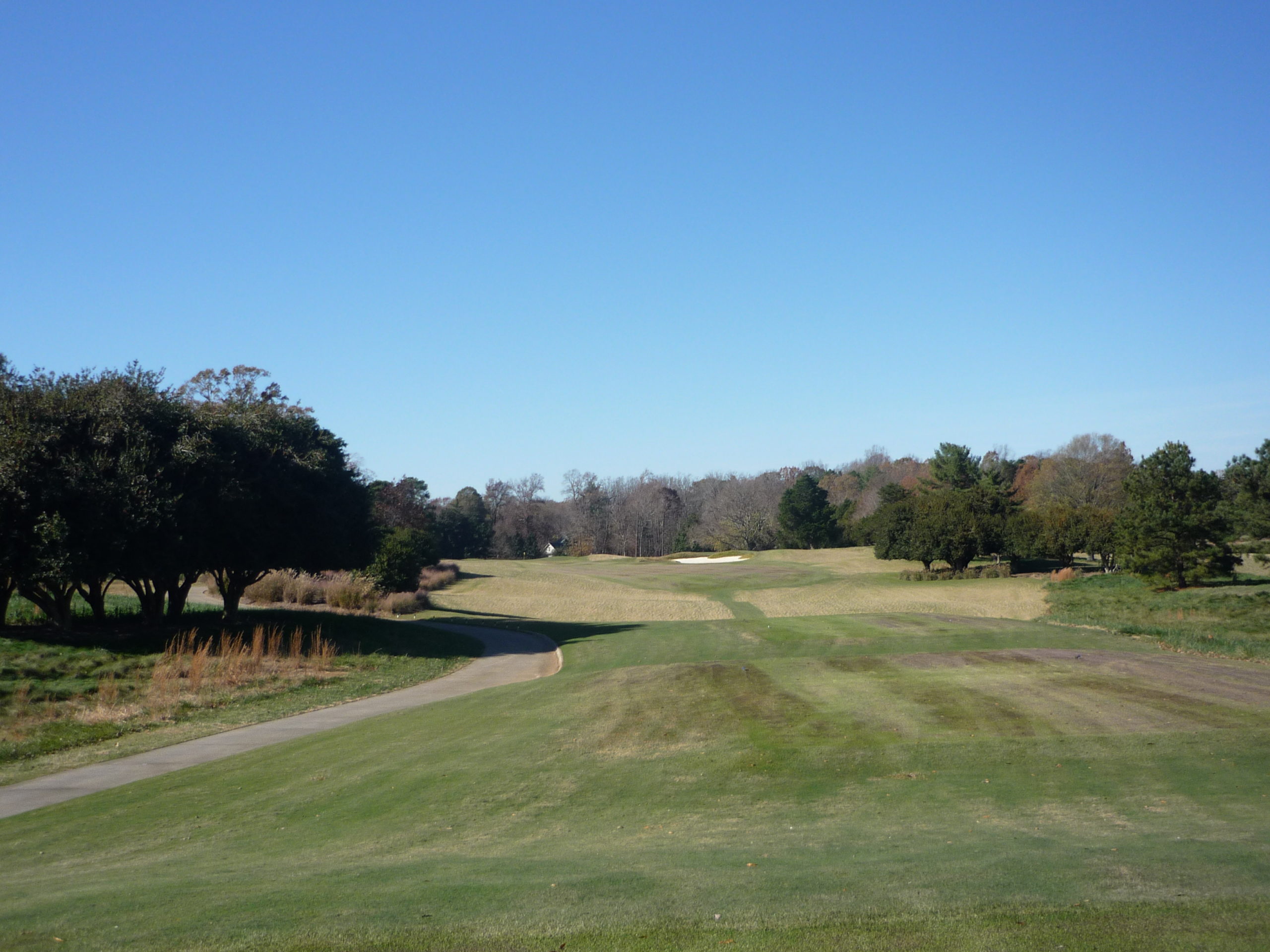
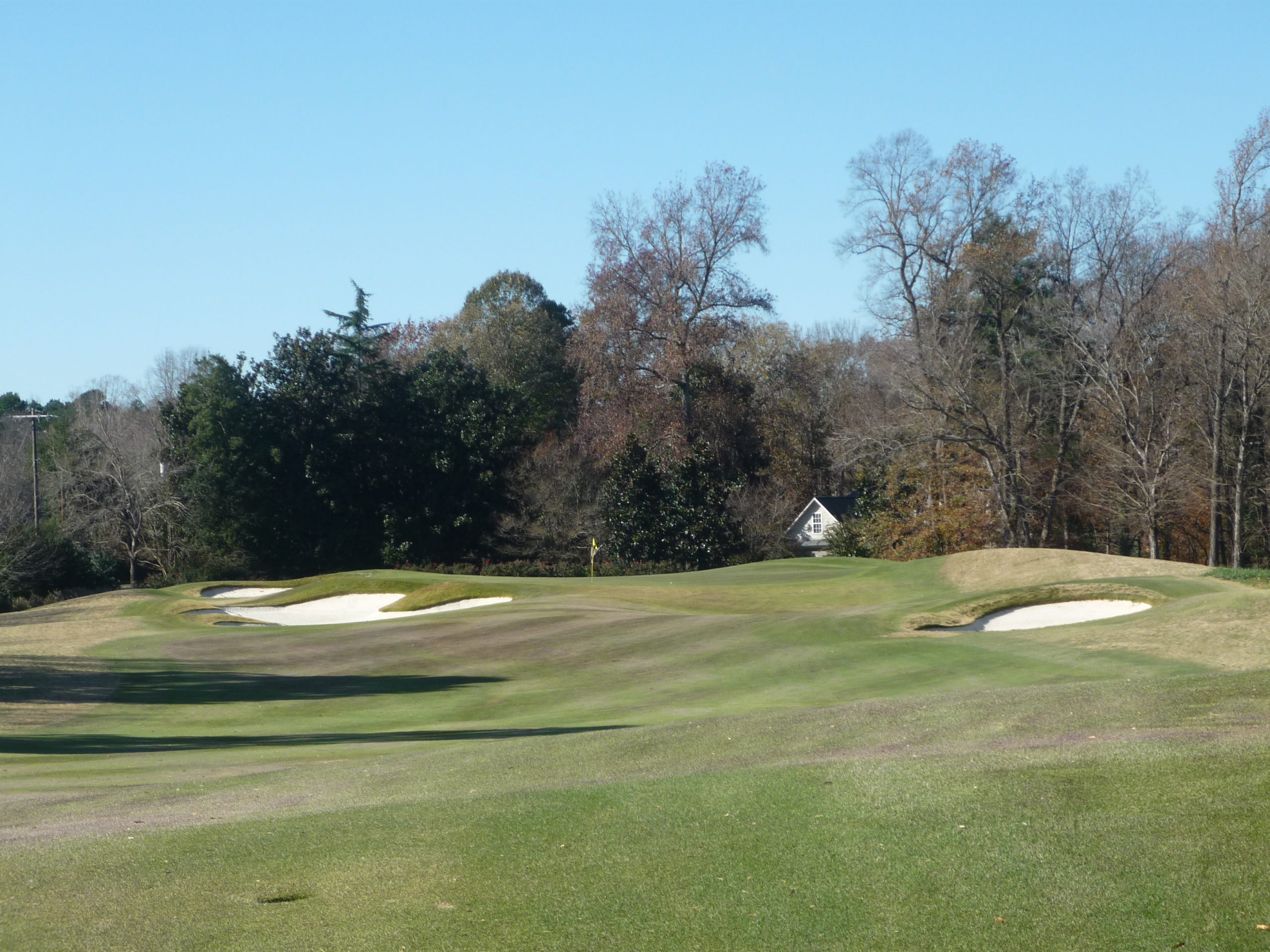
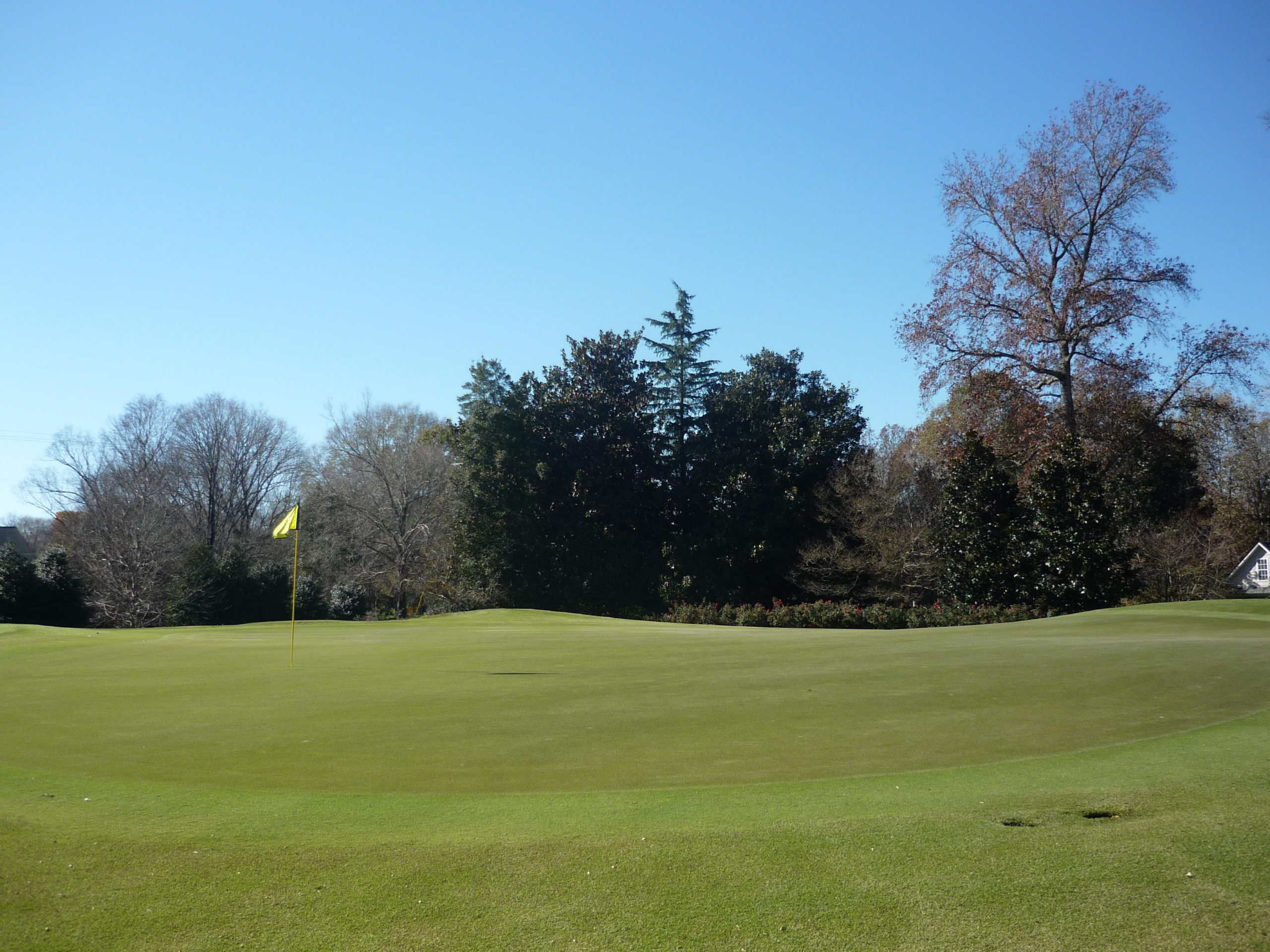
Hole 17 – 166 yards – Par 3
If you can avoid the bunker and hit this green, congratulations. Then you have to navigate some serious curves on the putting surface.
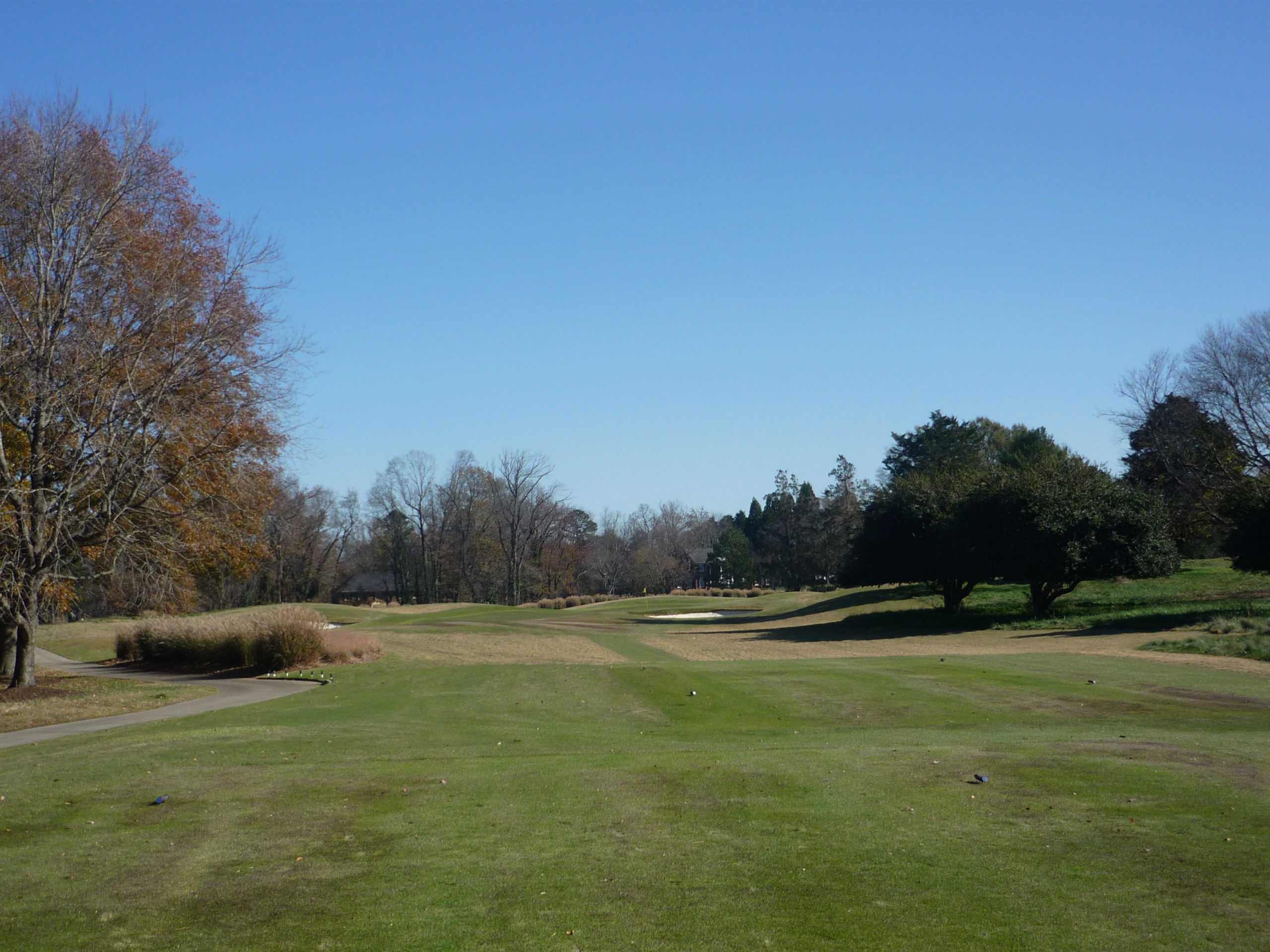
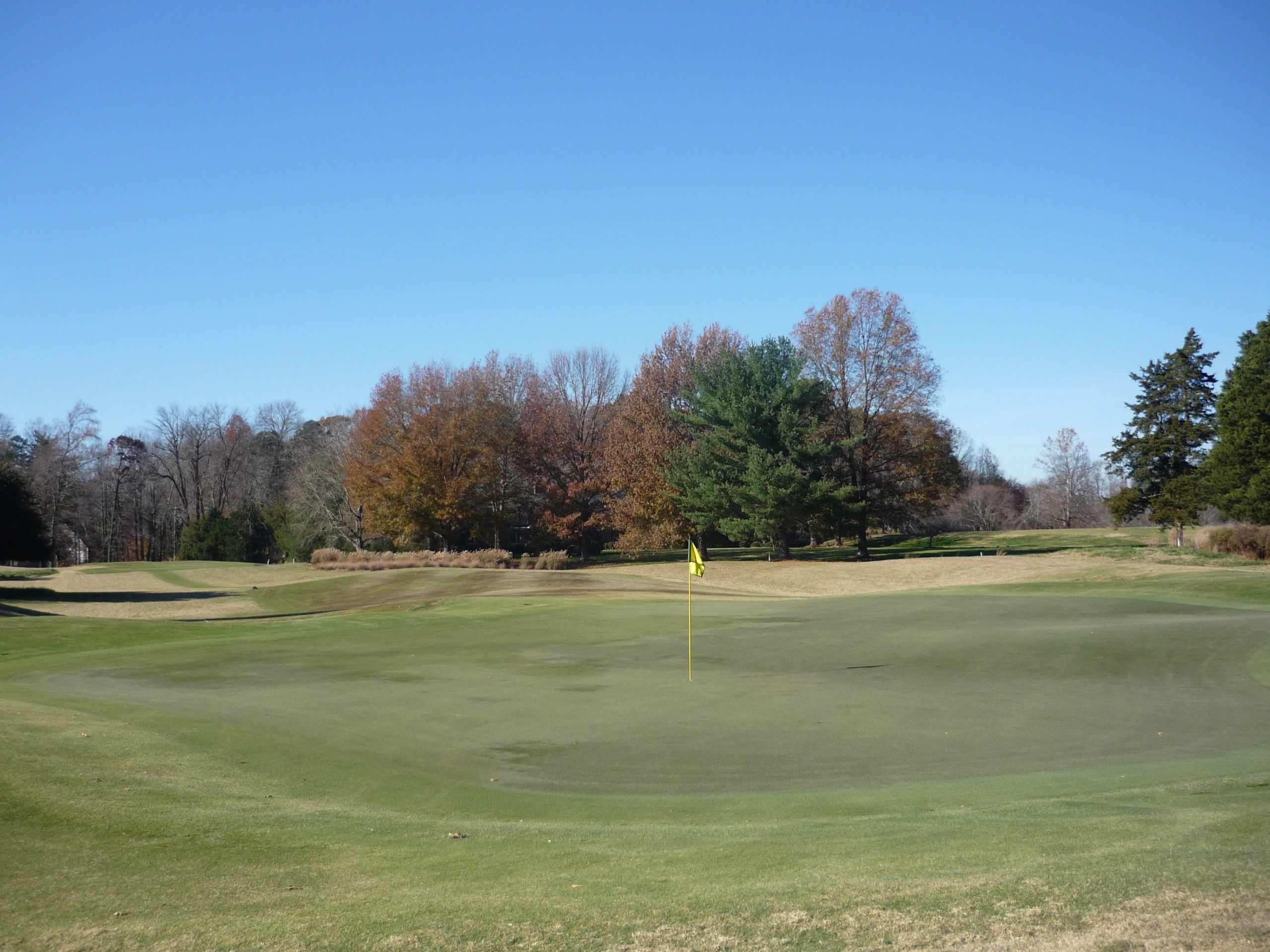
Hole 18 – 544 yards – Par 5
The final hole makes you earn it. The fairway bunkers are in play and can make it difficult to advance the ball down the fairway.
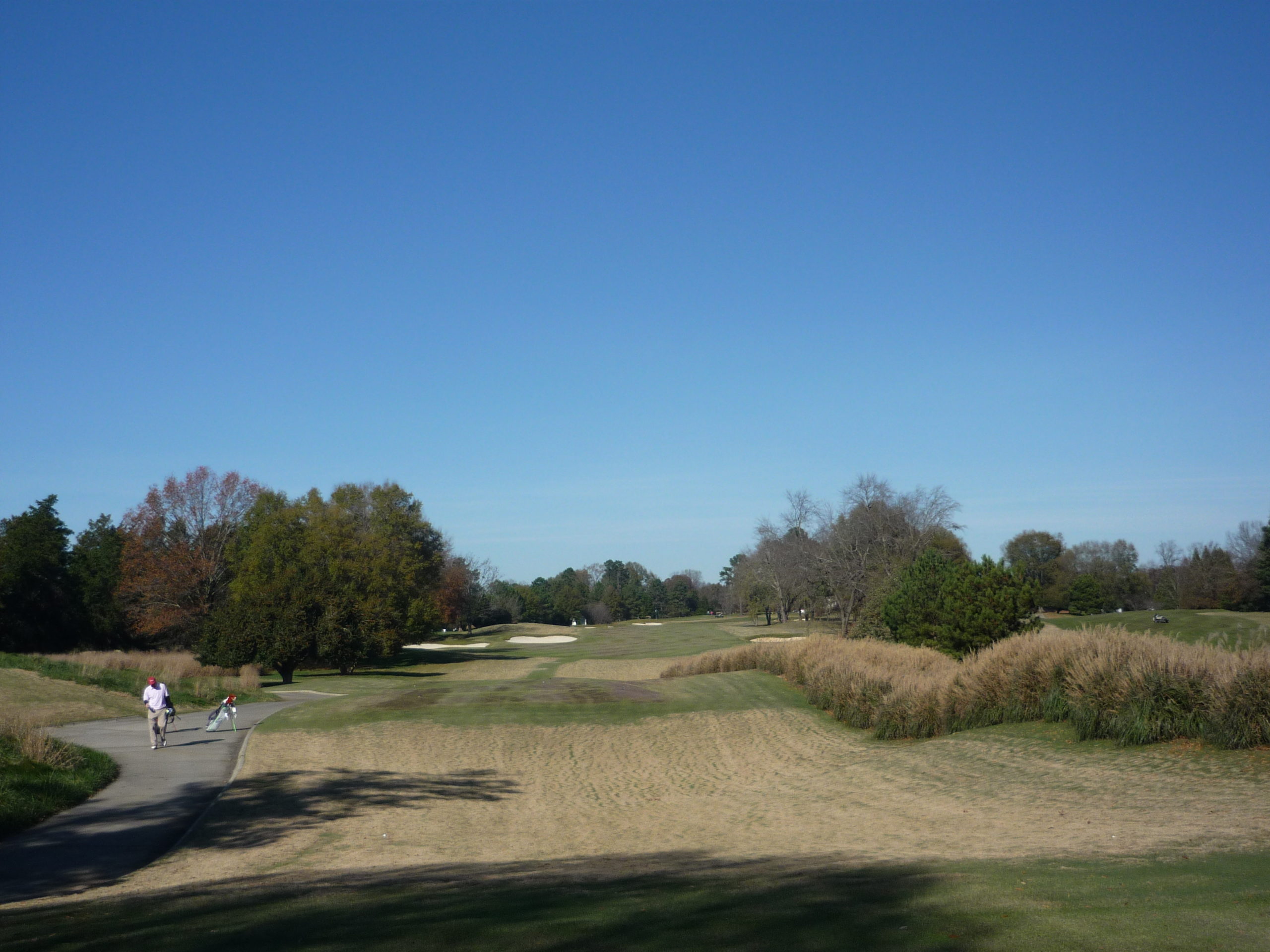
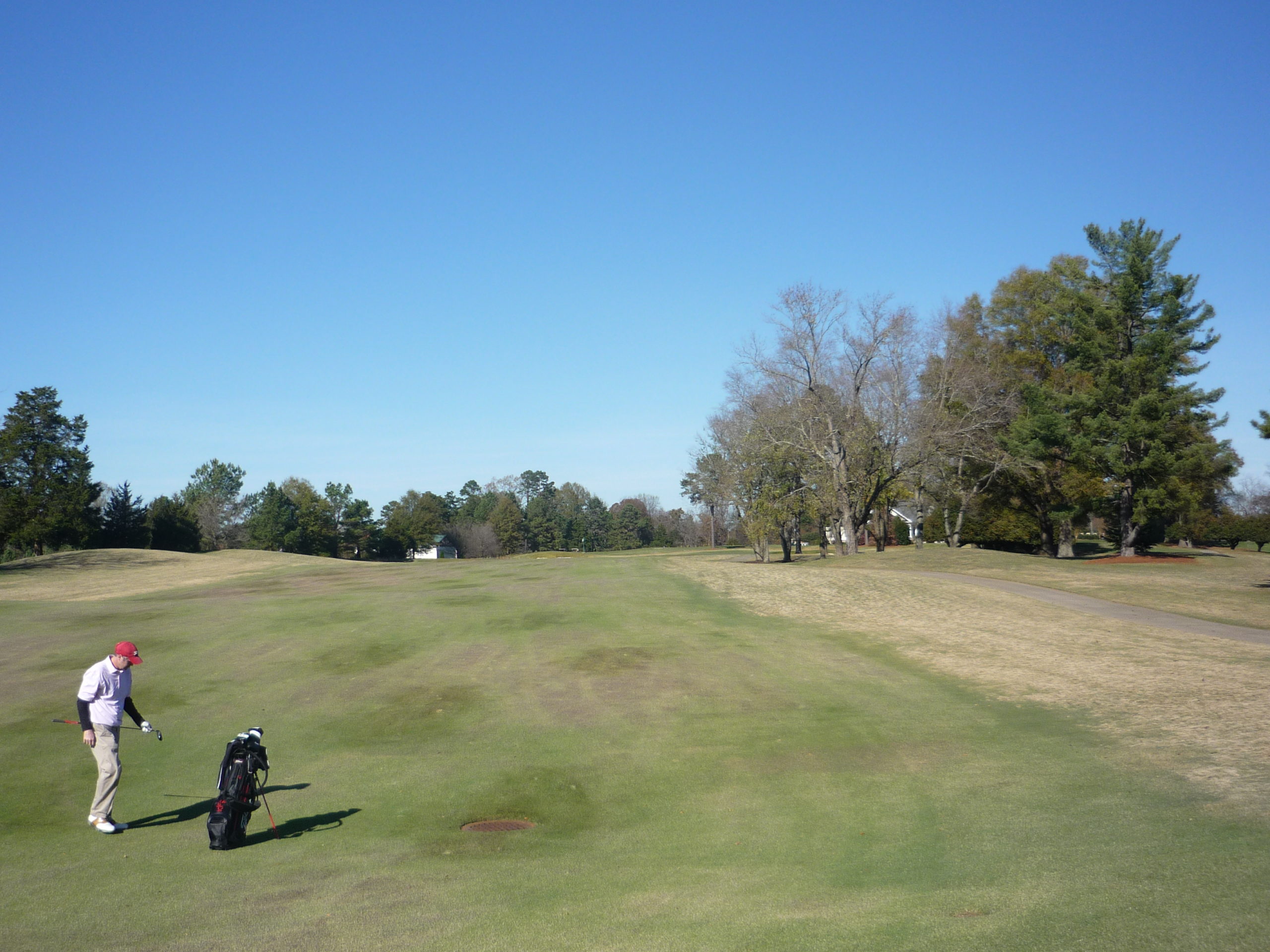
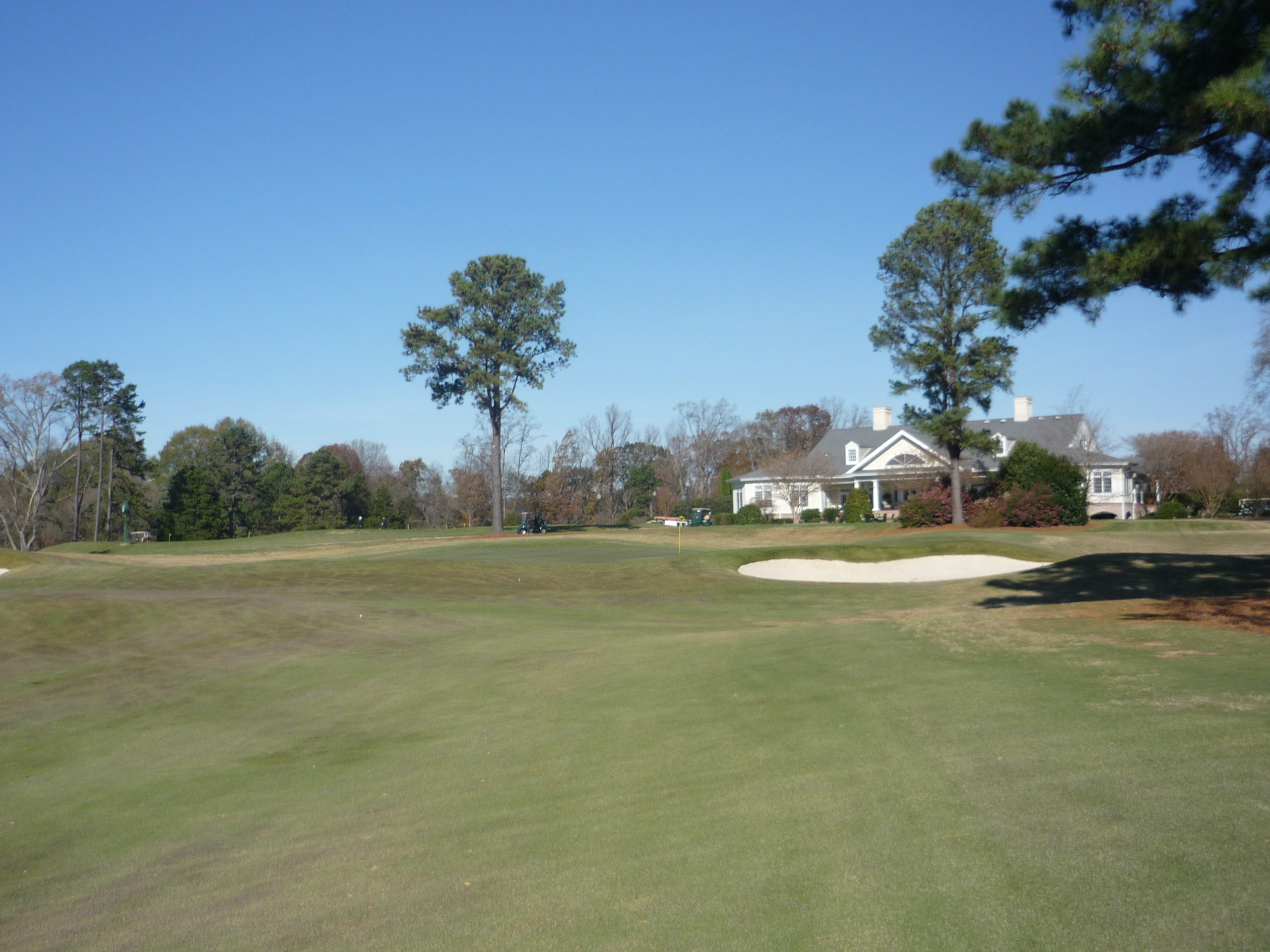
Be cognizant of the pin position here since the slopes will filter your ball all over the green.
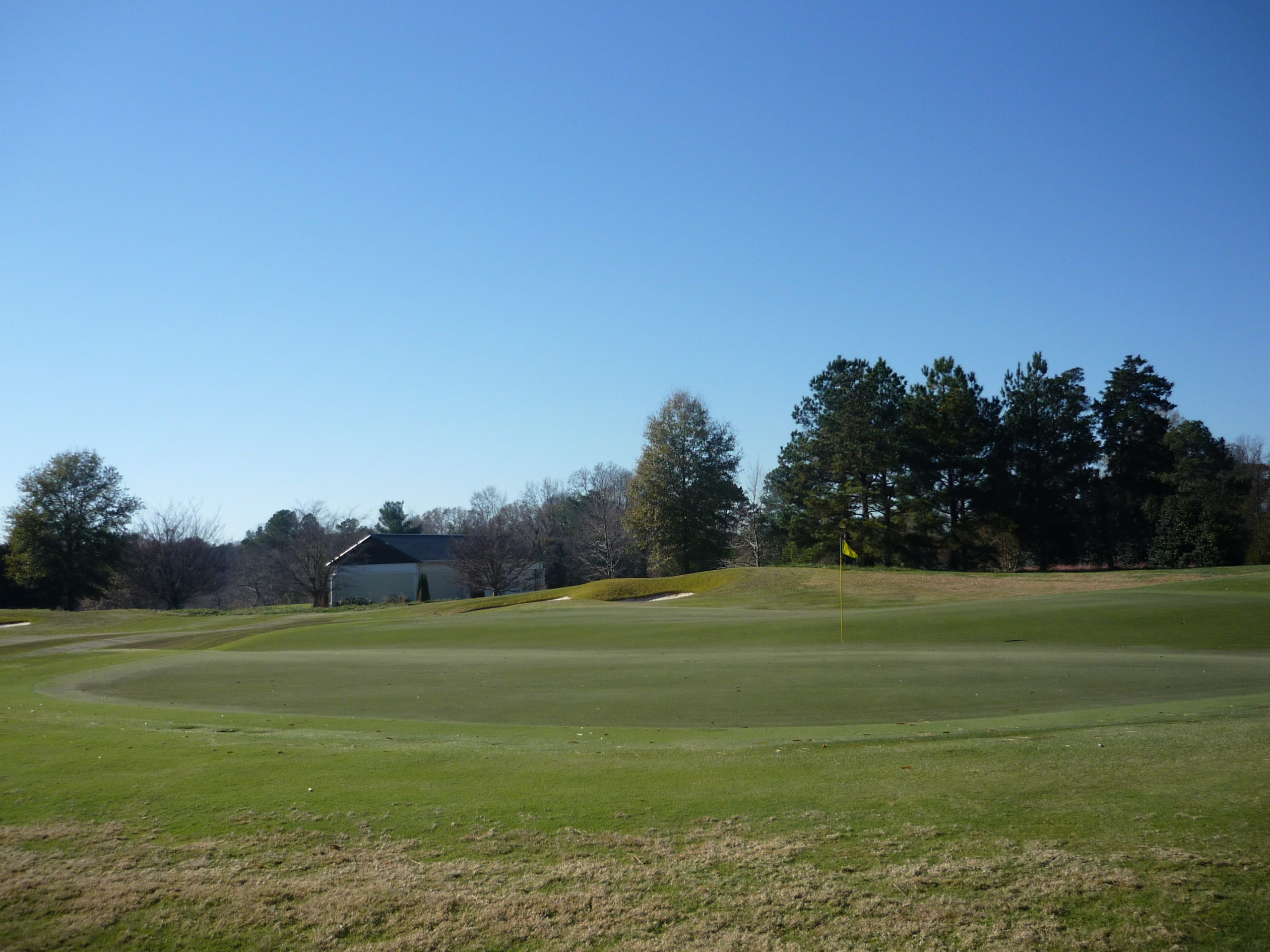
As the photos illustrated, Greensboro Country Club’s Farm Course is a stern test. I enjoyed the greens the most. They were in fantastic shape with interesting contours. The course is a great mix of holes that ask you to move the ball both ways to take full advantage. I can see the course being an absolute blast when it is playing firm. That being said, I still enjoyed it after a big rain!
